March 25 - 31, 2018: Issue 353
Pittwater Fishermen: Great Mackerel, Little Mackerel (Wilson's Beach - Currawong) and The Basin
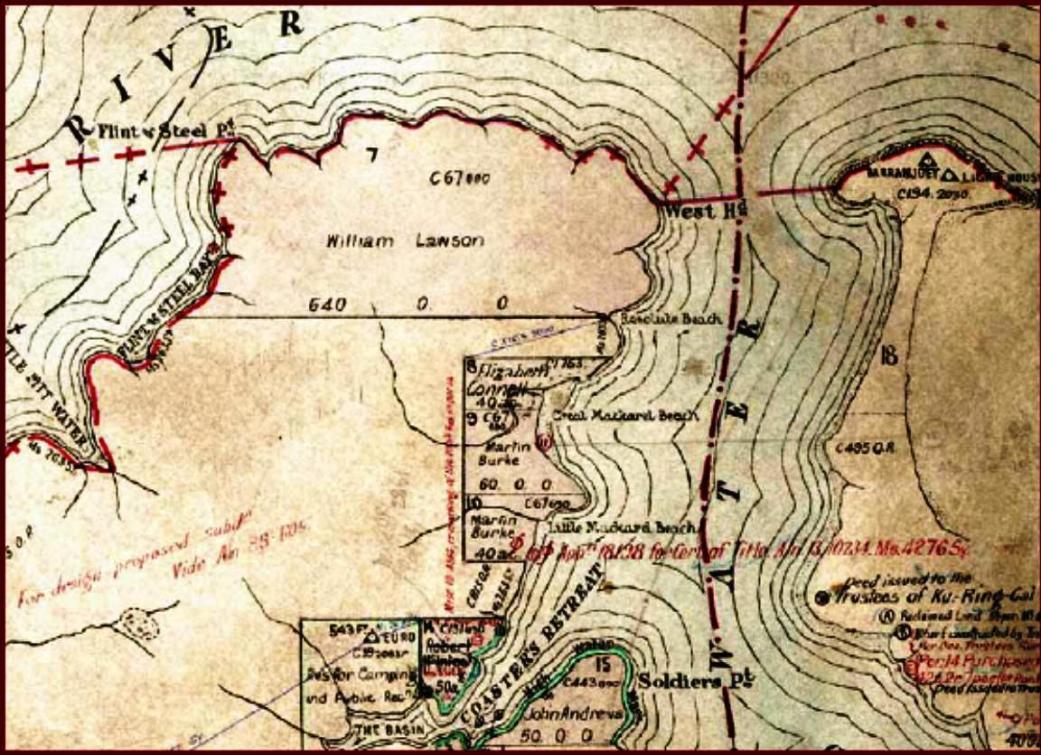
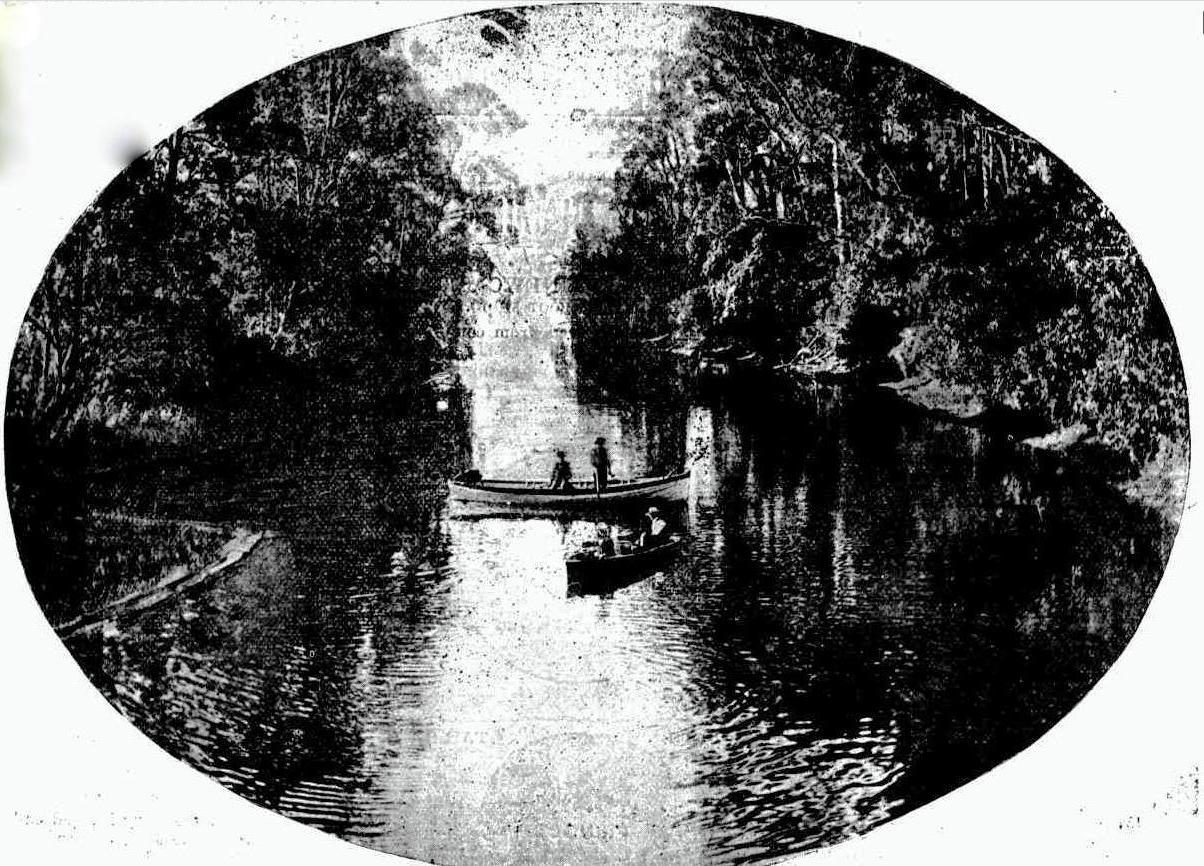
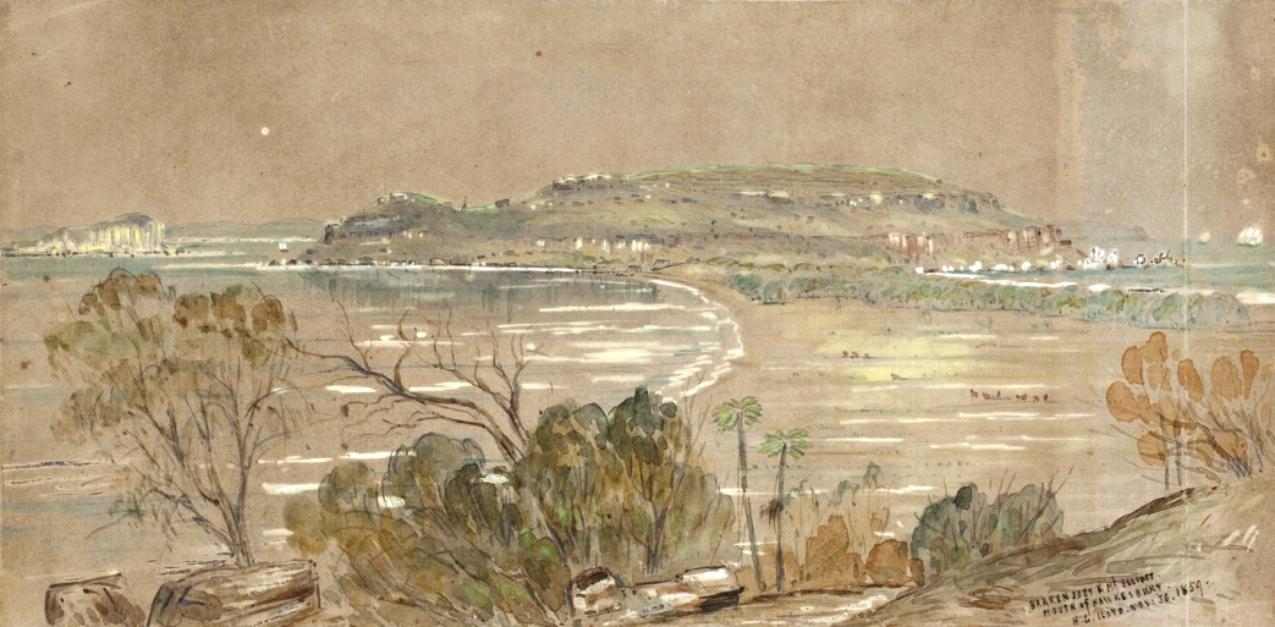
... At the seaward end of the outer beach, where parties find safe swimming water, the trustees are proposing to place another wharf of stone, and to run from it a netting to prevent sharks entering a bathing enclosure. Opinions amongst yachters and motor-boaters vary respecting this. Some condemn the proposals entirely; preferring the natural surroundings. Others say the idea is good, as they have always felt they would like to swim in a bit deeper water, but they feared the huge sea-sharks that swim around Barranjoey and West Head and chase whiting and red-bream up into the Basin. The trustees are not obstinately wedded to any proposal. Inquiry shows that they welcome ideas, especially artistic ones allied with practicability, but they do not have them given to them often. They find critics wait till something is done, and then fall upon it with scorn. Any yachtsman, therefore, who has a thorough appreciation of the necessities of the Basin and puts his ideas into writing, will receive attention. For instance, another improvement meditated is the planting of trees about tho 20 acres surrounding Peggy's house. The trees on the camping area are not as beautiful as they might be. One proposal before the trustees was to plant an avenue of pines along tho outer edge of the camping ground — the straight line business again— and another to plant here and there a few silverbark tea trees, Port Jackson fig trees, and flame trees. The latter proposal seems to find the greater favor amongst those who visit the Basin oftenest. ...THE BASIN (1915, May 30). The Sun (Sydney, NSW : 1910 - 1954), p. 23. Retrieved from http://nla.gov.au/nla.news-article229334724
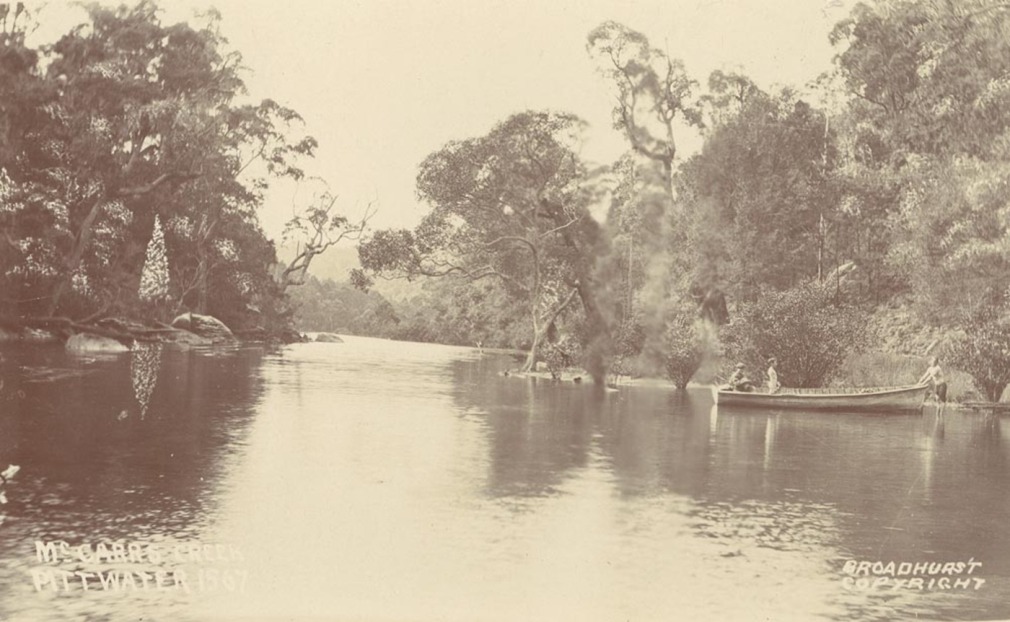
Head of McCarrs Creek, Pittwater, 1879-1892 Image Number; a106169, Courtesy of State Library of NSW.
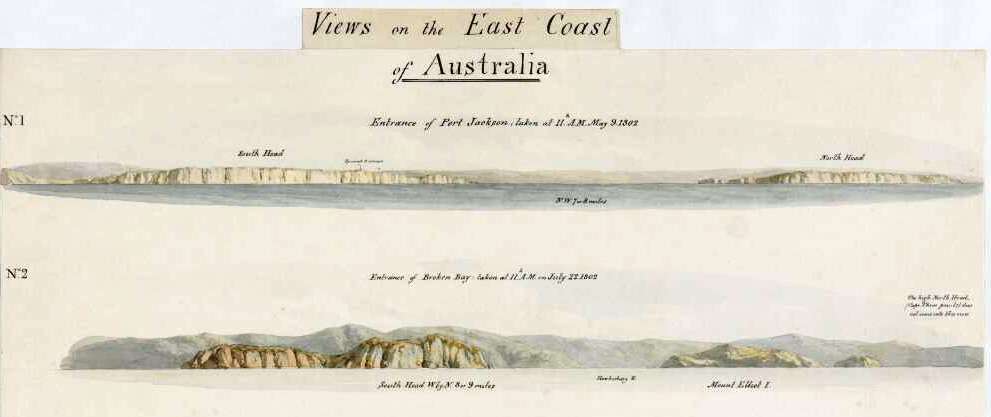
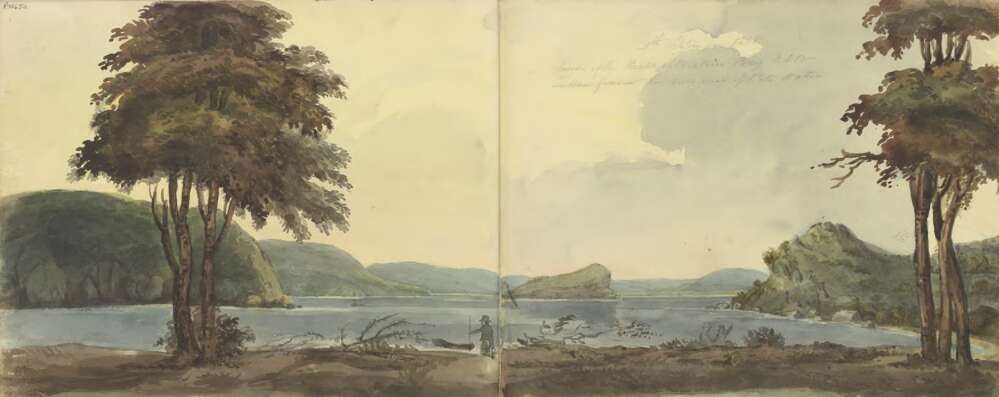
John Doyle, the tenant on what is now called Avalon Beach lands, preceding the Collins family, drowned in Pittwater on January 20th, 1841:
INQUEST.-An inquest was held on Tuesday morning at the house of Mr. Murphy, the sign of the Bard's Legacy, Queen's Wharf on the body of John Doyle, who was accidentally drowned by the upsetting of a boat at Pitt Water, on Wednesday, the 20th instant. The body was found at Broken Bay on Monday last by some fishermen,who brought it to Sydney. It appeared from the evidence that the persons who were in the boat along with deceased at the time the accident occurred, as well as deceased himself, were perfectly sober, and the jury returned a verdict of accidental death. THE REGATTA. (1841, January 28). Australasian Chronicle(Sydney, NSW : 1839 - 1843), p. 3. Retrieved from http://nla.gov.au/nla.news-article31730651
Records indicate that Mr. Doyle was not the only man to lose his life in small boats on Broken Bay that year:
James M'Quillan. Pilot, Brisbane Water, was unfortunately drowned while crossing from Pitt Water to Brisbane Town, by his boat being caught in a squall and capsizing. Mr. M'Quillan is much regretted Summary of Public Intelligence. (1841, July 31). The Sydney Gazette and New South Wales Advertiser (NSW : 1803 - 1842), p. 2. Retrieved from http://nla.gov.au/nla.news-article2554037
A few days ago, as Mr. James M'Quillen, the pilot at Brisbane Water, was crossing in his own boat from Pitt Water to Brisbane a squall upset the boat, and Mr. M’Quillen and a man named George Ford,who was with him at the time, were both unfortunately drowned. The body of Mr. M’Quillen was found lying upon the beach, but the body of Ford has not since been heard of. Insolvent Debtors' Court. (1841, July 31). Australasian Chronicle (Sydney, NSW : 1839 - 1843), p. 2. Retrieved from http://nla.gov.au/nla.news-article31732459
Mary Ann, 9 (tons), Farrell, from Pittwater, with 250 bushels lime, 8000 shingles, and 1 ton potatoes Harriett, 15, Crause, from Brisbane Water, with 50,000 shingles, and 1000 feet timber, Trial, 14, Robinson, from Brisbane Water, with shells ; Mary, 15, Turner, from Brisbane Water, with lime ; Twible, from the Hawkesbury, with 4 hogsheads brandy, and 700 bushels maize ; COASTERS INWARDS. (1842, August 17).The Sydney Morning Herald (NSW : 1842 - 1954), p. 3. Retrieved from http://nla.gov.au/nla.news-article12408120
Brown, from Brisbane Water, with 9,000 feet cedar ; Mary Ann, 9, Farrell, from Pittwater, with furniture and shells COASTERS INWARDS. (1842, November 21). The Sydney Morning Herald (NSW : 1842 - 1954), p. 2. Retrieved from http://nla.gov.au/nla.news-article12409729
Mary Ann, 9, Wilson, for Pittwater and Port Aiken, In ballast; COASTERS OUTWARDS. (1842, December 22). Australasian Chronicle (Sydney, NSW : 1839 - 1843), p. 3. Retrieved from http://nla.gov.au/nla.news-article31738315
Swan, 9, Wilson, from Pittwater, with shells COASTERS INWARDS. (1843, January 14). The Sydney Morning Herald (NSW : 1842 - 1954), p. 2. Retrieved from http://nla.gov.au/nla.news-article12424818
Mary Ann, Noon, from Broken Bay, with shells; Alexander, 10, M'Guigan, from Pittwater, with shells; COASTERS INWARDS. (1843, March 28).Australasian Chronicle (Sydney, NSW : 1839 - 1843), p. 3. Retrieved from http://nla.gov.au/nla.news-article31739290
In 1843 the Broken Bay Customs station was opened at Barrenjoey under John B Howard to stop the estuary and its adjacent waterways being utilised by Smugglers. Visit Smuggling at Broken Bay by Shelagh Champion OAM. This was not without a false start:
PROVIDENTIAL DELIVERANCE.
On Wednesday last, a boat was picked in the vicinity of Bird Island by the steamer Thistle, on her passage from Morpeth. She had made signals to the steamer, which was instantly stopped for the purpose of affording succour. The boat was found to belong to the Customs, having on board Mr. Howard and a party of three men from the Custom's department, who had left Sydney in company with another boat, for the purpose of forming the new custom-house station at Broken Bay. After getting outside the heads, they had parted company, and a gale of wind coming on from the south-west, Mr. Howard's boat was driven off the shore, when, notwithstanding their most strenuous efforts, they could not make head-way towards the land. Captain Mullhall took them on board the Thistle, and also had the boat hoisted in, and brought them back to Sydney. Had the Thistle not passed about that time, there is every probability that the boat would have been 1 driven to sea and all hands been lost, having been already twenty-four hours short of provisions. The other boat, which had also three men on board, has not since been heard of, and fears are entertained for her safety. PROVIDENTIAL DELIVERANCE. (1843, April 29). The Colonial Observer (Sydney, NSW : 1841 - 1844), p. 989. Retrieved from http://nla.gov.au/nla.news-article226361800
A description from 1850 also tells us the shells (formerly middens) brought in by the tons through coasters is exhausted;
PITTWATER, BRISBANE WATER, AND THE HAWKESBURY.
These places, although near Sydney, are but little frequented by Sydney people, except by such of the coasting traders as go there for grain, timber, and shells. No part of the country, however, affords a better field for the home tourist toil-worn citizen who is able to spare a days from his ordinary avocations will find it much cheaper, as well as more healthful to take a voyage in this direction with his family than to visit the interior towns. During, the summer season, there are many small coasters lying idle at their moorings in consequence of their having little or nothing to do, and these, with a couple of seamen to work them, may be hired for a mere trifle for the task. Several days will be occupied in the journey upwards, but on arriving at Windsor the tourist may return to Sydney in a few hours, leaving the men to bring back their vessel. The voyage from Sydney to Broken Bay, does not occupy more than four hours, if the wind be fair, and the rest of the trip is in smooth water, so that even those persons who are apt to suffer much from sickness, have very little to dread in such a journey as the one we have alluded to.
The coast between the north head of Port Jackson, and the south head of Broken Bay presents little or nothing worthy of notice except a large natural archway in the rocks a few miles from the latter place, which is generally known among the coasting traders, as "hole in the wall."
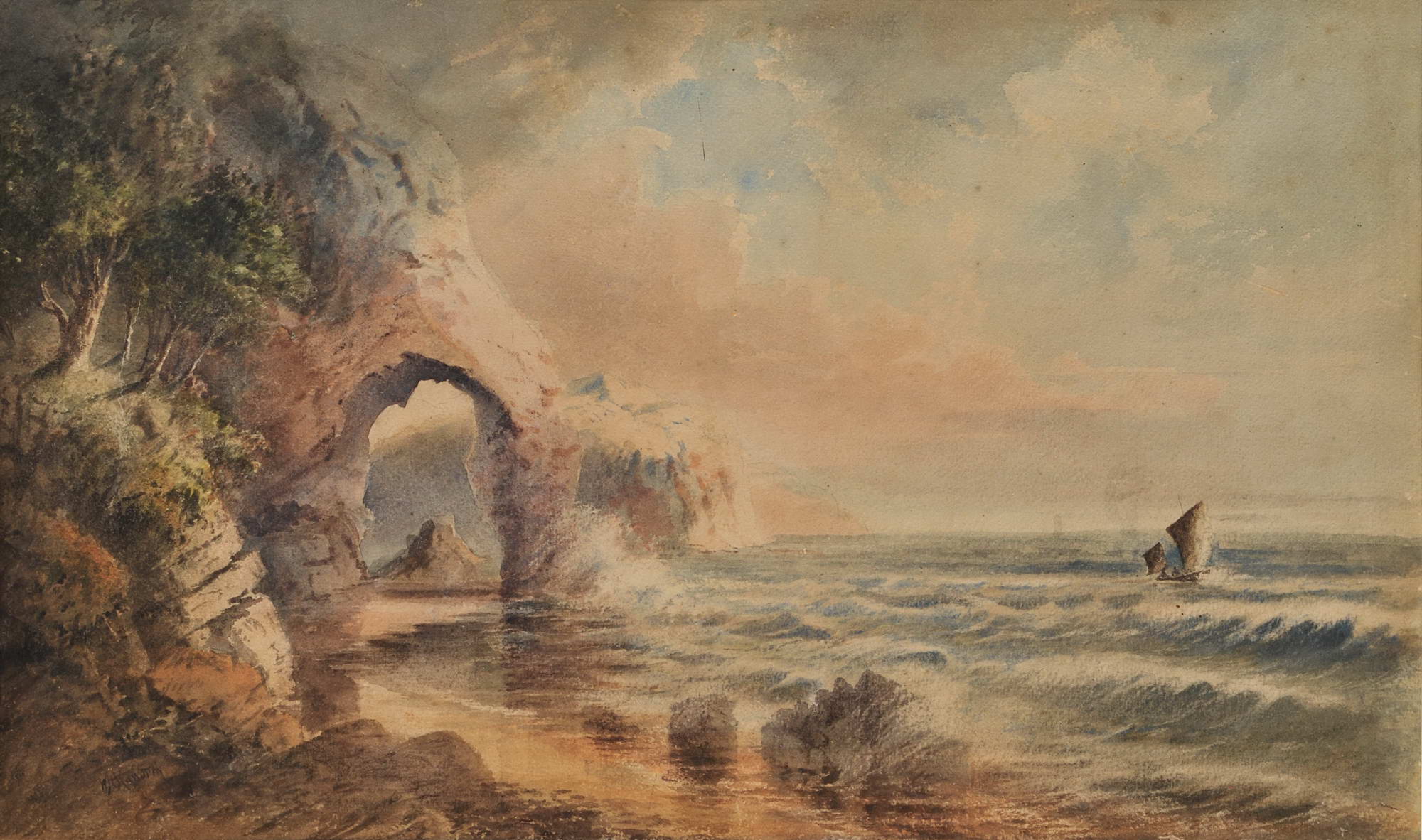
W.H. Raworth (Brit./Aust./NZ, c1821-1904). St Michael’s Arch, NSW [Avalon] c1860s. Watercolour, signed lower left, obscured title in colour pencil verso, 34.2 x 56.5cm. Tear to left portion of image, slight scuffs and foxing to upper portion. Price (AUD): $2,900.00 at:https://www.joseflebovicgallery.com/pages/books/CL181-53/w-h-raworth-c-brit-aust-nz/st-michaels-arch-nsw-avalon
Baranjuee, the south head at Broken Bay, is also the eastern head of Pittwater. It is a small peninsula of tall cliffs connected by an isthmus of low and tolerably fertile land with the hilly county which separates Pittwater from the sea. Pittwater is not unlike Port Jackson in its general features, and extends for about ten miles to the southward, branching off into a number of picturesque bays and coves. There are few habitations on the banks of this estuary, these few are situated near its head. Several small houses may be seen, which have been inhabited by men employed in the production of Lime but which have been abandoned in consequence of the supply of shells having become exhausted. Near the head there is s small island, which contains a number of fruit-bearing peach trees, the remains of former cultivation.
Under the headland of Baranjueo on its landward side, just at the entrance of Pittwater, is the Custom-house station. The site has been admirably chosen for this purpose. The heads around protect the station from tempestuous weather and furnish look-out posts for the officer and his men, from whence a view is commanded of all the surrounding land and water, that no vessel can pass in that vicinity without their seeing it. The station has a picturesque appearance from the water, and a closer approach does not, as in many instances, diminish its attractions.
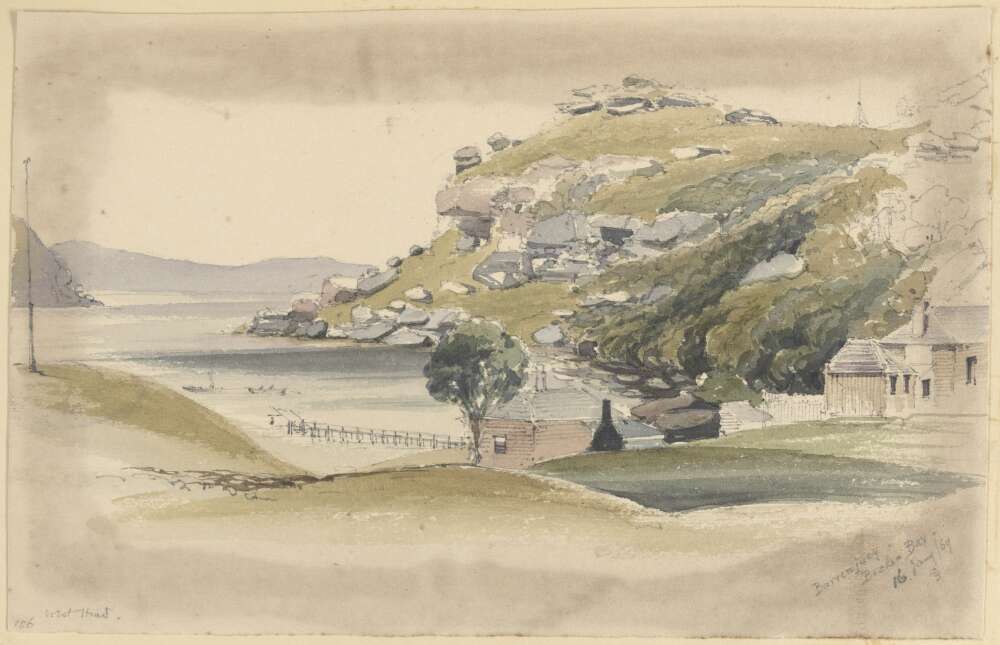
Slade, George Penkivil. (January 16th, 1869). Barrenjuey [i.e. Barrenjoey], Broken Bay Retrieved from http://nla.gov.au/nla.obj-139006957
A very good garden has been formed in the rear, but owing to the rocky nature of the soil, this must have been a work of great labour and perseverance. Fresh water however, is unfortunately rather scarce. It is obtained from the high rocky land above the station, and conveyed to the houses by meanz of troughs made of the cabbage-tree. At the present time, owing to the long continued drought, and to the great heat of the weather, there is no flow of water along the troughs during the day, but during the night sufficient water runs down to supply the station.Mr. Collyer, the gentleman who at present commands at this place, has acquired a well-merited popularity throughout the settlements around. In the performance of his duties he is indefatigable, and having succeeded in putting down the smuggling trade and other irregularities which went on formerly pursued to a great extent in this quarter, he has, of course, annoyed some of the inferior class of settlers, but his exertions are beneficial to the many, and to the coast traders he often renders most valuable assistance. A few weeks only have elapsed since a vessel was driven ashore near Mount Elliott, which would have become a total wreck but for the prompt and able assistance of Mr. Collyer and his men, by whom she was got off before she sustained any material injury. There are five men attached to the station. The coxswain, well-known among the settlers and the coasting traders by the familiar name of Larry, is a fine smart seaman, well acquainted with the surrounding waters. On the occasion just referred to he was particularly active.
At present there is but one regular trader to Pittwater, which is run by a Mr. Anderson, who lives two or three miles above the custom house station, on the western shore of the estuary. The only traffic, we believe, is in shells, the produce of the Pittwater settlers being conveyed overland to North Harbour, and from thence in boat to Sydney. To Brisbane Water and the Hawkesbury, however, there is an extensive bade is agricultural produce and timber.. The their trade has fallen off a good deal, in consequence of the very low price at present given for the shells by the Sydney lime-burners, but many of the smaller coasters are still engaged in it. About Pittwater there is no great deal to be done in the way of shooting or fishing, but Brisbane Water and the Hawkesbury present great attractions in this way. there is a singular blunder in this respect in Wells' Gazetteer. He speaks of Baranjuee as the residence of one or two old fishermen, who supply the Hawkesbury as far as it is navigable. Now, there is no one living at Baranjuee but the Custom-house officer and his crew, and as for marketable fish, they are in that vicinity rather scarce, owing to the shallowness of the water, and perhaps also to the immense number of sharks which traverse it. The number and voracity of these monsters is almost incredible. They will run into the shallowest water in search of prey, and to bathe even in water knee deep is therefore dangerous in the extreme. The Hawkesbury, on the contrary, abounds with fish of every description. It is here and on the north side of Broken Bay that the lobsters which are sent to Sydney are for the most part procured. They are taken generally during the night, and are kept in a sort of pen erected in shallow water, until an opportunity occurs of sending them to market. The most remarkable object in Broken Bay is a small .rocky island called Mount Elliott. The cliffs are a great height, and are the residence of an extensive colony of goats, the progeny of a few individuals which were placed there to feed in times gone by. There is no water here beyond what lodges in the hollows after rain, but the hairy settlers on the island find sufficient aqueous nourishment in the moistened herbage. The scenery both of Brisbane Water and of the Hawkesbury is beautifully picturesque. The latter is pre-eminently so. In the course of the hundred and twenty miles of navigable river between Broken Bay and the town of Windsor, there is every -variety of scenery. The overhanging rock, the man-grove swamp, the bank clothed with willow and casuarina, the grassy slope, the field of waving corn, and the cheerful orchard. Sometimes the river winds amidst groups of cottages and mansions; at others, its banks exhibit the most wild and romantic features. The Hawkesbury and its tributaries water an immense tract of country some of these tributaries are navigable to a considerable distance. The map of Cumberland attached to Wells' Gazetteer makes up, in its minute correctness as to the course of the Hawkesbury for the trifling blunder committed in the text as to the settlement and trade of Baranjuee, and may be depended upon as a guide by persons navigating these waters. Settlers at Brisbane Water occasionally walk to Sydney, but the journey is a toilsome one. By getting to the head of Pittwater, the distance is diminished to about twenty-two miles ; but the route is an awkward one for a person unaccustomed to bush travelling, there being no other guide than cart tracks, which are very apt to mislead, as there are routes to be avoided, both to the right hand and the left. Old bushmen will tell you that it is impossible to miss the road; but you will find it exceedingly possible to do so when you come to a spot where three or four tracks diverge in various directions. It is better, if possible, to have a companion who has crossed the country before. The journey is an interesting one. On the road there is some pretty scenery; and in several places there are splendid views of the ocean. Two lakes (or lagoons, as they are here called) are passed on the road; the largest of which, Narrabeen, is several square miles in extent, and has many small islands on its surface. It is for the most part shallow, and abounds with fish, which might be taken with the greatest ease, as a net could be hauled through any part of it. at present it is separated from the ocean by a barren sandy neck; but after floods this is covered, and the traveller is obliged to wade through the water for a considerable distance.
Between Pittwater and Middle Harbour there are several settlers residing at intervals of a few miles, who are very hospitable to passing travellers and will readily put them on their way. At Middle Harbour there is a ferry, kept by a person named Hillary. The place to which passengers are ordinarily taken is a point immediately opposite Hillary's residence; but any person who has walked from Pittwater will find it decidedly to his advantage to land gat the Willoughby Falls. For this purpose he will, for a few pence extra, be conveyed some two or three miles up of the most picturesque arms of Middle Harbour, and will save three or four miles of very bad road, From the falls there is an undeviating path, by which either of the steam ferries on the North Shore can be reached in half an hour by a smart walker.METEOROLOGY. (1850, January 30). The Sydney Morning Herald (NSW : 1842 - 1954), , p. 2. Retrieved from http://nla.gov.au/nla.news-article12915324
the road now leading us across a long level piece of country that intervened between the sea and the waters of Creel Bay, until it brought us down to the margin of the latter. Arrived here, we had before us as pretty a marine picture as ever painter sketched, and as directly opposite to the one we had but so recently left as could be well conceived. The flat level land had here narrowed to some sixty rods in width, being backed by a heavily wooded range, the base of which was here and there encumbered by large masses of rock, from which the incumbent soil had been washed, and which now protruded in huge boulders, or lay out bare and detached from their native beds. On the margin of the bay were three little whitewashed slab huts with bark roofs, the passionate squalling of an infant that proceeded from one of them would have given evidence of their being inhabited, even if we had not seen two or three barelegged and barefooted children peering at us round the corner of the house. (To be continued.) MY HOLIDAY. (1861, September 2). The Sydney Morning Herald (NSW : 1842 - 1954), p. 3. Retrieved from http://nla.gov.au/nla.news-article13057913
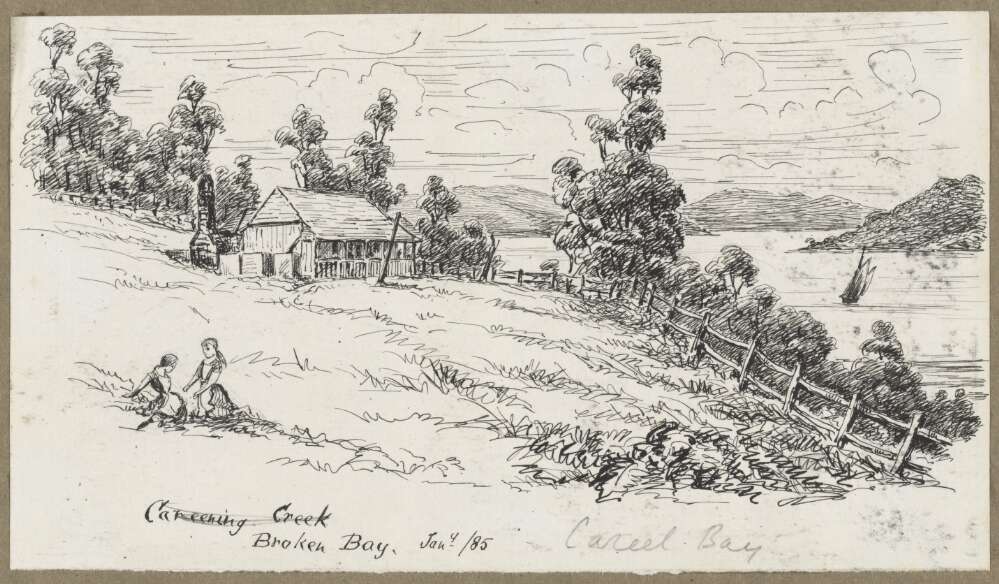
Graham, H. J. (January 4th, 1885). Careening Creek, Broken Bay Retrieved from http://nla.gov.au/nla.obj-135522526
This reports of people being on the water while living close to it as farmers, even when appearing solely due to losing their lives in the water, shows people were making a living out of fishing, to feed their families and to bring in income.
On the western shores, Mackeral, Little Mackeral, and into the Basin as well as Mc Carr's creek and along the shores of Lovett and Towlers, nets were placed for certain tides - the fishermen knew where the fish would run. There were also oyster leases adjacent to these shores from the turn of the 20th century and well into the first half of its decades.
Muster Records, required by the Governor's from 1795, list who was where in Pittwater and even their occupation although 'seaman' didn't always mean a yearly toil in fields. The Wilson family, third in a line of people subjected to the machinations of the Farrells of Newport, and the subsequent trial that took place, also record one fisherman living at the Basin-Bason by around 1862 and that this occupation was one they also did in combination with running farms and livestock. From the trail where the Wilsons had to take the farrells to court, they being third in a line of people persecuted by the Newport clan for daring to occupy the Mona vale farm after the Foleys and Therrys when the Farrells had previoulsy made use of the land and its grasses:
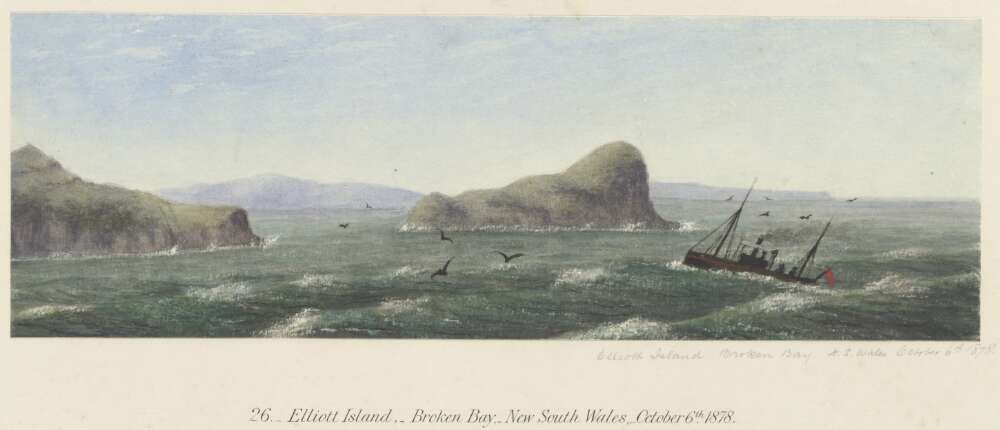
Fish are biting freely just now at Towler Bay, adjoining Kurangai Chaise. Parties should bear this place in mind, as the terms are very reasonable. Boats, bait and pilot are included in the first cost. It is necessary, however, that intending parties write to Mr. Lloyd, Pittwater, the proprietor, so as to enable him to hare a boat in waiting at Church Point. FISH OH! (1900, December 19). Sydney Sportsman (Surry Hills, NSW : 1900 - 1954), p. 7. Retrieved from http://nla.gov.au/nla.news-article167250793
At the Hawkesbury River black bream are now in good condition. During the week about 28 baskets were caught by the net-men at Mackerel and Patonga Beaches. They are biting well off the rocks at Flint and Steel the lower portions of the main river, and Pittwater.
Blackfish are also in prime condition, and in quantities of good size. Many good catches have recently been made, with the rod. They are biting well off all the rocky shores, especially between Mud Island and the river entrance. FISHING NOTES. (1909, June 19).Evening News (Sydney, NSW : 1869 - 1931), p. 7. Retrieved from http://nla.gov.au/nla.news-article115497876
IT is hereby notified, for general information, that the undermentioned persons have applied to LEASE for OYSTER CULTURE the portions of land set opposite their respective, names. Tracings, showing the positions of the several portions enumerated, may be inspected at this Department dally (excepting Saturdays), between' 11 and 3 o'clock, and on Saturdays between 11 and 12 o'clock. Any person may, by memorial to the Board of Fisheries, within thirty days from the date of tills Notice, and on grounds to be stated in such memorial, pray that leases of the portions may not be granted, J.-A. BRODIE, Secretary,
PITTWATER. ALBERT EDWARD HEATON.-100 yards, Parish Narrabeen, on the southern side of Pittwater, about 100 yards easterly from the Government Wharf, fronting Ben Crew's portion No. 20 of 80 acres. Advertising. (1904, May 4). The Sydney Morning Herald(NSW : 1842 - 1954), p. 4. Retrieved from http://nla.gov.au/nla.news-article14617398
WILLIAM SYKES 300 yards Parish Narrabeen, on an eastern shore of Pittwater, near the northern entrance to Crystal Bay, and fronting R Melville's portion No 10 of 60 acres
WILLIAM SYKES 200 yards Parish Narrabeen on an eastern shore of Pittwater, near the southern entrance to Crystal Bay at Haystack Point. Advertising. (1905, July 6). The Sydney Morning Herald (NSW : 1842 - 1954), p. 5. Retrieved fromhttp://nla.gov.au/nla.news-article14708916
Pittwater - erection of a weatherboard cottage at Mona Vale Pittwater Plans at the office of Messrs. W P Martin and Company, 53 Young street, city, or Mr William Sykes, Newport. ADDITIONAL CONTRACTS. (1906, May 8). The Sydney Morning Herald (NSW : 1842 - 1954), p. 7. Retrieved from http://nla.gov.au/nla.news-article14770112
Schnapperman's Flat was on the Pittwater side, where a large colony of Chinese carried on a fish-curing business, now given up. Whilst the waters are not guarded by a licence to fish, the oyster-beds are. These are let out on lease, and the pleasure-seeker may not knockoff an 'ostrea edulis,' as the learned call the simple little bivalve about which the old boatmen seem to know so much. 'When an oyster has a family,' says a caster of nets, 'she does not have one at a time, like the elephant, nor half-a-dozen, like a cat, but she sends forth hundreds of thousands of spawn, who swim off to find a place on which to squat, and put up their own humpy. For choice, it is just at sea level, so if one gathers the oysters near the high-water mark, more will at once take up the vacant allotment, and evolve a home out of lime for themselves. In summer, the oysters are no good, being watery, and full of spawn; but Mrs. Oyster, having opened her shell, and 'shoved' out a shoal of youngsters, who have, to mind themselves from the start, soon gets back into condition.' Winter, spring, and autumn are the oysterman's harvest times, when farm profits are not coming in, so the river cocky who takes on a 'lease' has a side industry to help him along. THE HAWKESBURY SETTLER. (1905, March 4). Evening News(Sydney, NSW : 1869 - 1931), p. 9. Retrieved from http://nla.gov.au/nla.news-article112745420
Until there were so many that:
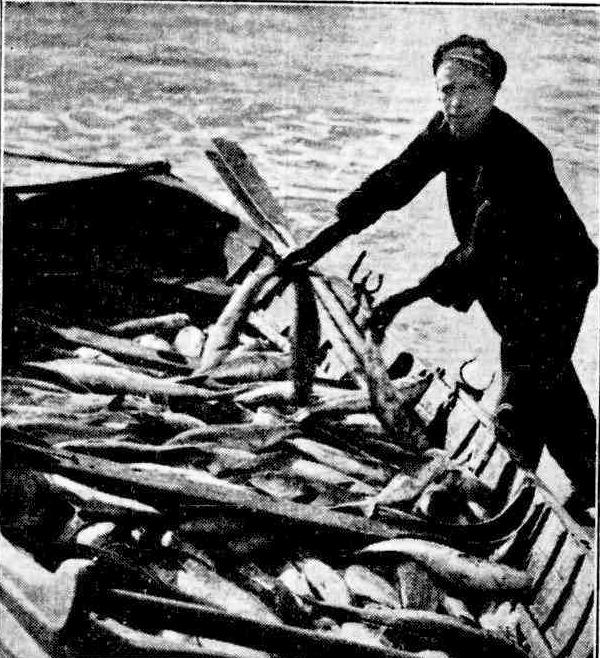
Wilson's Beach - Little Mackeral The Families
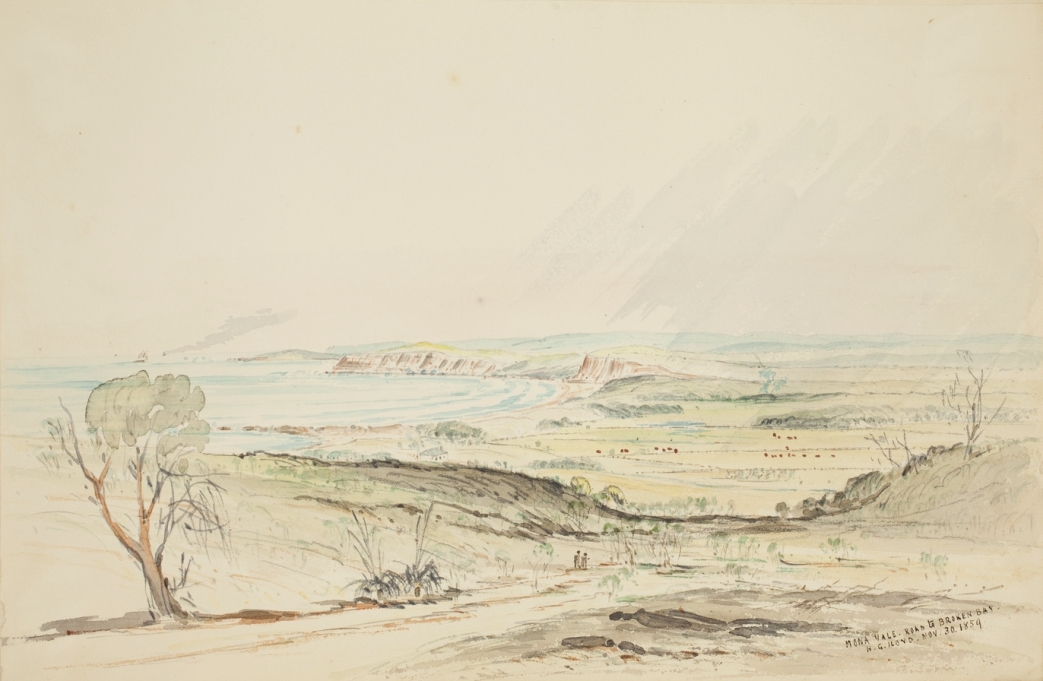
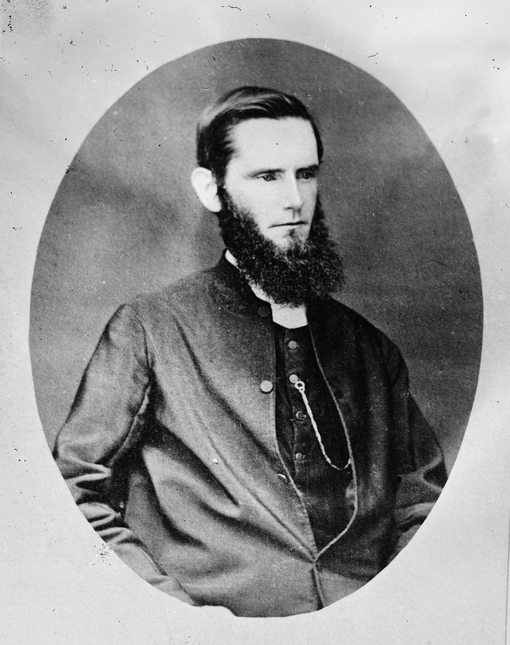
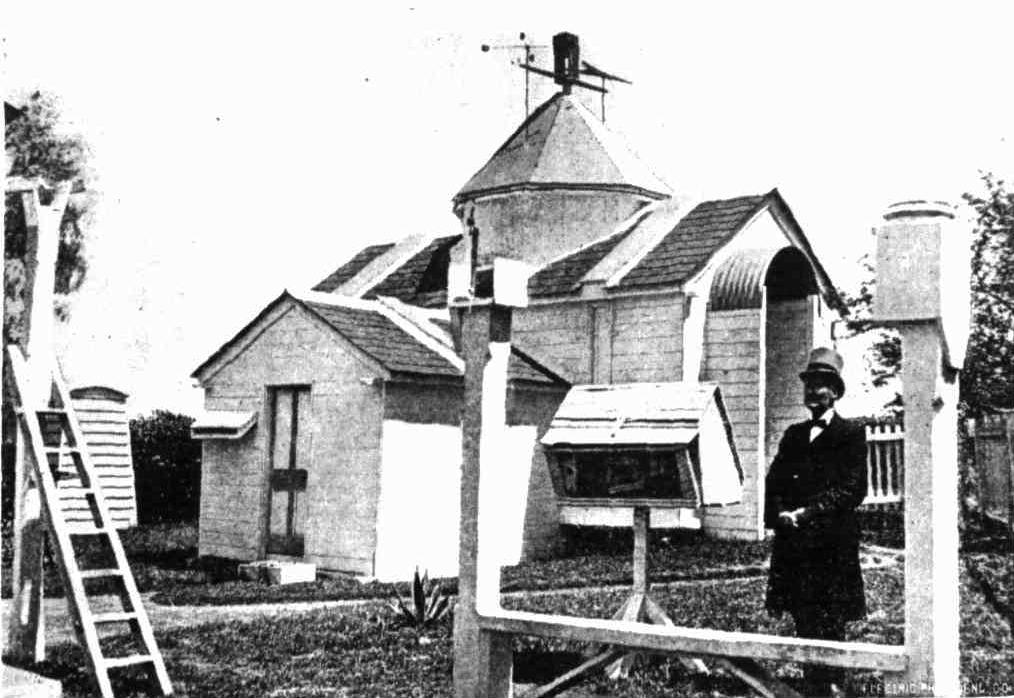
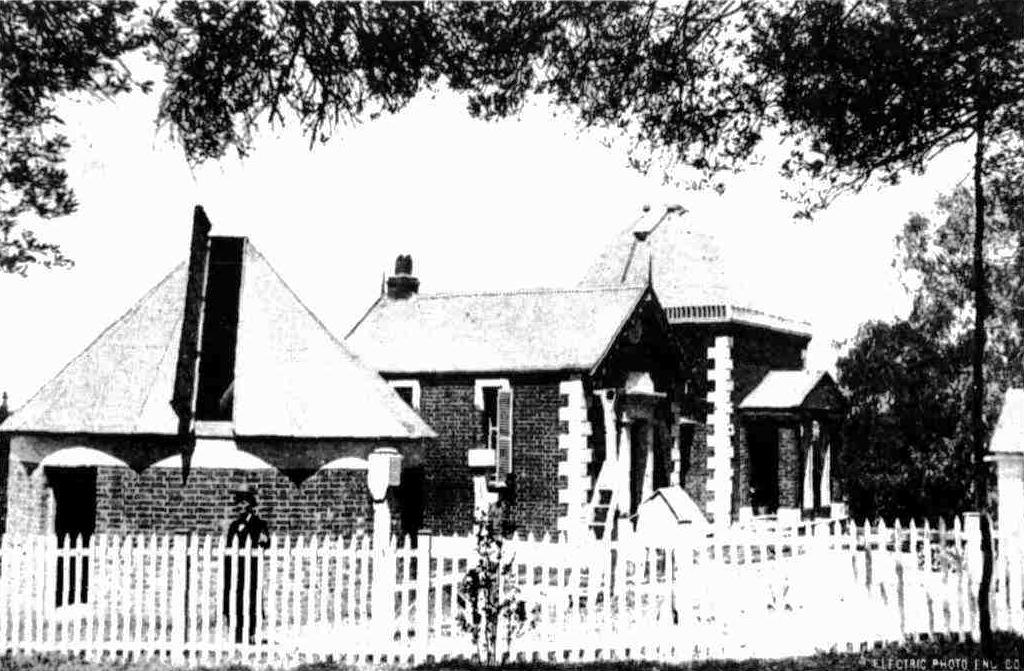
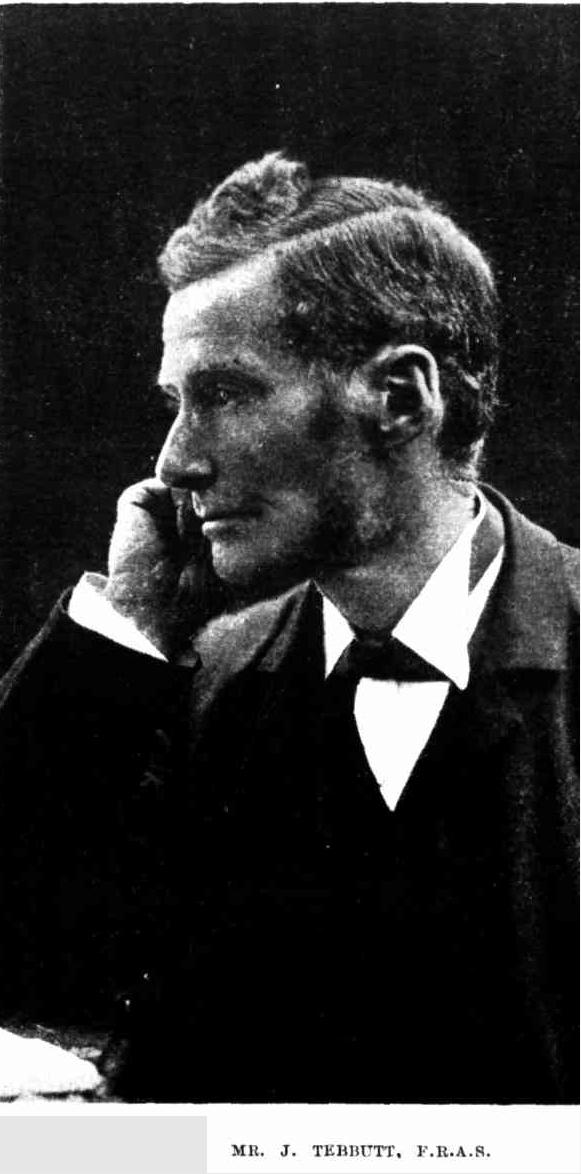
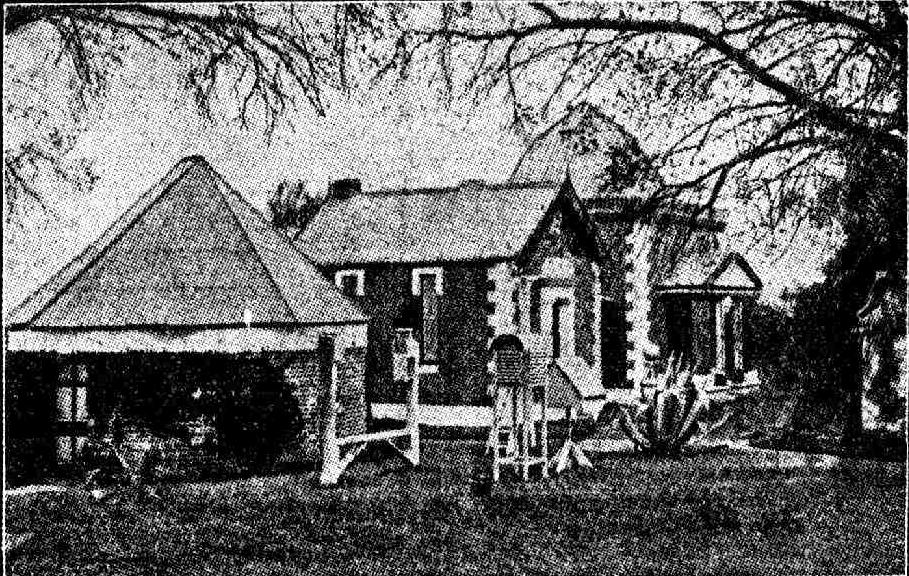
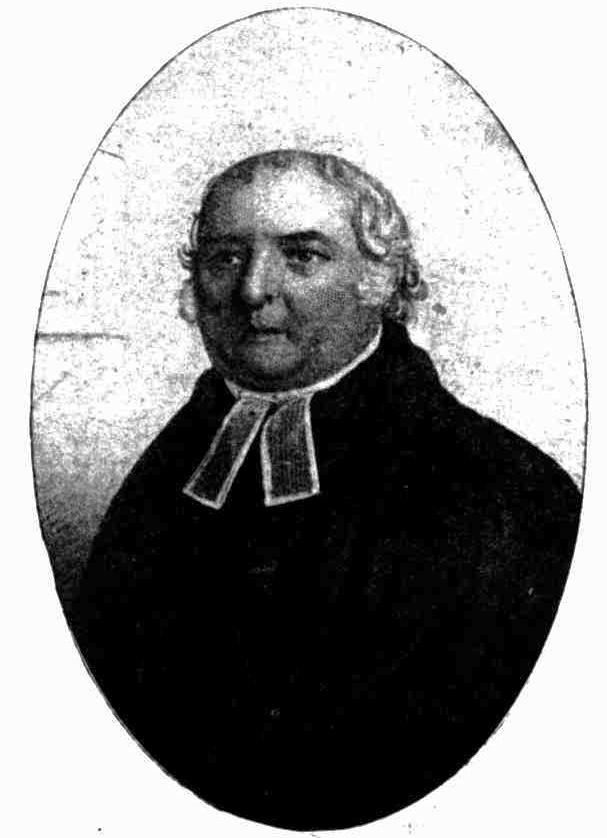
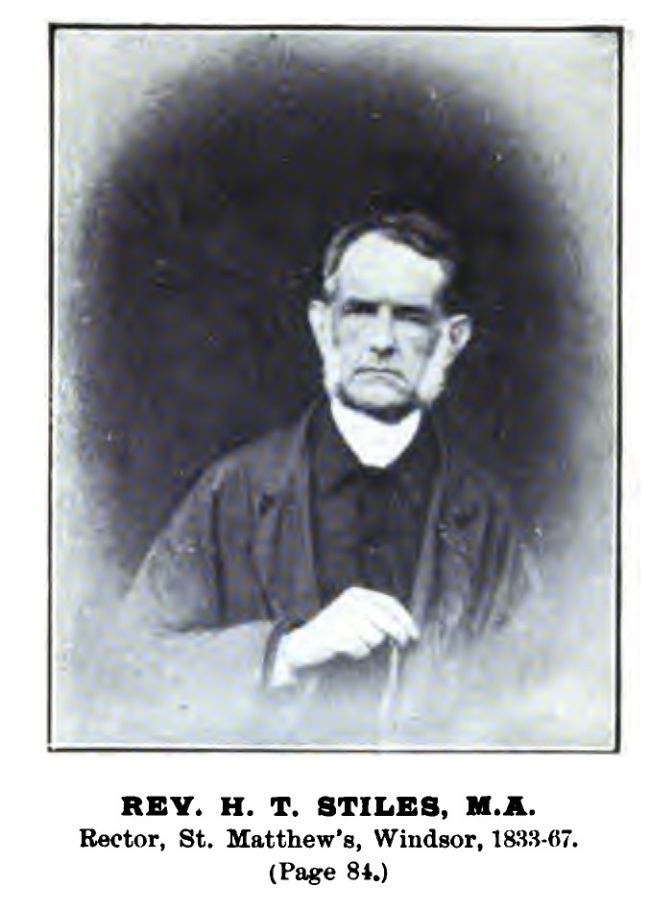
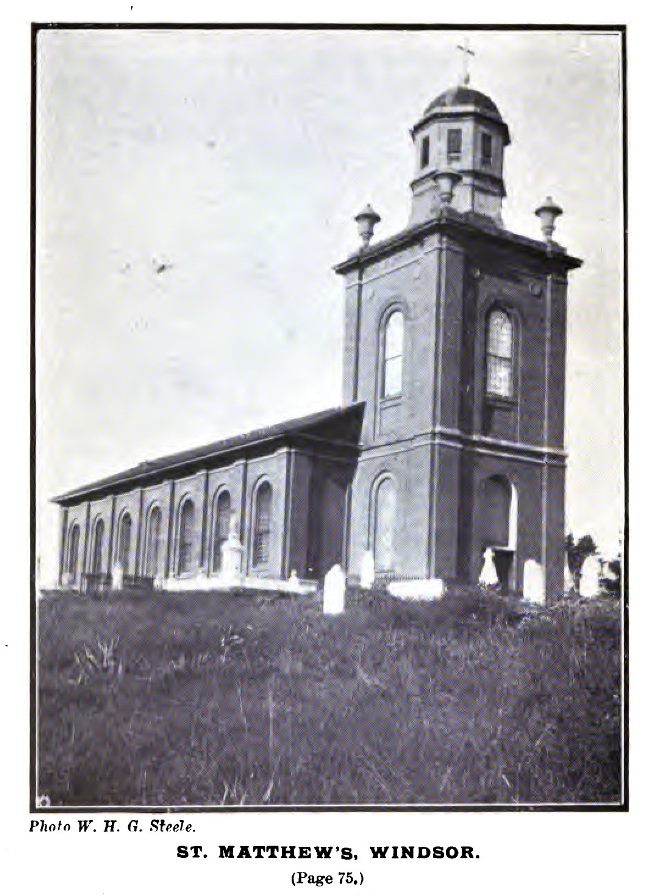
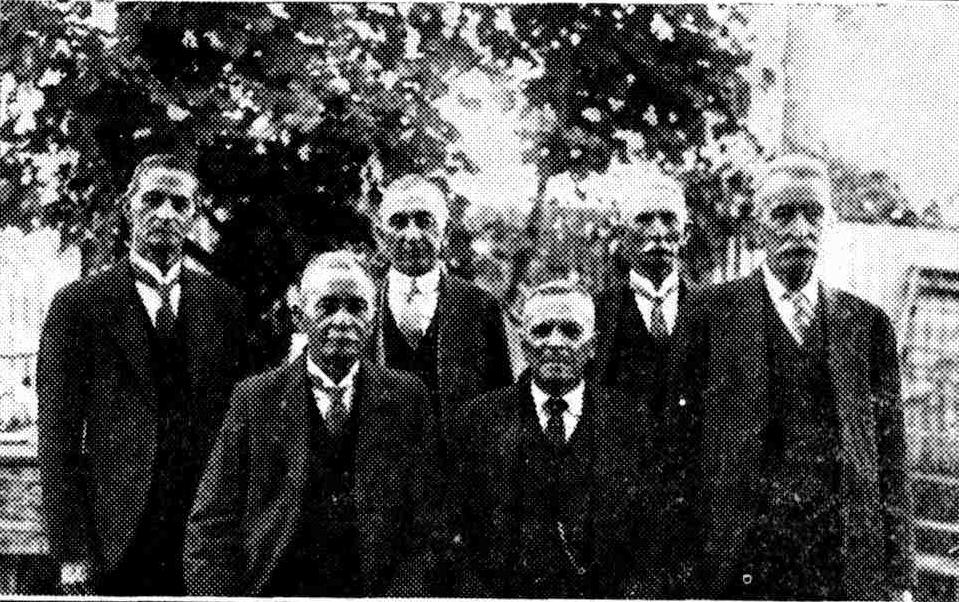
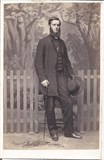 DEATH OF REV. G. E. C. STILES.
DEATH OF REV. G. E. C. STILES.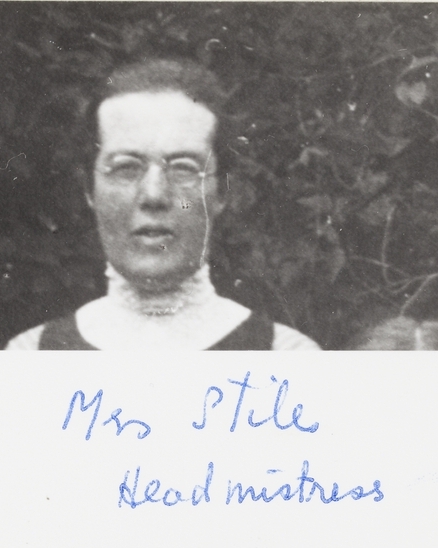
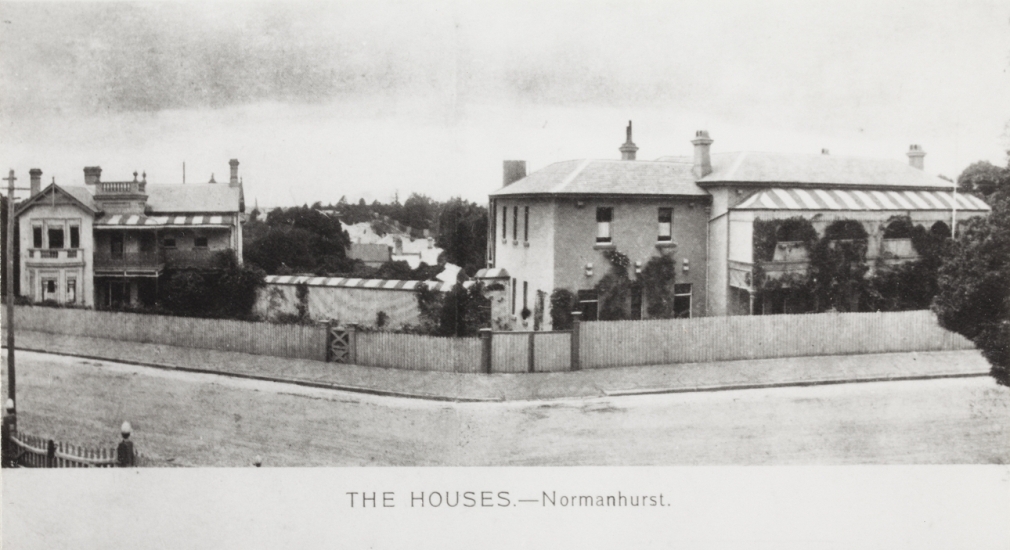
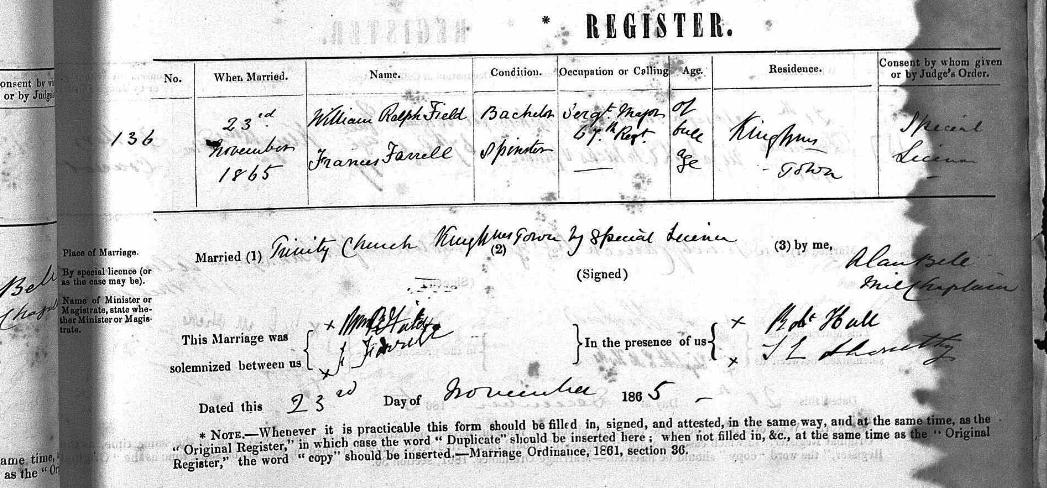
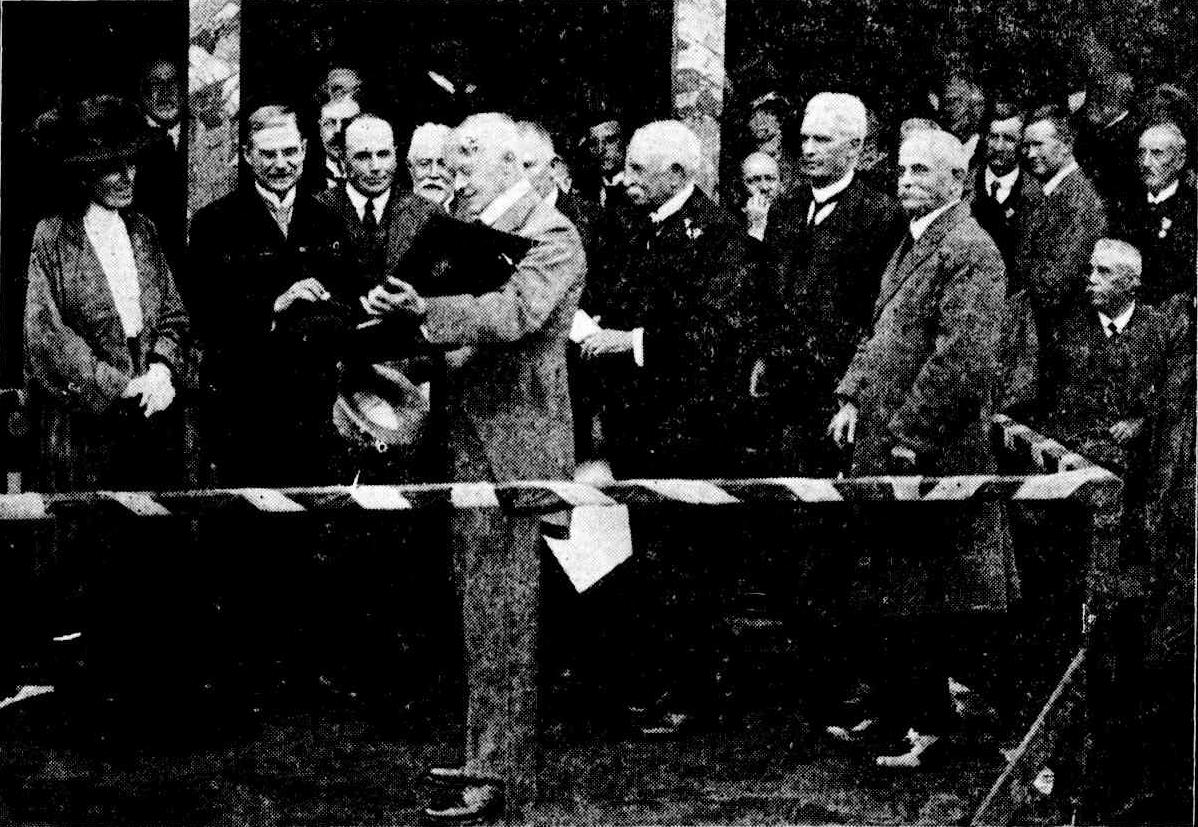
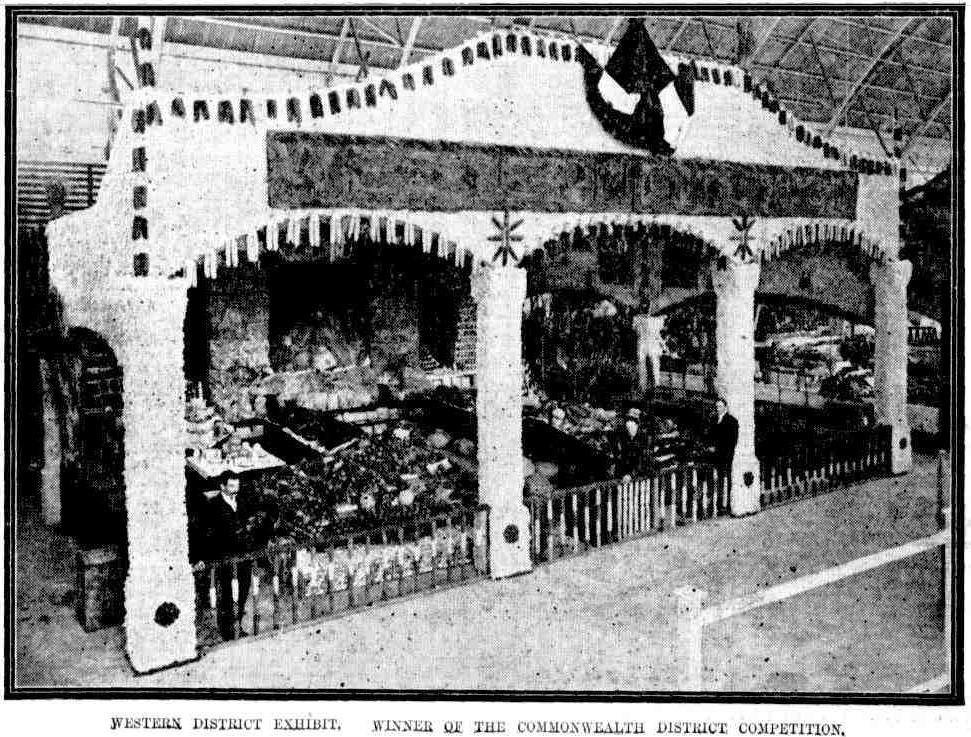
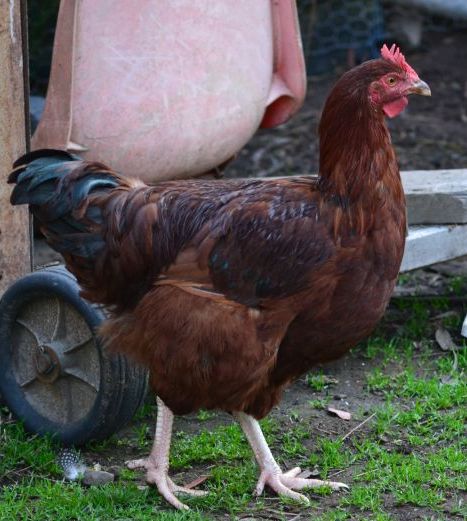 The display of poultry this year is ahead of former years in the matter of
The display of poultry this year is ahead of former years in the matter of


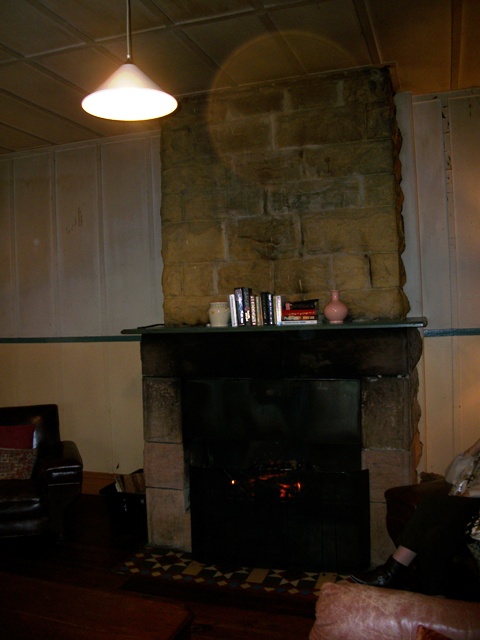 The Stiles family lived in the homestead for several years until it burnt down then built 'Africa', later renamed Midholme, a little to the northeast of the original farmhouse. The original Wilson house, replaced with ‘Africa’, named for Pink's old home, and later renamed ‘Midholme’ is a Federation style hobby farm from weatherboards and Fibro sheeting, a product used in many holiday homes during that period.
The Stiles family lived in the homestead for several years until it burnt down then built 'Africa', later renamed Midholme, a little to the northeast of the original farmhouse. The original Wilson house, replaced with ‘Africa’, named for Pink's old home, and later renamed ‘Midholme’ is a Federation style hobby farm from weatherboards and Fibro sheeting, a product used in many holiday homes during that period. 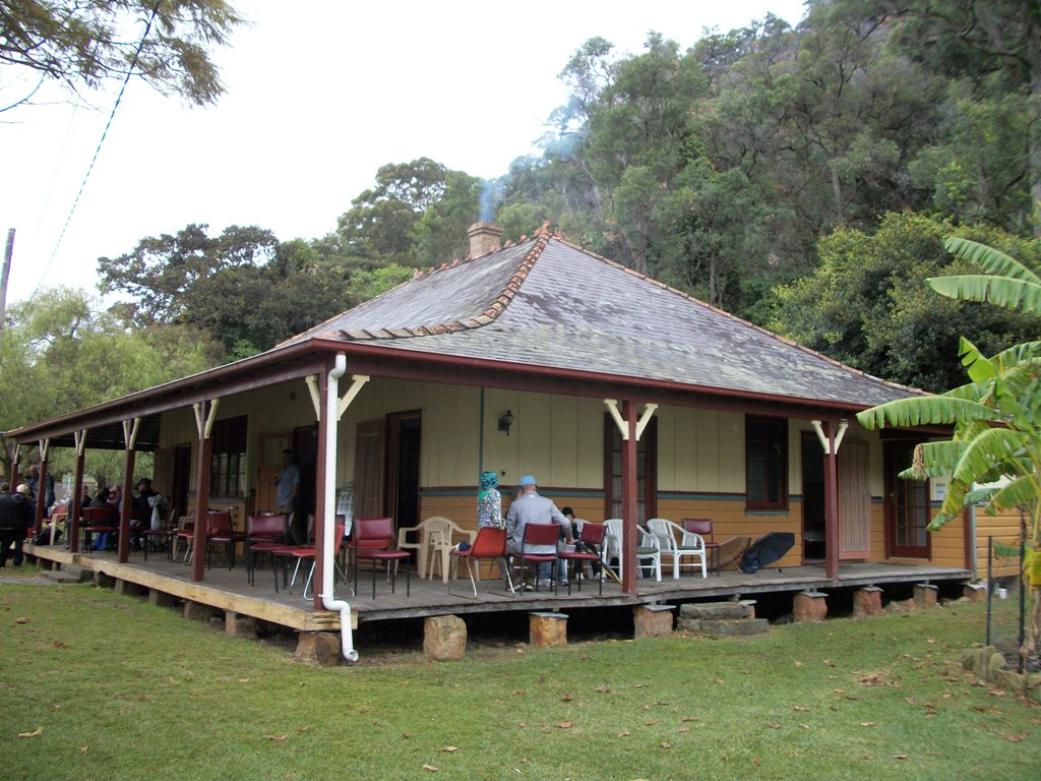
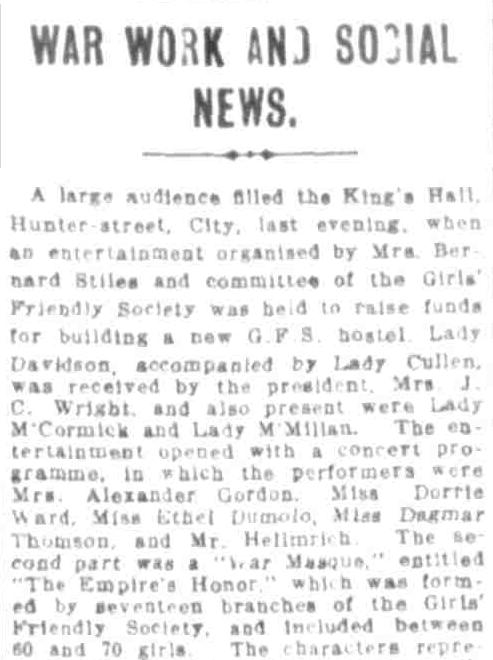
Other features noted as being present or built during the time of the Stiles family include post and rail fencing, a jetty at the northern end of the beach and extending northwest following the tidal flat and south creek; tennis courts, flower gardens, a windmill, a dairy/stables and a well. The structure located just northwest of the farmhouse may have been the site of the kitchen for the homestead, later known as Canning Cottage, were the telephone was installed in the 1930s.
These enlarged sections from a Palm Beach panorama, circa 1917-1946 (1920) shows the structures at Little Mackeral and wharf at Great Mackeral and what looks like the SS Phoenix (ferry) out in the estuary:
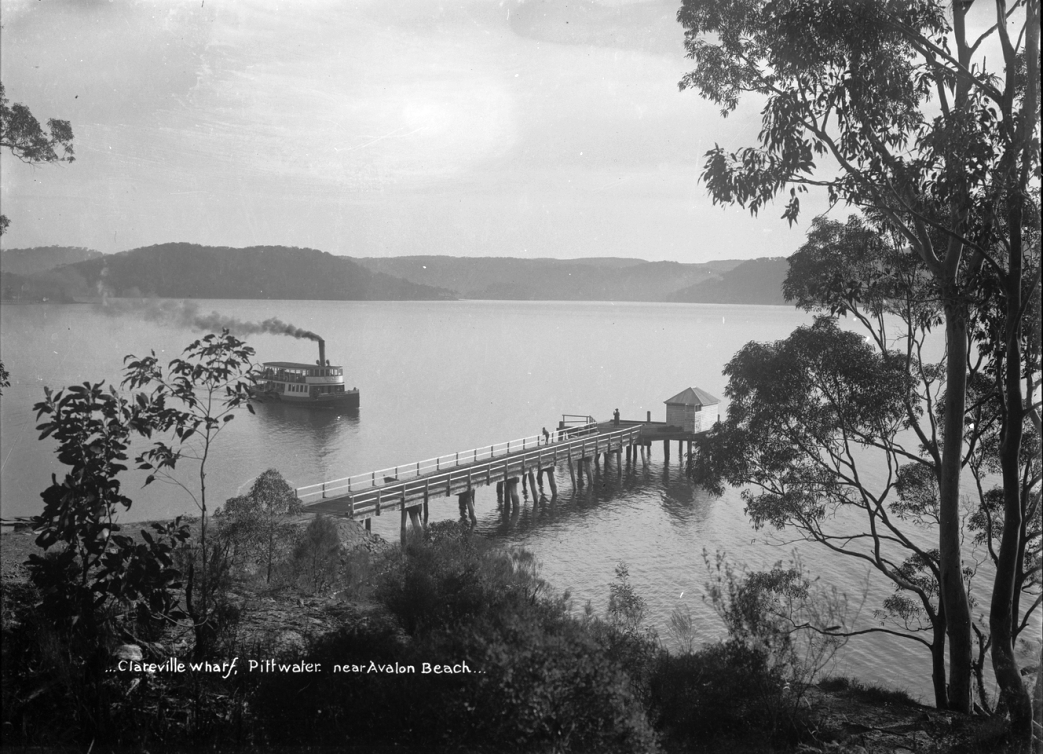
Clareville wharf Pittwater near Avalon Beach - Small steam passenger vessel coming in. Image No.: c046220013h, from Album: Avalon, Pittwater CREATOR Rex Hazlewood, 1886-1968, courtesy State Library of NSW

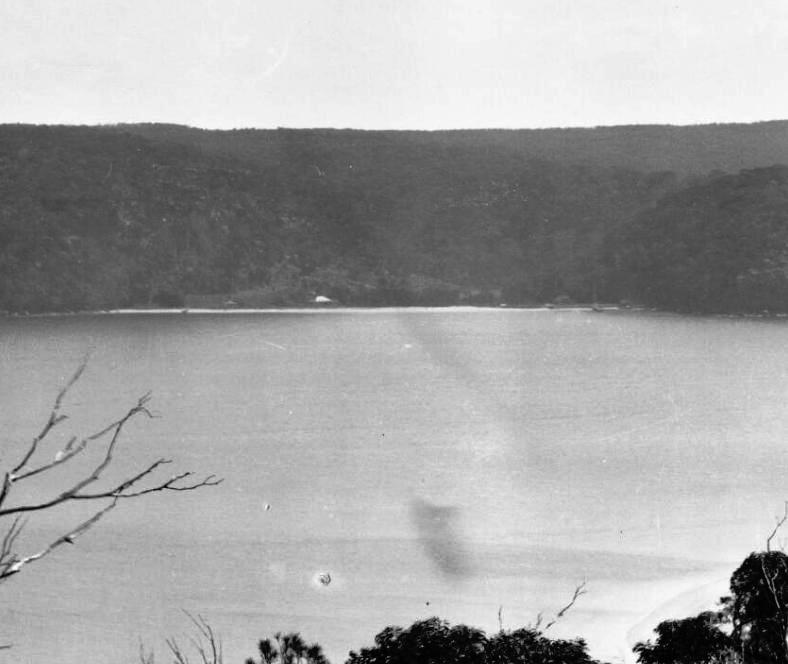
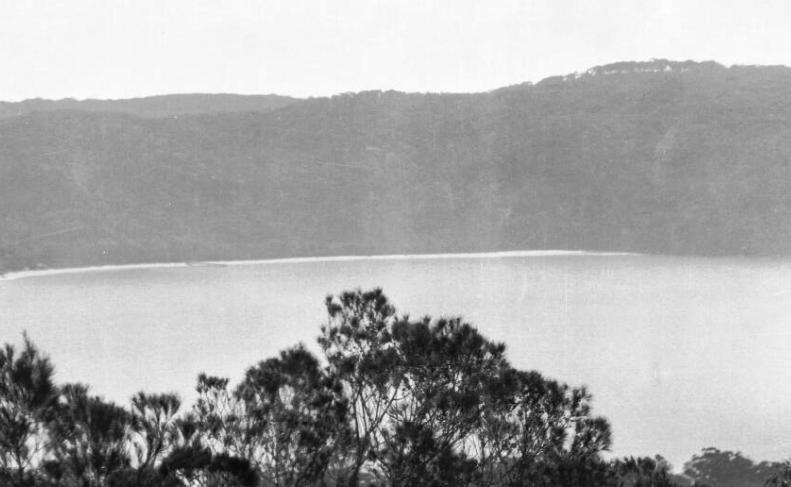
Above 1; Little Mackeral. 2. Great Mackeral.
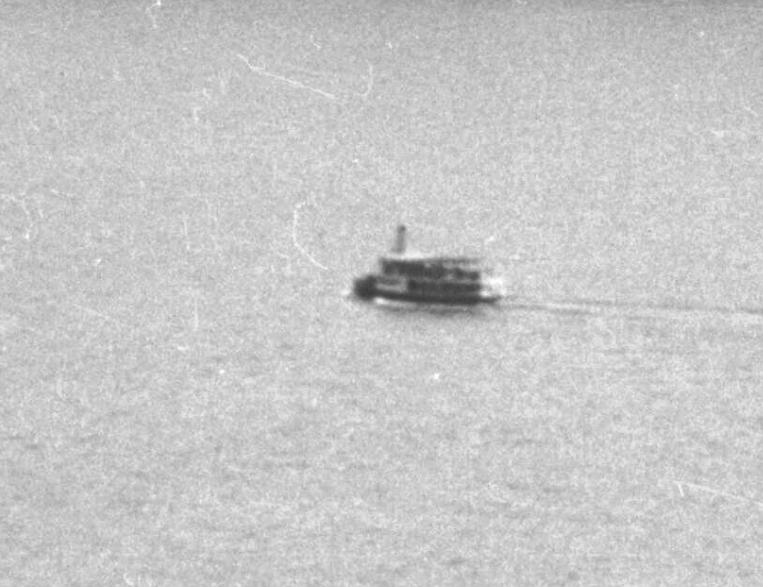
EB Studios (Sydney, N.S.W.). (circa 1917). Panorama of Palm Beach, New South Wales, 11 Retrieved from http://nla.gov.au/nla.obj-162487775 - National Library of Australia
Mrs. Stiles subdivided Portion 10 into a further 3 allotments during the Stiles family ownership of the property. These included the sale of lot 4/DP 978424 to Isaac Barry Evans and Harriet May (32 ¾ perches) in August 1918; Lot 1/DP 166328(1 acre, 1 rod and 36 perches) to Hector Henry Forsayth, a stock and sharebroker and ex-King's School fullback, in June 1920 (although he left for Oxford University in December 1919 and was in England until 1923) and Lot 1/DP 337208 (29 ½ perches) to Sophie Rock (formerly of Balmoral Beach) in 1937-39.
AN AUSTRALIAN AT OXFORD
MR. H.-H. FORSAYTH. It was announced in' our cables a' few days ago that H. H. Forsayth, whose parents re-side at Vaucluse and who is now a student at Oxford University, had been invited by Eng-land and Scotland to play In the trial matches for the selection of the International Rugby Union football teams.
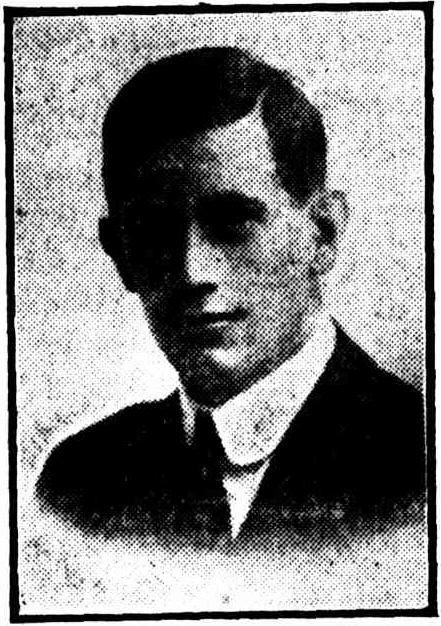
MR. H. H. FORSAYTH.
Mr. Forsayth is the son of Mr. J. M. C. Forsayth, of Vaucluse Hall, Vaucluse, a well-known South Sea Island merchant, and who has always been an enthusiast in sport. His son, who is just 21 years of age, had a distinguished career at the King's School, Parramatta, where ho won a name for his play In the full-back position. He proceeded to Oxford University at the end of last year, and in his Iast season was awarded his full blue for football. "Another Australian, and incidentally an old boy of the King's School, R. H. Benington, was awarded his blue at the same time.
Mr. Forsayth is a typical Australian of the clean athletic type. He stands nearly six feet high and now weighs slightly .over 13 stone. Private advices recently received state that young Forsayth's play is regarded as very fine by expert critics, and it is expected that he will become one of the'finest exponents of his own particular branch of the Rugby game. AN AUSTRALIAN AT OXFORD (1920, December 29). The Sydney Morning Herald (NSW : 1842 - 1954), p. 10. Retrieved from http://nla.gov.au/nla.news-article16882033
H. H. Forsayth, the old King's School boy, who played full-back for Oxford University and Scotland, tells us that the Ruby Union game has a remarkable grip in France. The players are making themselves highly proficient. YACHTING PREPARATIONS (1923, September 5). Referee (Sydney, NSW : 1886 - 1939), p. 14. Retrieved from http://nla.gov.au/nla.news-article128113110
Forsayth and his wife constructed a house known as Northend within their allotment which fronted the beach in the 1920s. They also constructed a boatshed, a flagpole and a concrete retaining wall in an effort to obstruct the tide which was undermining the foundations of Northend. The concrete wall constructed to assist the retention of the Northend house did not stop the erosion of Northend’s foundations and it was demolished in the 1970s.
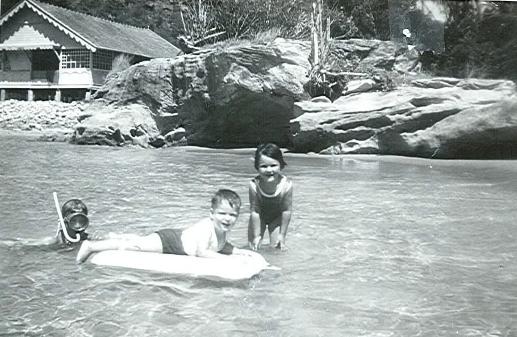
Northend (in background) 1964 - courtesy Patricia Nolan
Dr. Bernard Stiles had a brief turn in rural Wauchope:
Dr. Bernard Stiles, of Newtown, has taken over Dr. H G Bonneys practice at Wauchope, and the latter is proceeding immediately to Brisbane.PURELY PERSONAL. (1933, January 27).Macleay Argus (Kempsey, NSW : 1885 - 1907; 1909 - 1910; 1912 - 1913; 1915 - 1916; 1918 - 1954), p. 4. Retrieved from http://nla.gov.au/nla.news-article234250886
MAINLY ABOUT PEOPLE. Dr. Sandes has arrived at Wauchope to take over Dr. Stiles' practice. MAINLY ABOUT PEOPLE. (1933, November 11). The Manning River Times and Advocate for the Northern Coast Districts of New South Wales (Taree, NSW : 1898 - 1954), p. 6. Retrieved fromhttp://nla.gov.au/nla.news-article172257369
Death Caused By Strychnine, Says Doctor
SYDNEY.— Before she died on December 1, Mrs. Vera Doris Watt, of Kent Street, Collaroy, had told him she had taken an A.P.C. powder which tasted very bitter, Dr. Bernard Tarlton Stiles, of Manly, said in the Coroner's Court to-day at the inquest on Mrs. Watt.
Ronald Donald Pagett, of Epping, who has been charged with the mur der of Mrs. Watt, was present at the inquest. Dr. Stiles said that between 2 and 3 p.m. on December 1 he was called to Halt's pharmacy in Manly, where he saw Mrs Watt, who was unable to walk. She told him she had taken an A.P.C. powder which had tasted very bitter. She said she had taken ill on a bus travelling; from Collaroy to Manly. He ordered an ambulance to take her to Manly Cottage Hospital and just before It arrived she had a convulsion. Dr. Clarence Ernest Percy, Government Medical Officer, said he made an internal examination of the body and had submitted the contents of the stomach and part of the organs to the Government Analyst. The organs were healthy. Death was due to strychnine poisoning. Daniel Watt., returned soldier and a member of a Garrison Battalion, said he married the deceased on September 9, 1941, when she was a widow named Knox, aged 36, with two children. Proceeding. Death Caused By Strychnine, Says Doctor (1941, December 29). The Telegraph (Brisbane, Qld. : 1872 - 1947), p. 5 (Second Edition). Retrieved fromhttp://nla.gov.au/nla.news-article172345043
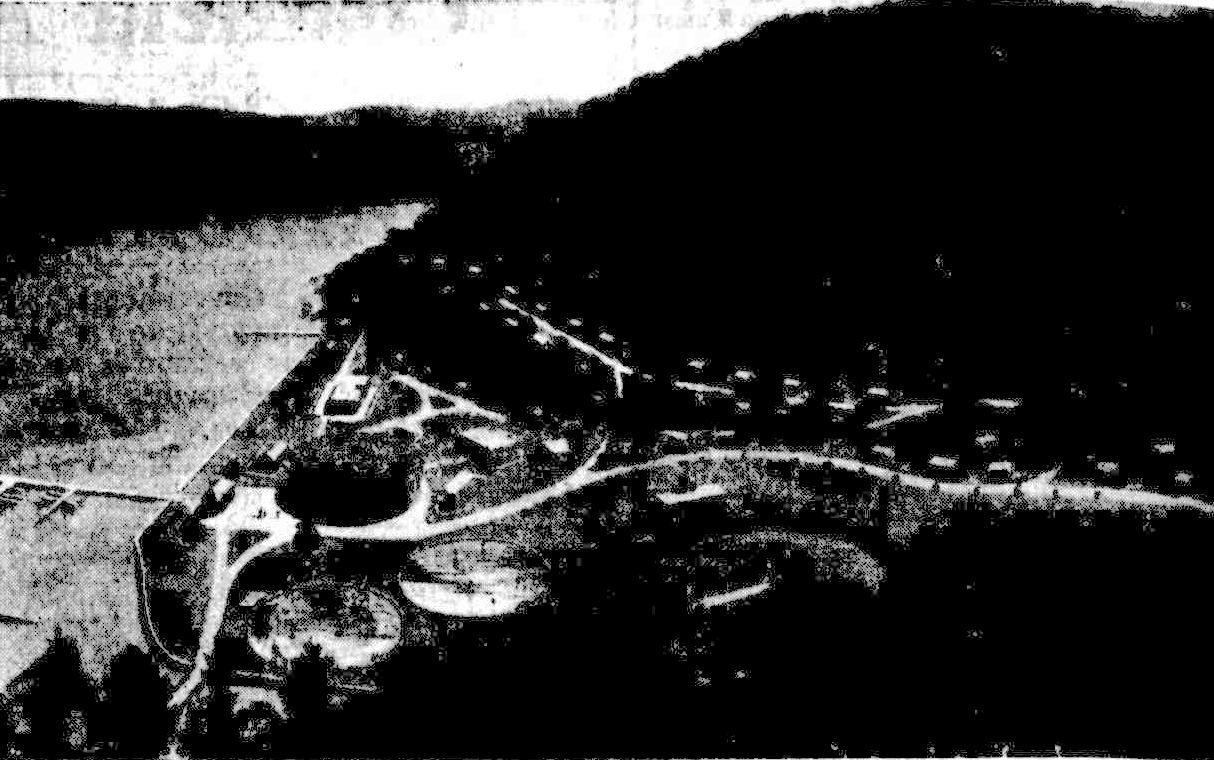
PITTWATER (Metropolitan) - PITTWATTER Currawong Hol. Resort Little Mackeral Beach Furn. Cottages accom 5 pers £6/10/ 11 mins across Pittwater from Goddard’s Wharlf Palm Beach To pers affiliated to Labor Council of NSW a reduction of £ 1 p w is allowed For parties M4697
EASTER AVAIL - SCOTLAD IS Sm WB Cott , ace 4 Launch Easter avail XA2270 Advertising (1954, April 10). The Sydney Morning Herald (NSW : 1842 - 1954), p. 35. Retrieved from http://nla.gov.au/nla.news-article18419595
Great Mackeral Beach
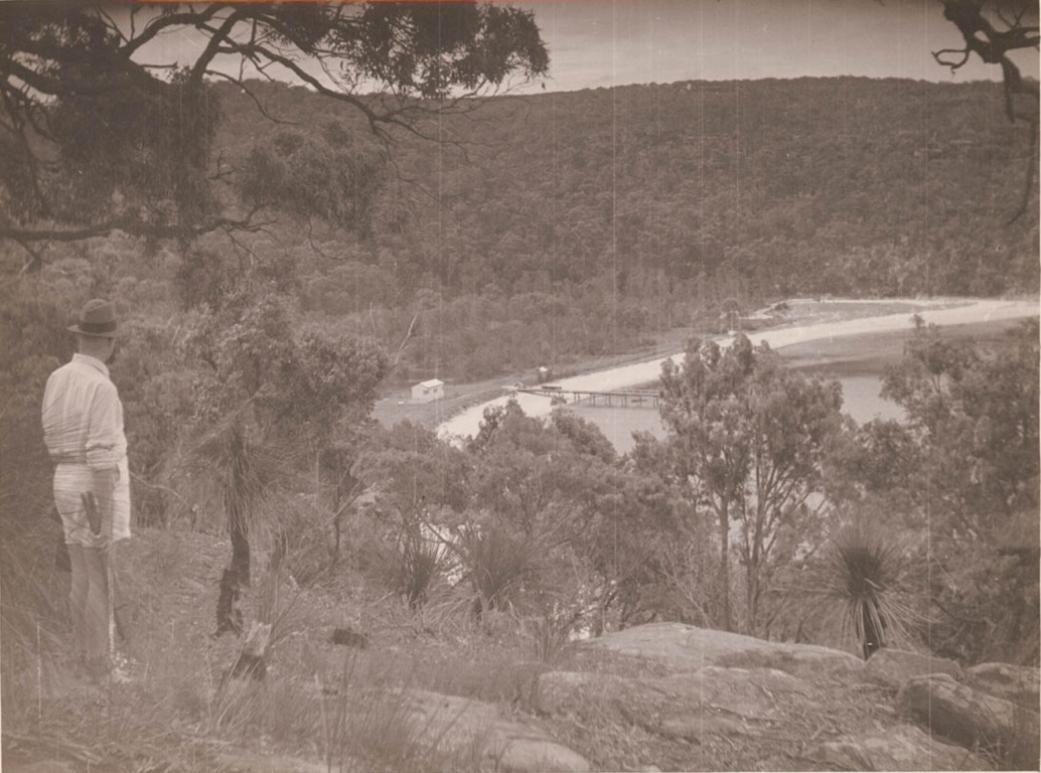
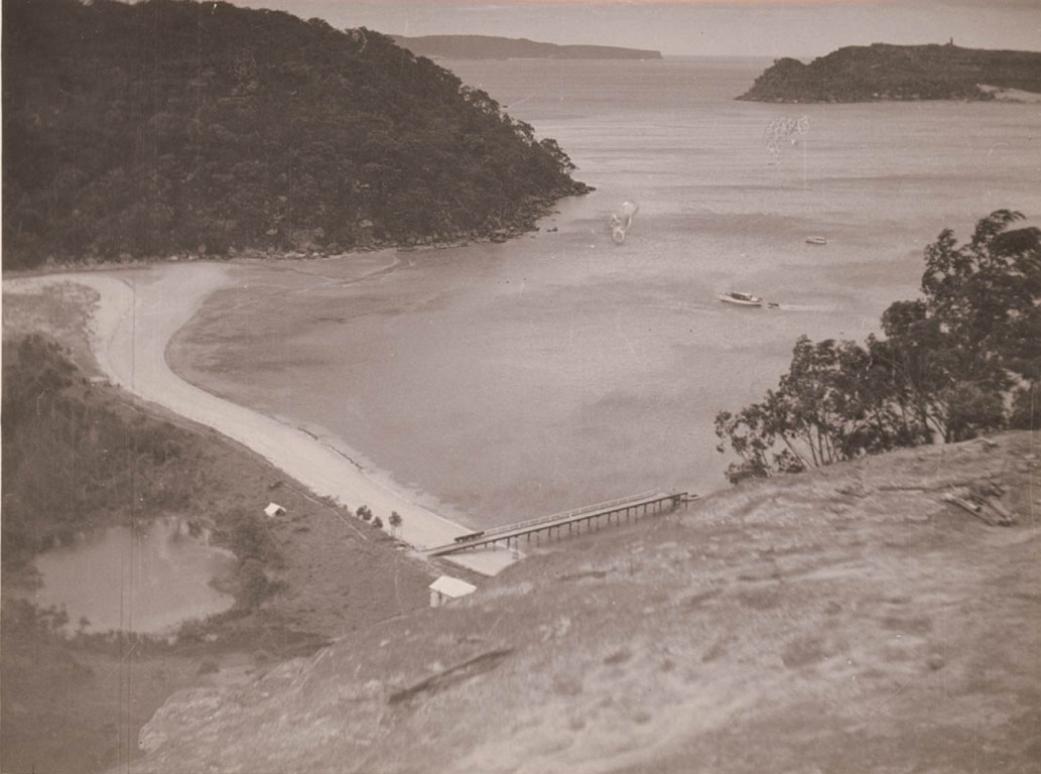
Great Mackerel Beach
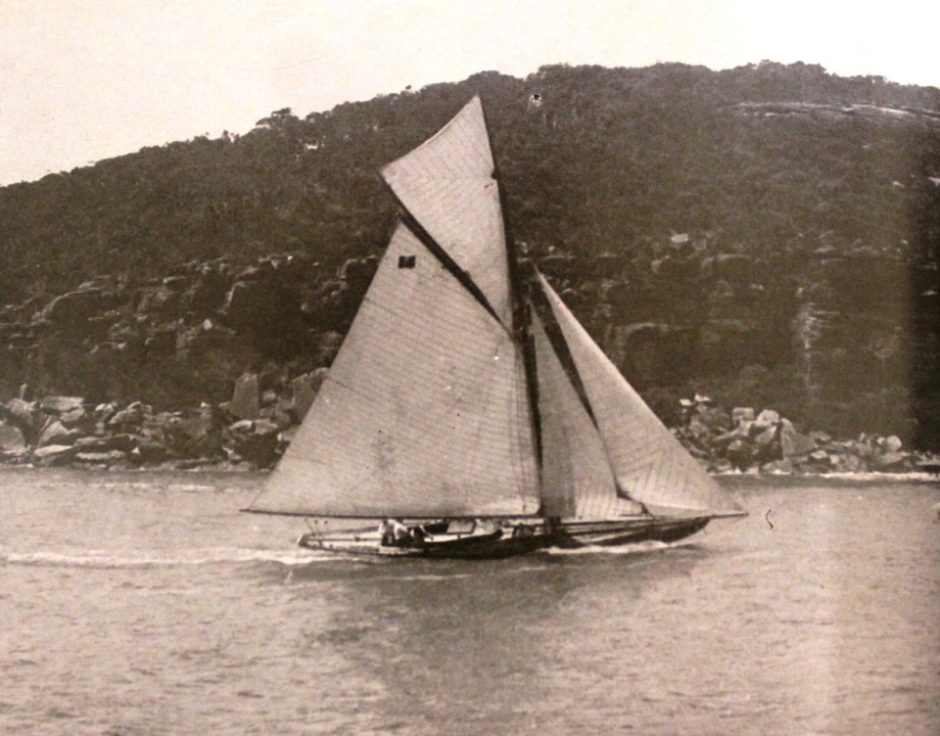
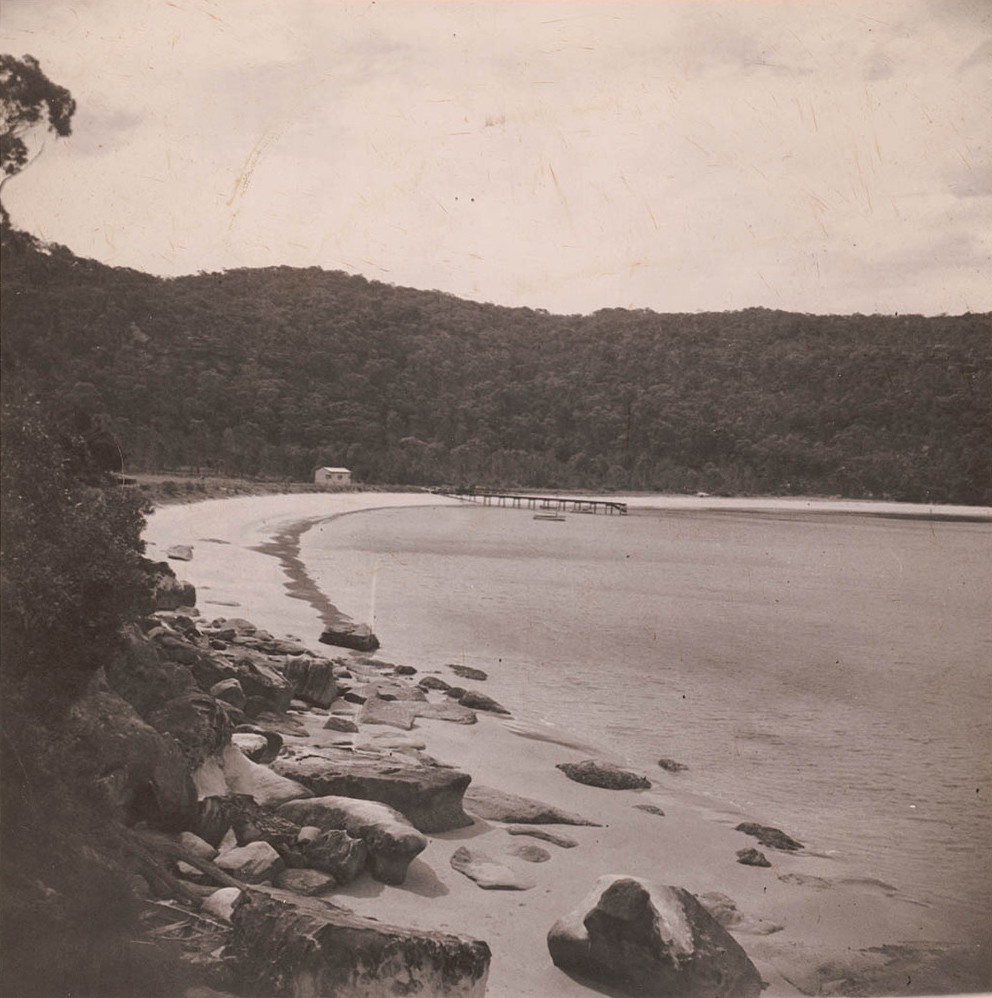
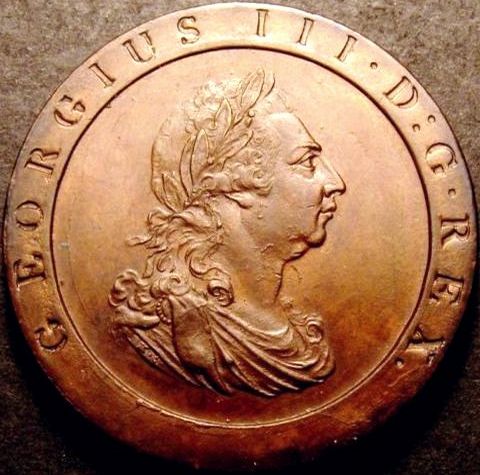
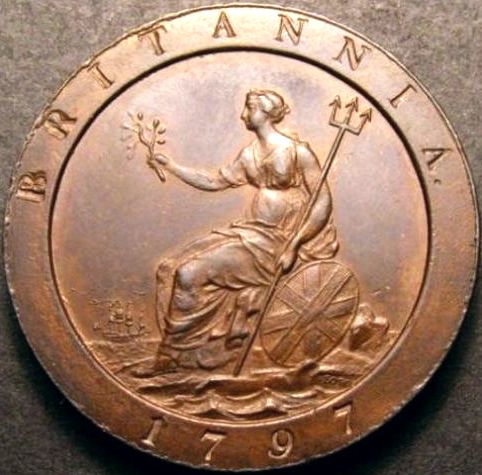
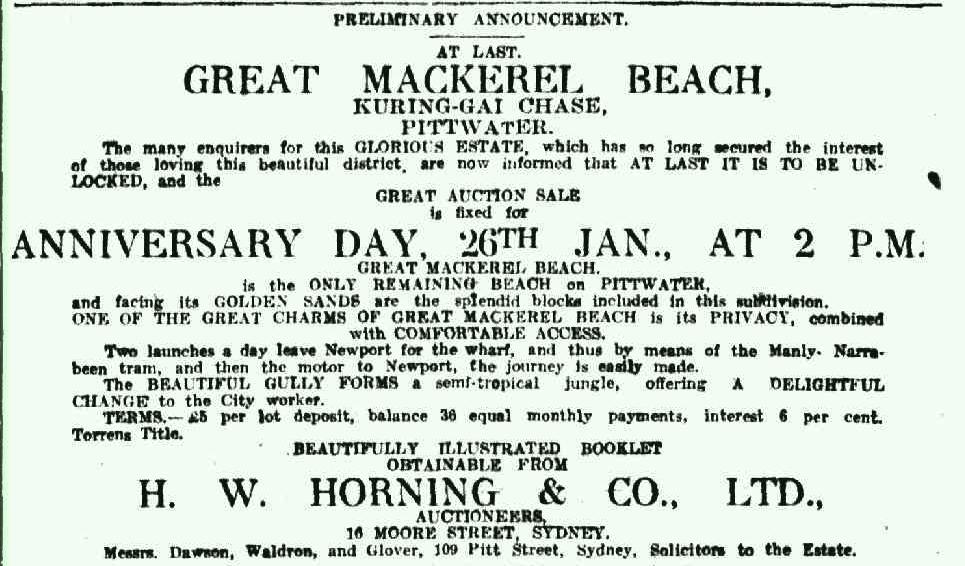
"HERITAGE." Plans for Crowd Scenes. GOVERNOR PHILLIP'S LANDING.
More than a hundred men. most, of them unemployed, have been given work for to-day as "extras" in the Australian picture, "Heritage."' which Mr. Charles Chauvel is producing for Expeditionary Films. Ltd. Seventy of the men were selected in Sydney, and a large number in the district about Pittwater. To-day, all these will be transported to Great Mackerel Beach, where they are to take part in scenes depicting the landing of Governor Phillip.
The settings for Governor Phillip's camp have been faithfully reproduced from sketches prepared by Mr. Ray Lindsay from original sources in the Mitchell Library and elsewhere. Much difficulty has been experienced, however, in damming the small stream which flows from the hills to the beach, and which is Intended to represent the historic Tank Stream of Circular Quay. Several hundred bags, to be filled with sand for that purpose, were sent from Sydney yesterday. Hitherto, the tides have moved all the sandbags available at Pittwater.
It is hoped to make a start with the crowd scenes at Pittwater this morning. The film should be sufficiently advanced by the end of the week to be taken to Melbourne by Mr.Chauvel for "cutting." RE-ENACTING SCENES FROM THE FIRST SETTLEMENT. (1934, October 25). The Sydney Morning Herald (NSW : 1842 - 1954), p. 16. Retrieved from http://nla.gov.au/nla.news-article28021154
THAT enterprising couple, the Charles Chauvels, have found the quaintest little beach. In among the rocks and tea-tree, high above Mackerel Beach, near Pittwater, from which they will be able to keep an eye on the extras to be utilised in finishing their film, "Heritage," and, incidentally, the social-lights across the bay at Palm Beach. And what do you think they found there? Pasted on the front verandah was a large photograph of a group of those luscious Mack Sennett bathing girls, just too, too Mae Westy for words. It quite brought Charles' 'Hollywood days back to him when ho used to scamper round as one of Douglas Fairbanks' publicity men. Incidentally, this week Pittwater will resound to the commands of Governor Phillip's military, and the curses of his convict men. Nevertheless, Mrs. Chauvel thinks her little pill-box on the hill is the most restful spot since she left the Blue Lagoon in Tahiti. Catty Communications (1934, October 27). Smith's Weekly (Sydney, NSW : 1919 - 1950), p. 21. Retrieved fromhttp://nla.gov.au/nla.news-article235490112
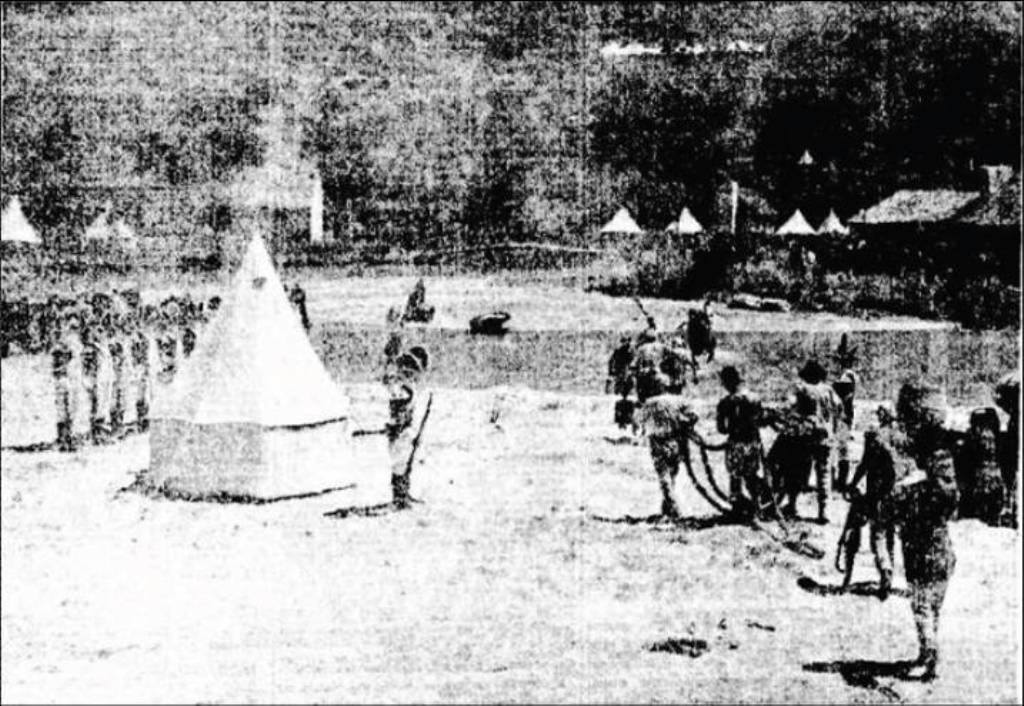
Photograph: RE-ENACTING SCENES FROM THE FIRST SETTLEMENT. (1934, October 25). The Sydney Morning Herald (NSW : 1842 - 1954), p. 16. Retrieved from http://nla.gov.au/nla.news-article28021154
Visit: Filmed in Pittwater
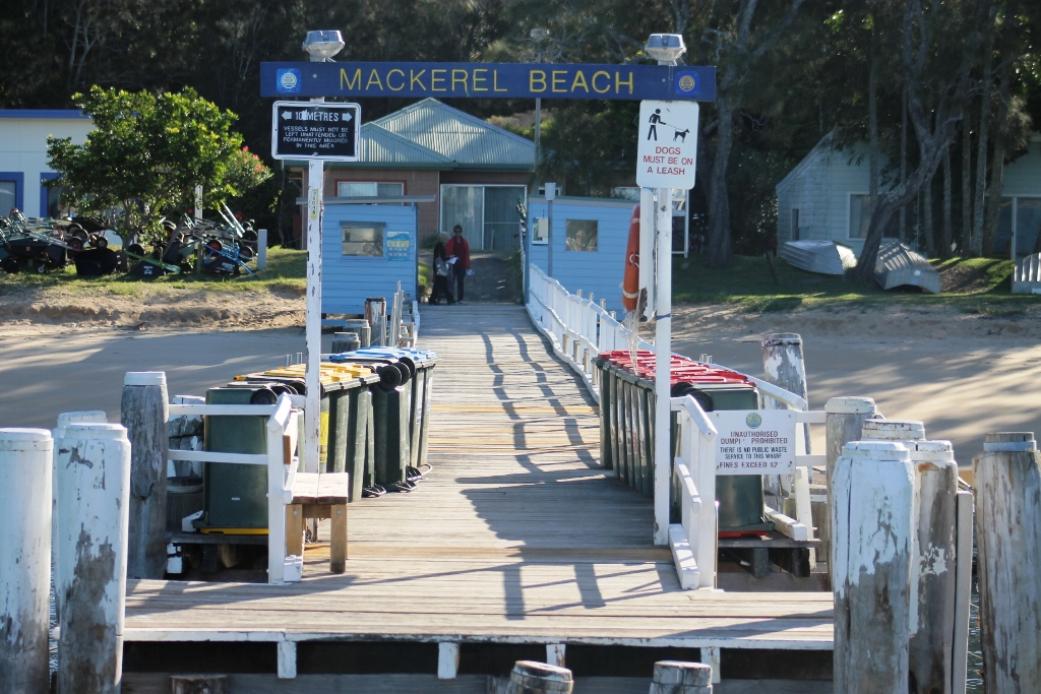
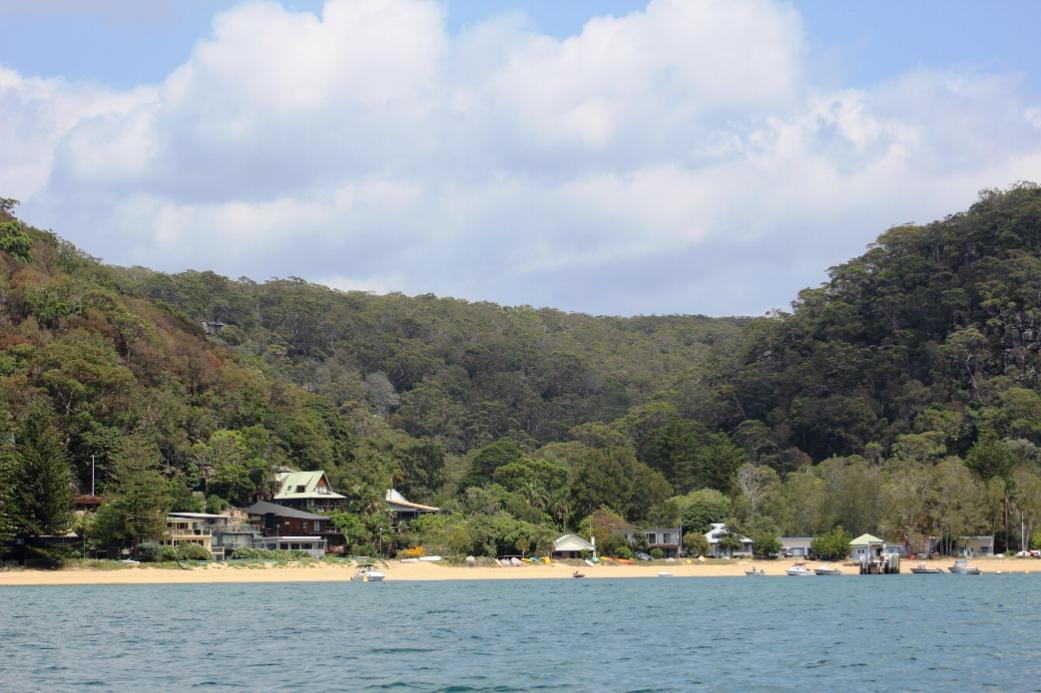
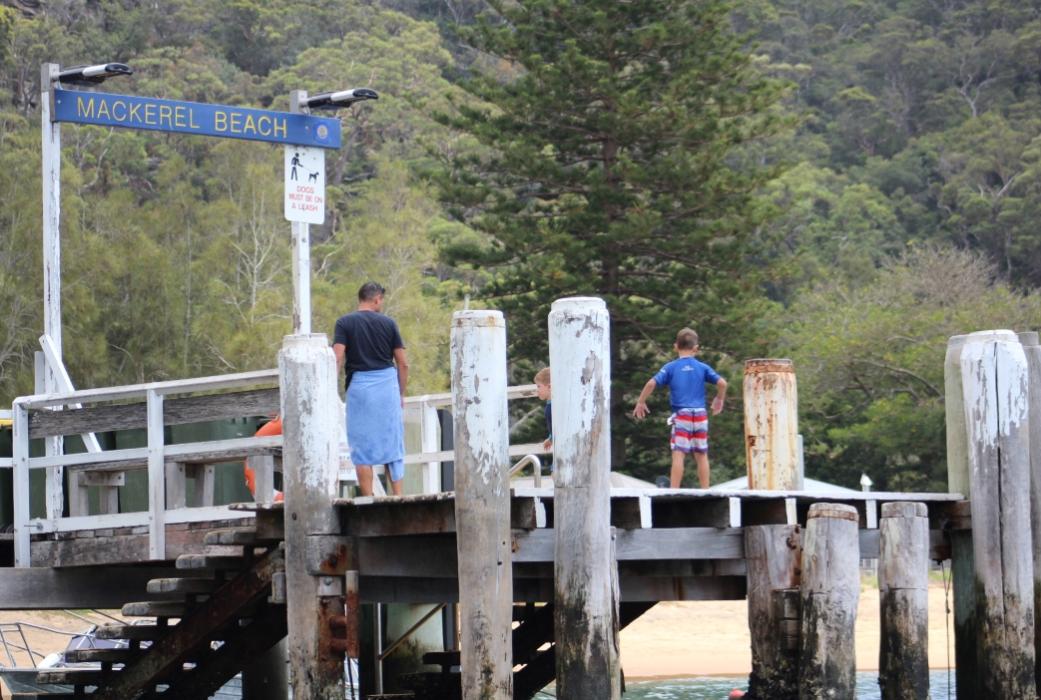
The Basin
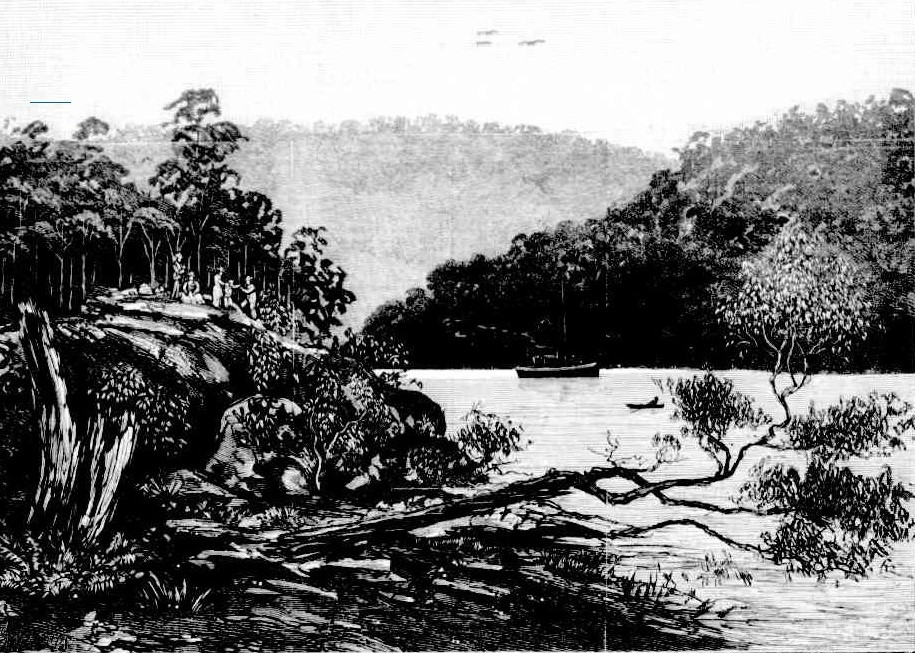
Blind Cove, Pittwater, N.SW.
This beautiful little bay shown in our illustration, formerly private property, has been made a reserve of by Government, and is now practically a cruising ground for the yachting community of Sydney. A more useful and delightful sheet of water could not have been chosen, situated as it is at the entrance to the Hawkesbusy River, just opposite Barrenjoey. To the north is the broad expanse of water known as Brisbane Water, and to its south Pittwater, which is now connected with Sydney, Newport, and Manly by means of a coach running daily. Blind Cove, also called The Basin, is a safe refuge in the very worst of weather. It owes its name of Blind Cove to the fact of its being invisible to the incomer until he has almost reached its entrance, which is very narrow and hidden from view by a low stretch of sand ; but inside this narrow passage there is deep water, and the height of the hills surrounding the basin (some 600 feet) so thoroughly shelter it from heavy winds that it might well be called Looking-glass Bay. It is on account of this, and also the beauty of the surrounding scenery, that has made it one of the principal rendezvous of yachtsmen. Blind Cove, Pittwater, N.SW. (1883, March 10). Australian Town and Country Journal (Sydney, NSW : 1870 - 1907), p. 26. Retrieved from http://nla.gov.au/nla.news-article70996783
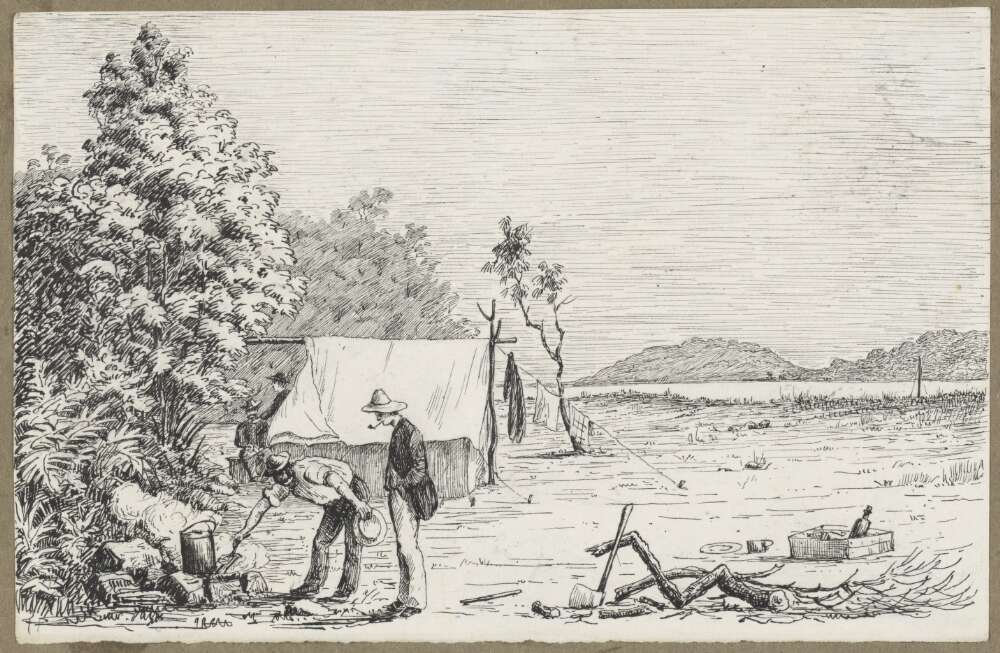
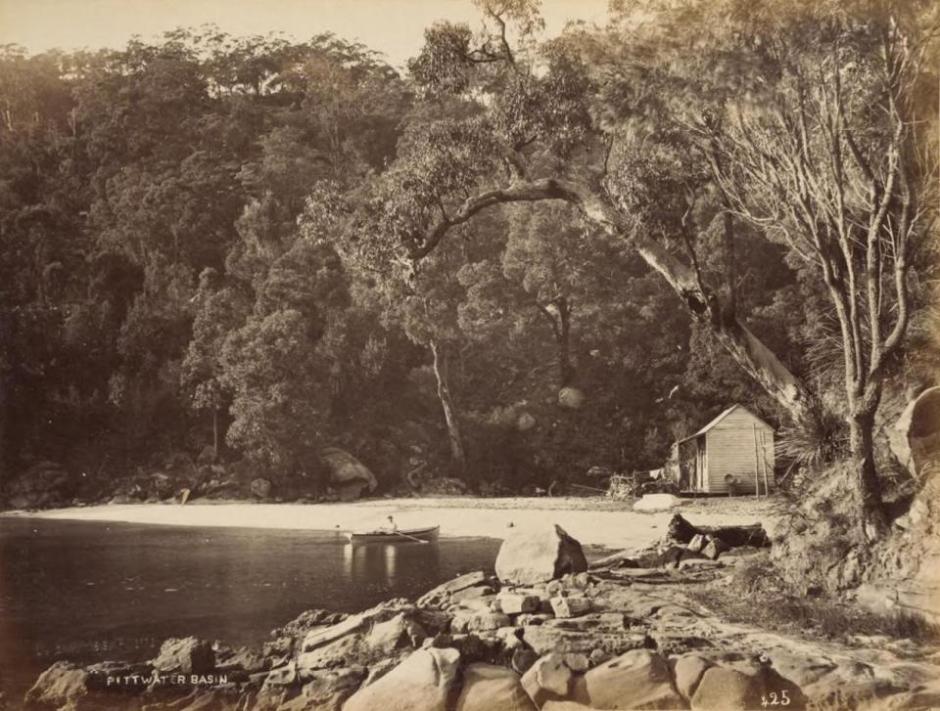
Pittwater Basin, New South Wales - by Charles Bayliss circa 1880, Image No.: PIC/11549/1-60 LOC PIC Album 85, courtesy National Library of Australia.
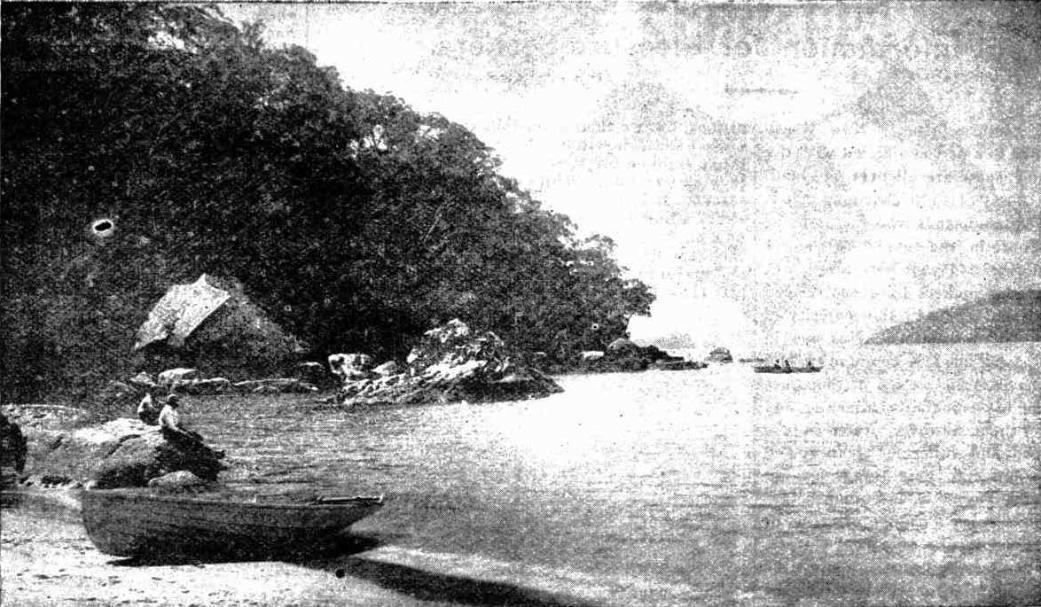
OTHER RESORTS NEAR THE CITY.
THE BASIN. PITTWATER.
Net fishermen long ago killed the Basin as a whiting and bream haunt of repute, but outside it the fish are still occasionally caught. This is one of the first places near Sydney whence the whiting used to be reported, and it is still possible before the netters get to work, and in the deep water beyond their limit, to snare a few of the tasty fish. At the entrance to the Basin in times gene by splendid hauls used to be. caught. . . THE BASIN, PITTWATER. (1906, August 29). Referee (Sydney, NSW : 1886 - 1939), , p. 11. Retrieved from http://nla.gov.au/nla.news-article120326946
Stolen Fishing Net
During the last couple of days a fishing net 250 yards long, valued at £15, was stolen from Mr. Lebbeus Hordern’s yacht at The Basin, Palm Beach. Stolen Fishing Not (1918, October 12). The Sun (Sydney, NSW : 1910 - 1954), p. 5. Retrieved from http://nla.gov.au/nla.news-article221421347
Messrs. Fraser, McKeown, Long and Goodwin, during a ten days' camp near the Basin (Pittwater) struck a rich variety of fish, including red bread of takeable size, black bream, flathead and a 71b black rock cod. During one heavy thunderstorm a flock of terns was killed, probably by hail, and their bodies were washed up on the beach. ROD AND LINE (1922, December 17). Sunday Times (Sydney, NSW : 1895 - 1930), p. 13. Retrieved from http://nla.gov.au/nla.news-article128220598
THE BASIN
MAN INTERFERES WITH NATURE TRUST INVITES SUGGESTIONS
Nature unadorned and unaided by her highest animal development sometimes blunders, and humanity sometimes blunders in trying to help her. In most of her domains Nature discords symmetry and arranges her beauties in orderly confusion, but when man tries to help her to readjust her boundaries, he unfortunately generally thinks and plans in straight lines — harsh utilitarian contours— that rob her of her pristine loveliness. At the basin in the Pittwater Arm of Broken Bay Nature has given humanity a rich inheritance, and, because one of her elements has been breaking the bounds of others, mankind, as represented by the Kuring-gai Park Trust, has come to her assistance, with success in some respects, and with artistic failure in others. The Basin has been misbehaving itself. Ordinarily it is a delectable lake-like expanse of deep marine water, nestled in a huge amphitheatre clothed with eucalypts and other rich forest growths, situated near the mouth of the Pittwater Arm of Broken Bay, on the Kuring-gai Chase. During many years, however, it has been quietly eating into part of the peninsula that nearly encloses it, and the trust has felt called upon to protest. In doing this the Trust has done well, but its aid has been chiefly solid and mathematical, rather than artistic. When it builds a retaining wall it forgets that exactly the same rigidity may be achieved by curves and irregularities of upper structure as by lines of block masonry. The artistic conception is dwarfed by the useful and possibly the expedient.
Much splendid work has been done, and is still being done, under the direction of the trust in and outside the Basin. The channel entrance, which was threatened with shoaling by the sand from a little outer bay, is now protected, and. probably something more will be done to pro-vent tile Basin from cutting further into the peninsula from inside. Across the outer Inlet a retaining wall of sandstone blocks has been constructed, but provision has not been made for the scour from the hills to get rapidly away, and the consequence is that the reclaimed land is often a knee-deep bog. A channel to let the water away is needed, and the lines of the wall itself should be in keeping with nature's beautiful outlines round the Basin. Only in basalt country does one see squares and oblongs, and' the country round this attractive spot is not basalt, but irregular sandstone, with intrusions of other rocks. To relieve the uncouth symmetry of the retaining wall, natural rock buttresses might have been substituted for the top ungraceful oblongs.
ALRIGHT IN TIME.
Mr. Harrison, secretary of the trust, maintains that the wall has improved one of the camping grounds just outside the channel entrance, and that in time the land at present boggy just inside the wall will drain and give more well-grassed camping space. He says that most of the yachtsmen and motor-boat owners who frequently visit the Basin are pleased with a newly-erected wharf and shelter-shed near the little southern outer beach, even if it has spoiled a fisherman's hauling ground. The main outer beach is not being touched.
RUSTICITY SACRIFICED.
The red-roofed shelter is certainly a pleasant color relief to the rest of the structures, and on the whole the artistic sense of visitors is not outraged by that improvement. Inside the basin a wharf has been completed. It, too, is needed, but it is at present devoid of grace. It is not perhaps too late for the suggestion of some regular visitors to be acted, upon, that it be given a rustic finish. Utility may be combined with grace by the utilisation of natural timber shapes, instead of sawn rectangular timbers. Even sawn triangles look better than quadrilaterals in certain places.
SWIMMERS' WANTS.
Another Improvement meditated is an enclosure for swimmers in the basin near the new wharf. This is necessary; but again, the wall proposed to be erected is to be topped by quadrilaterals, and be an evidence of the acquaintance of mankind with Euclid's squares, instead of Nature’s harmonious irregularities. It is not too late for the trust to instruct its workmen to construct the wall so that its top, at least, may be rocks from the hillside, and not a footworn horizontal pathway. It is not necessary for anyone to walk along it, but if of squared masonry It will invite wandering feet.
DIFFERING OPINIONS.
At the seaward end of the outer beach, where parties find safe swimming water, the trustees are proposing to place another wharf of stone, and to run from it a netting to prevent sharks entering a bathing enclosure. Opinions amongst yachters and motor-boaters vary respecting this. Some condemn the proposals entirely; preferring the natural surroundings. Others say the idea is good, as they have always felt they would like to swim in a bit deeper water, but they feared the huge sea-sharks that swim around Barranjoey and West Head and chase whiting and red-bream up into the Basin. The trustees are not obstinately wedded to any proposal. Inquiry shows that they welcome ideas, especially artistic ones allied with practicability, but they do not have them given to them often. They find critics wait till something is done, and then fall upon it with scorn. Any yachtsman, therefore, who has a thorough appreciation of the necessities of the Basin and puts his ideas into writing, will receive attention. For instance, another improvement meditated is the planting of trees about tho 20 acres surrounding Peggy's house. The trees on the camping area are not as beautiful as they might be. One proposal before the trustees was to plant an avenue of pines along tho outer edge of the camping ground — the straight line business again— and another to plant here and there a few silverbark tea trees, Port Jackson fig trees, and flame trees. The latter proposal seems to find the greater favor amongst those who visit the Basin oftenest.
WATER FOR CAMPERS.
One thing needed greatly has apparently not yet been authorised by the trustees, and that is a cement water well, . as Irregular in shape as may be possible, on' the line of the little creek at the northern end of the peninsula. Once the old users of the place had a cask there to hold the water, but it has fallen to pieces, and in dry weather campers have to pull a long way across the Basin to a spring up the hill-side. No doubt the trustees will see to this. They are anxious to please and anxious to adorn, not to disfigure nature. By the way, nobody wants to shift Peggy, who has a life tenancy of part of the peninsula at 1s a year rental, and who is one of the picturesque identities of the place. She is Mrs. Mary Ann Morris, and she has lived , there for 47 years. THE BASIN (1915, May 30). The Sun (Sydney, NSW : 1910 - 1954), p. 23. Retrieved from http://nla.gov.au/nla.news-article229334724
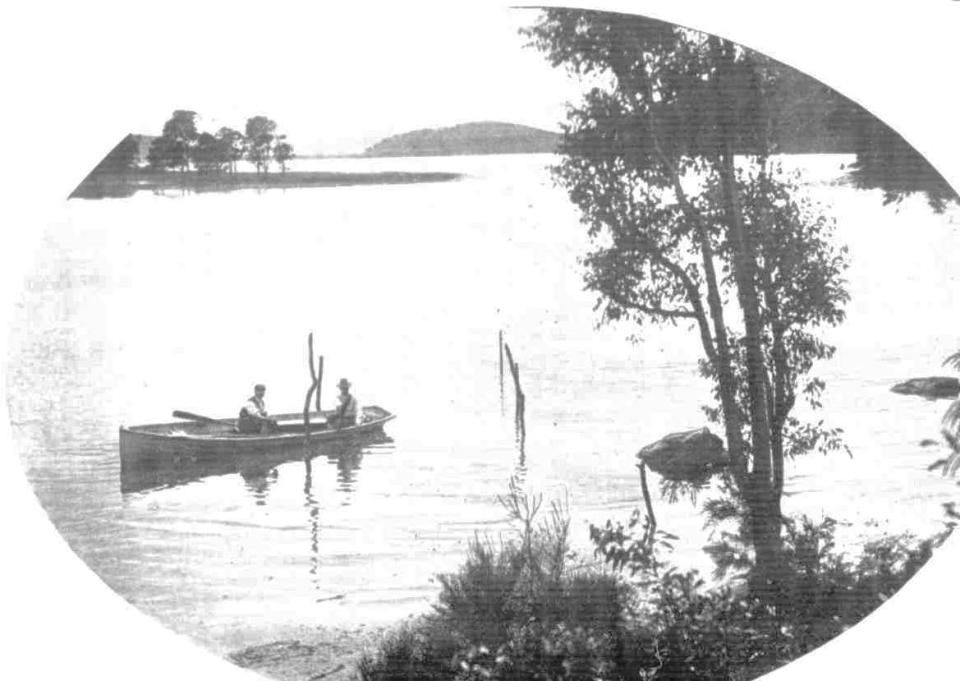
THE BASIN, BARRANJOEY. 1903 The Sydney Mail and New South Wales Advertiser
This shows how wide the entrance to The Basin was and why steamers may have been able to access the 'Inner Basin' or 'Blind Cove' as shown in the 1883 sketch above.
A FAVOURITE HOLIDAY RESORT
THE BASIN, BROKEN BAY
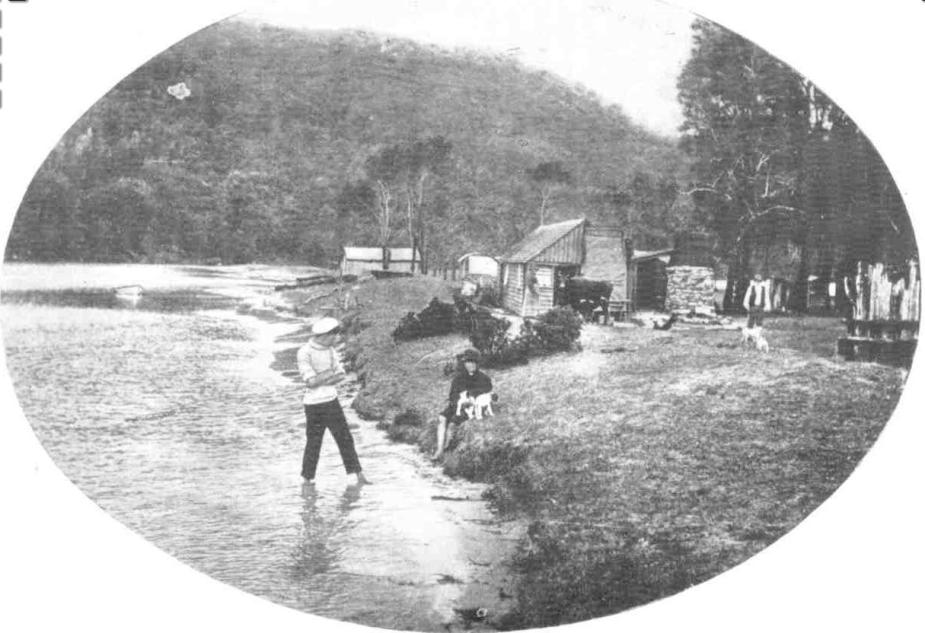
A FISHERMAN'S HOME AT THE BASIN, WHERE MRS. MORRIS HAS RESIDED FOR 37 YEARS.
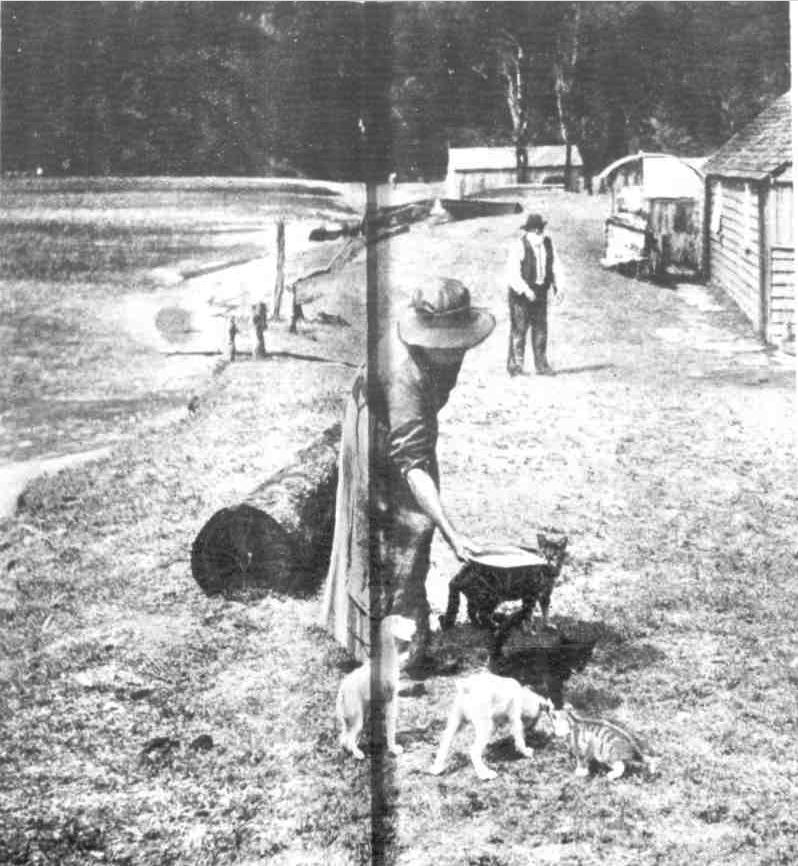
MRS. MORRIS AND HER PETS.
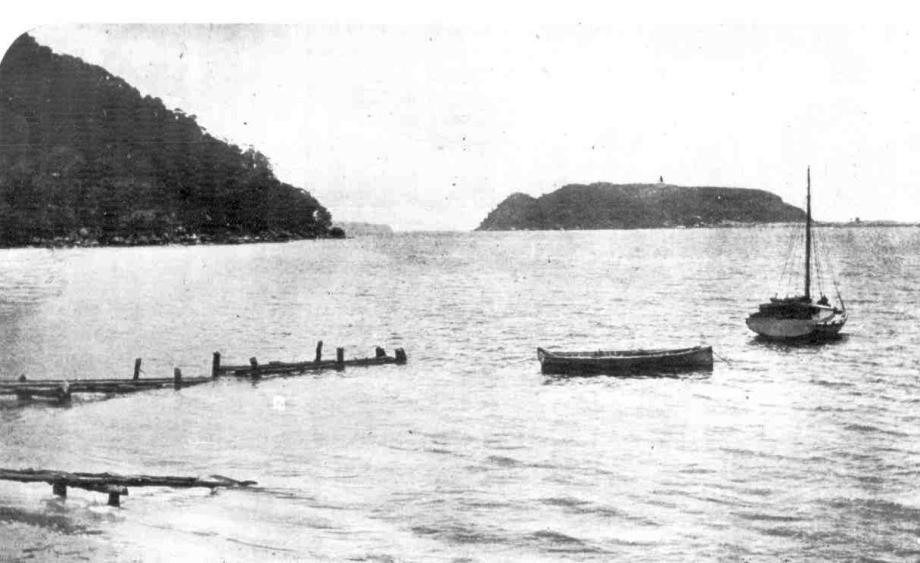
ENTRANCE TO THE HAWKESBURY RIVER. -THE BARRANJOEY LIGHTHOUSE.
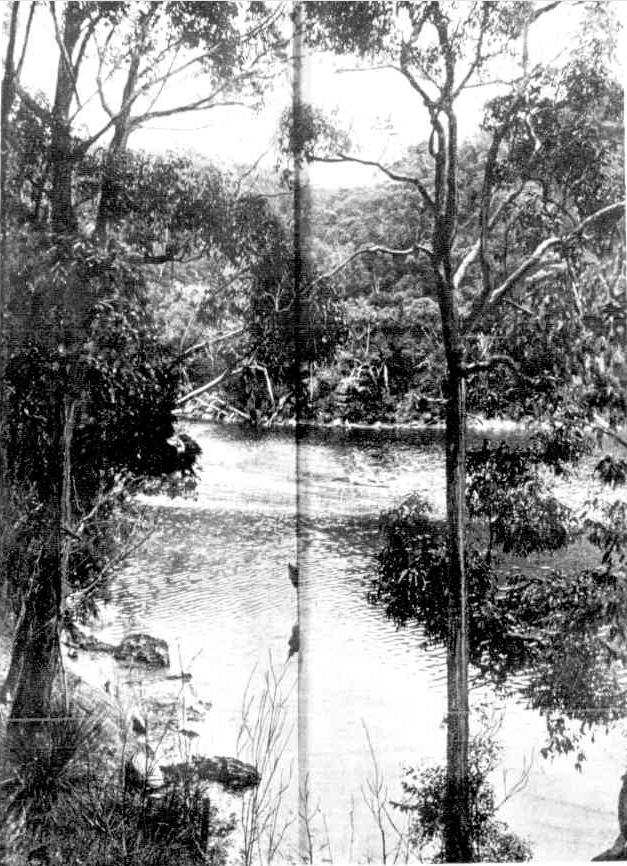
HEAD OF THE BASIN. THE BASIN, BROKEN BAY, NEW SOUTH WALES.
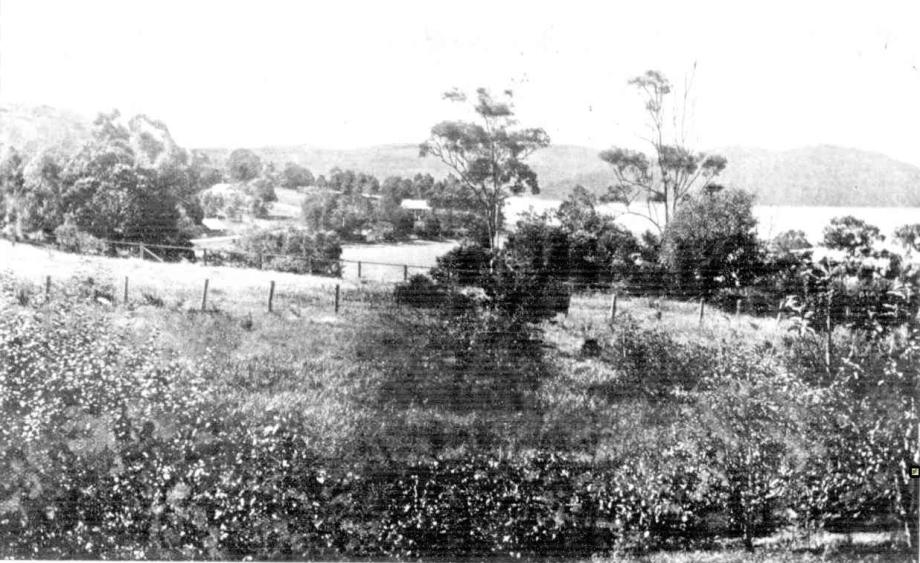
BAY VIEW, PITTWATER. (possibly included here as the photographer was transported to The Basin from the Bayview Wharf)
AN IDEAL CAMPING GROUND, HAWKESBURY RIVER.
A FAVOURITE HOLIDAY RESORT. (1903, December 30). The Sydney Mail and New South Wales Advertiser (NSW : 1871 - 1912), , p. 1706. Retrieved from http://nla.gov.au/nla.news-article164902107
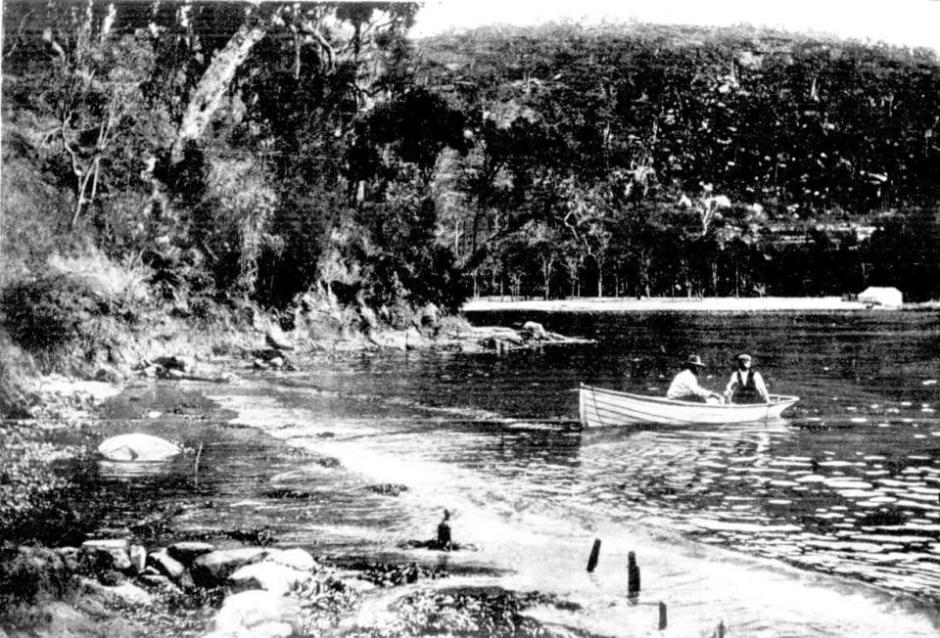
Above: "AN IDEAL CAMPING GROUND, HAWKESBURY RIVER. "1903 The Sydney Mail and New South Wales Advertiser article
Below: "GRILLED FISH FOR BREAKFAST." 1903 The Sydney Mail and New South Wales Advertiser article
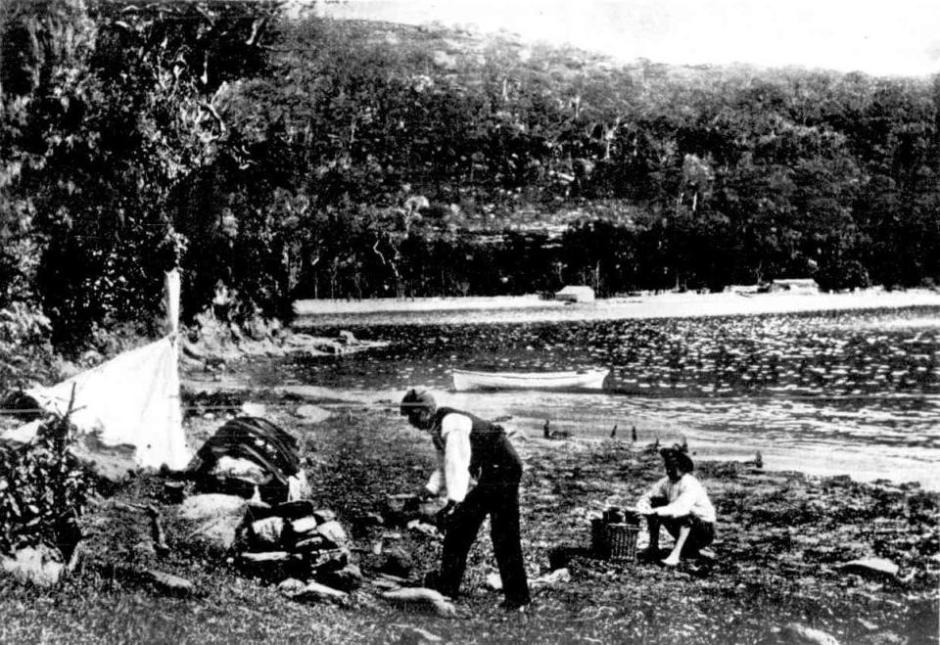
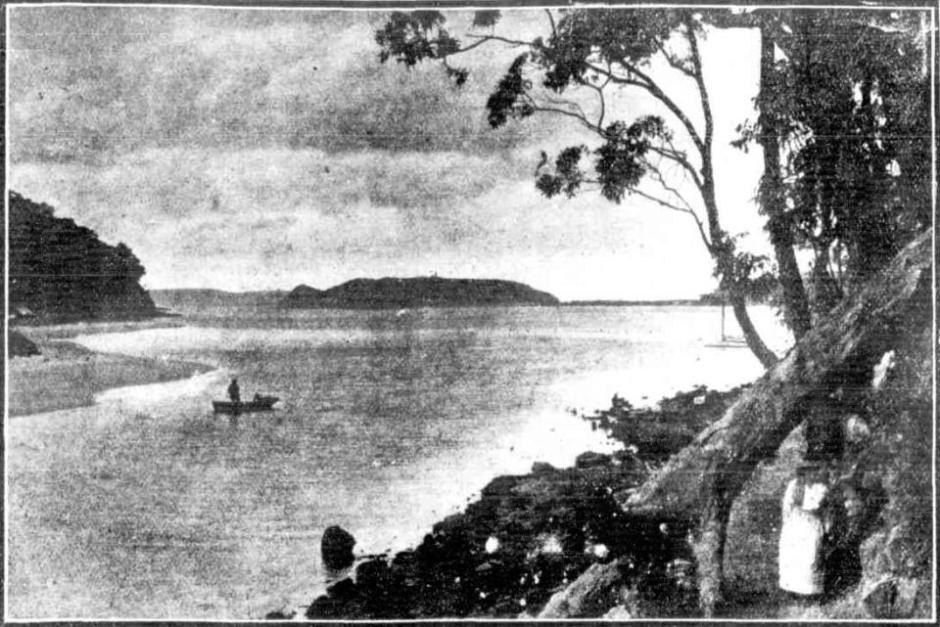
Barrenjoey, the Southern Sentinel Headland of Broken Bay.
The photograph was taken from The Basin, an inlet of Pittwater, where for years the various yachting clubs of Sydney used to rendezvous at Easter. Around The Basin; a path has been cut, leading- zig-zag fashion through a wealth of tropical foliage to the Flagstaff -Lookout at Lovett's Bay, whence a beautiful panoramic view is obtained to .the southwards. . Around the foreshores there are a .number of caves', .while the Kuring-gai Chase trustees have built fireplaces and provided shelter-sheds with tables and watertanks, making the region a delightful one for the holiday-maker..There are several ways of reaching The Basin and the surrounding' country, but the easiest from Sydney is by way of Manly and Newport. A good service of motor boats, several .of them run by returned soldiers, make regular trips.CALL OF THE AIR AND THE SEA. (1920, April 28). Sydney Mail (NSW : 1912 - 1938), , p. 9. Retrieved from http://nla.gov.au/nla.news-article159028149
YACHTSMEN'S FRIEND. THE LATE MRS. MORRIS.
Mrs. Mary Ann Morris, better known to Sydney yachtsmen as "Sally" or "Peggy," died on Monday last at her home at the Basin, Broken Bay, where she had resided for the past 63 years. Her death will be regretted by the yachting fraternity of Sydney, as her hut was a port of call for yachtsmen, when visiting Broken Bay, and they obtained from her supplies of fresh milk and eggs.
Mrs. Morris was the wife of the late Dicey Morris, and, prior to 1867, resided with her husband at Balmoral Beach. About that time her husband sold wood to Admiral Hornby's Flying Squadron during its visit to Sydney, and, with the money thus made, he built the hut at the Basin, Broken Bay, in which Mrs. Morris lived. The couple went to live in this hut at the Basin In 1868, and the husband engaged in fishing there. He did not live long after settling at Broken Bay, and his boat was acquired by a fisherman named Sam Strongman, who also lived at the Basin.
Mrs. Morris kept a few cows and fowls, and was always ready to supply visiting yachts-men with milk and eggs. She also often baked a very welcome damper for them. She adopted three lads at different times, one of whom was with her up to the time of her death. She possessed a good collection of yachting pictures, and recognised every yacht as it dropped anchor In the Basin. Her memory for faces was also very good, and she never forgot the owner of a yacht which had visited the Basin.
She was known to many as "Peggy," while to others she was better known as "Sally." Amongst the oldest members of the yachting fraternity who were well acquainted with Mrs. Morris were the late Mr. H. C. Dangar, the late Mr. James Milson, the late Mr. Grafton Ross, the late Mr. Jack Want, and the late Sir James Fairfax and their various successors, including Mr. F. J. Jackson, who owned the property at the back of the reservation which was subsequently resumed by the Kuringgai Chase Trust.YACHTSMEN'S FRIEND. (1921, June 9 - Thursday).The Sydney Morning Herald (NSW : 1842 - 1954), , p. 9. Retrieved from http://nla.gov.au/nla.news-article15960831
"PEGGY' MEMORIAL
The memorial. In the form of a sundial, erected by Sydney yachtsmen- at "The Basin," Pittwater, to the late Mrs. Morris, well known to all visitors to Broken Bay as "Peggy" will be unveiled at noon tomorrow (Easter Sunday) by Mr. Alfred G. Milson. A large fleet of yachts and cruising craft journeyed to tho Bay for tho Easter holidays, and a good muster of yachtsman is expected at the function. Mr. Paul Ross, commodore R.P.A. Y.C.. is hon, treasurer to the fund, and will be pleased to receive further contributions, as the amount already subscribed is far from sufficient to cover expenses. "PEGGY' MEMORIAL (1922, April 16). The Sun (Sydney, NSW : 1910 - 1954), , p. 7. Retrieved from http://nla.gov.au/nla.news-article223948591
PEGGY OF THE BASIN.
A sundial mounted on a trachyte pedestal was unveiled as a memorial to the late Mrs. Morris at The Basin, Pittwater, Broken Bay, on Easter Sunday by Mr. Arthur Milson, of the Royal Sydney Yacht Squadron, in the presence of a number of yachtsmen, by whom the funds for its erection were subscribed. Mrs. Morris, who was known to and respected by sailing men as Peggy, lived at The Basin for many years, and was a general favorite. She made it her business and pleasure in life to see to. the comfort of the campers at that favored spot, and her death last year was a great loss to frequenters of the place. PEGGY OF THE BASIN. (1922, April 26).Referee (Sydney, NSW : 1886 - 1939), , p. 5. Retrieved from http://nla.gov.au/nla.news-article127924554
IN HONOUR OF 'SALLY.'
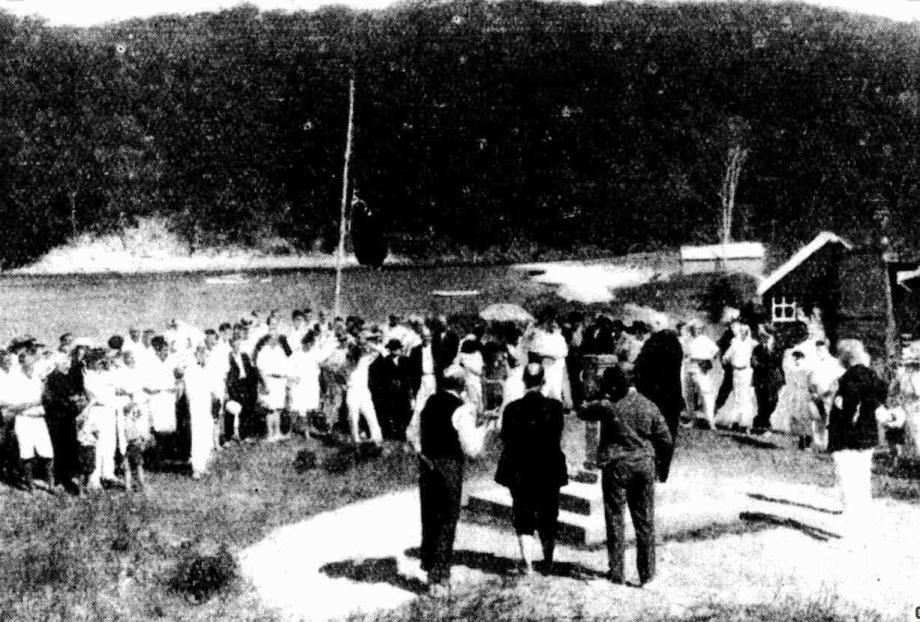
At the Basin, Broken Bay, recently, a sun-dial was unveiled by Mr. A. G. Milson in the presence of a large number of boating men in honour of the late Mrs. Morris ('Sally'), who for: very many years was a friend of the yachtsmen who visited that beautiful spot-. No title (1922, May 10). Sydney Mail (NSW : 1912 - 1938), , p. 32. Retrieved from http://nla.gov.au/nla.news-article169770154
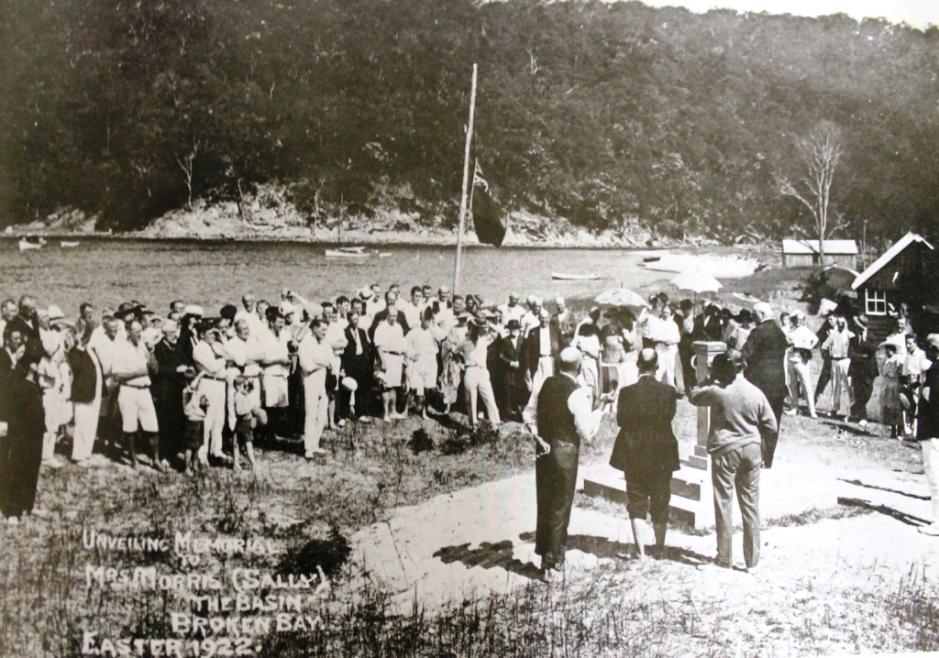
Unveiling Memorial to Mrs. Morris (Sally) - The Basin, Broken Bay - Easter 1922.
SCENES AT THE MOUTH OF THE HAWKESBURY RIVER (N.S.W.).
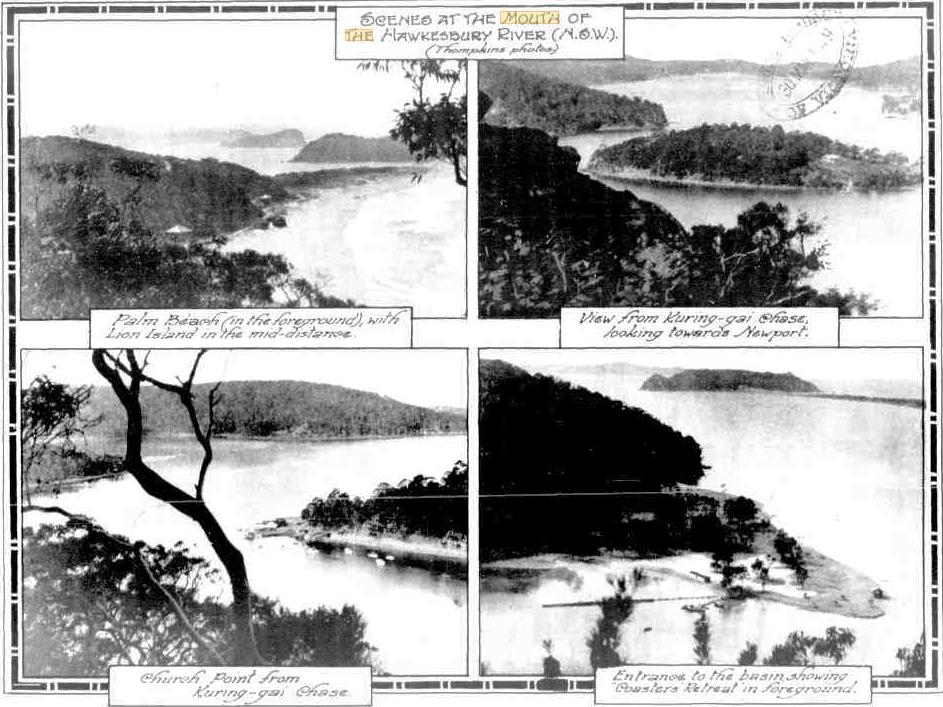
(1929, March 30). The Australasian (Melbourne, Vic. : 1864 - 1946), p. 66 (METROPOLITAN EDITION). Retrieved from http://nla.gov.au/nla.news-article140820173
A Fracas that shows a shift in the envisioned future uses of The Basin, once mostly inaccessible to many, now slated to become a more public-friendly place with Mrs. Morris gone. There was also, if there were 20+ yachts and boats visiting in 1885 with four people at least aboard each, amounting to around 100 visitors, and increased waste and sewerage problem that would only have multiplied in the decades betweem, and possibly the reason behind Dr. Stiles having a septic tank put in at Little Mackeral in 1939;
INNER BASIN, PITTWATER.
The objection raised by yachtsmen to the Kuring-gai Chase Trust's proposal to close the Inner Basin, Pittwater, against yachts and launches, and to reserve it for the exclusive Use of bathers, evoked the reply from the trustees that they had been driven reluctantly to consider such a proposal by the action of yachtsmen themselves. The basin is almost entirely enclosed, and there is practically no scour by the tides. Sanitary conveniences have been provided on shore by the trustees, but, it is stated, the obvious requirements of the situation have been ignored by most owners of craft using the basin. The result has been to create within the pool so serious a nuisance that the only alternative appears to be the closing of the basin altogether. Before reaching a final decision, the trustees intend to confer with the committee of the Pittwater Yacht Club. INNER BASIN, PITTWATER. (1934, November 12). The Sydney Morning Herald (NSW : 1842 - 1954), p. 4. Retrieved from http://nla.gov.au/nla.news-article17138900
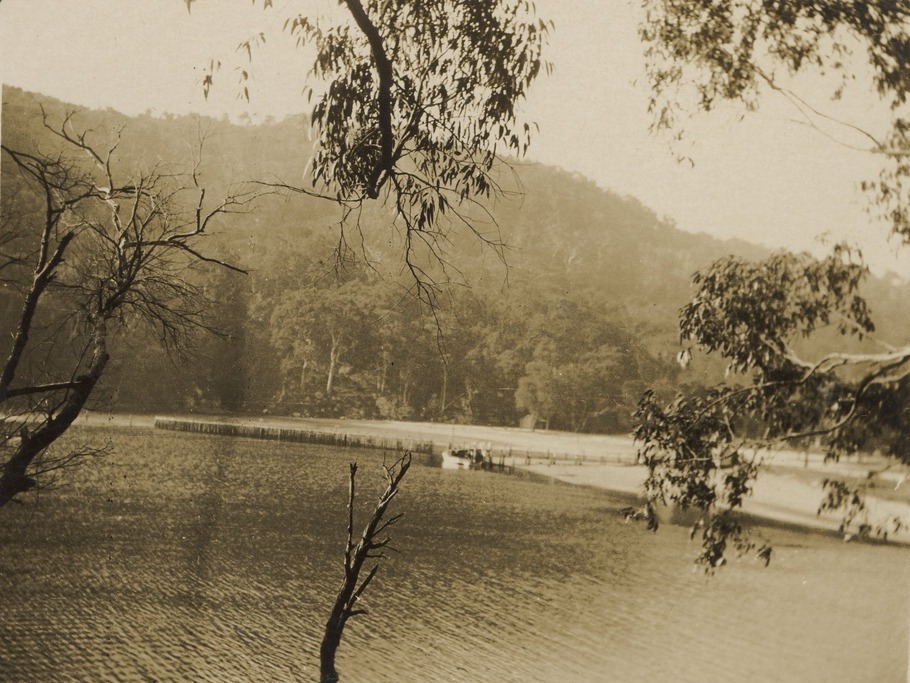
"The Basin Swimming pool Pittwater" - "Looking across water towards bushland rising in background, fence visible across surface of water." Title continues: "The fence is to keep the sharks out." [ca. 1926-ca. 1928].by Gladys E. Moss, 1900-1950, photographer. "The Basin; Pittwater" - Title inscribed on album page beneath image.- Courtesy State Library of Victoria, Image No. :701711210
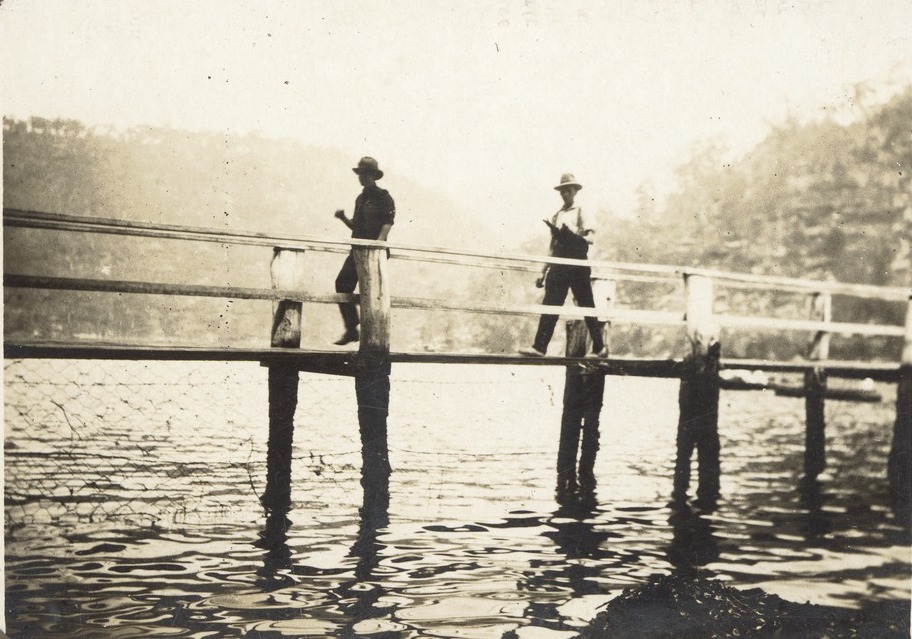
"Looking along water towards two men walking across wooden bridge". Inscribed on album page next to image: "The netting under the footbridge keeps the sharks from the bathing-pool on this side. The rock in the foreground is jagged with oysters." [ca. 1926-ca. 1928].by Gladys E. Moss, 1900-1950, photographer. "The Basin; Pittwater" - Title inscribed on album page beneath image. Courtesy State Library of Victoria - also described as 'an inlet of Cowan creek' for Image No.: 701711211
THE BASIN, PITTWATER.
Mr. A. D. Walker, commodore of the Royal Motor Yacht Club, Broken Bay branch, said yesterday that opposition was being expressed to the proposed closing, by the Kuring-gai Chase Trust, of the Basin, Pittwater. More than 200 yachtsmen and their crews attended a meeting of protest, and a petition had been sent .to the Minister for Lands. Many public bodies, and aquatic clubs had expressed opposition. He had received copies of many letters sent to the Minister, objecting to the trust's proposed action.
Mr. Walker said that during the Christmas holidays his club appointed a committee to investigate statements made by Mr. Orchard, chairman of the trust, about yachtsmen polluting the Basin. It found that the allegations were Incorrect, and that large parties were swimming in the baths without complaints of any kind. The committee discovered that the trust granted permits for a number of .well-conducted camps on the flat, for which It charged 5/ a tent a week. THE BASIN, PITTWATER. (1935, January 8). The Sydney Morning Herald (NSW : 1842 - 1954), p. 10. Retrieved from http://nla.gov.au/nla.news-article17137390
A SHARK-PROOF FENCE. TO THE EDITOR OF THE HERALD.
Sir,—Mr. R. B. Orchard's proposal to close the basin at Pittwater to navigation would be better understood if his critics would go, as I have done, to the Lands and Navigation Departments and examine his scheme, as disclosed by the letters from the Trust. This gentleman would appear to have the goods all right. A bridge and ingenious shark-proof fence are to span the entrance. The fence will have movable sections for ingress and egress of small boats (Mr. Orchard even mentions pleasure launches in the "Herald" to-day) and what is more interesting than anything else, is the introduction of the principle of the spurious coin machine some-where, because a boat can be admitted and a shark rejected by the one and the same movement. Mr. Orchard does not reveal the secret of his invention, but the letter assures the Minister that "this beautiful stream" will thus be converted into "a safe swimming area." The letter indicates the commercialisation projects to follow the installation of the shark-proof fence, and thus we find that money, and not pollution and skin diseases, is at the root of the trouble.
I am, etc.,
D. WHITE.
Hon. Sec. Pittwater Basin Defence of The Basin, Jan. 9. Committee. A SHARK-PROOF FENCE. (1935, January 10). The Sydney Morning Herald (NSW : 1842 - 1954), p. 5. Retrieved from http://nla.gov.au/nla.news-article17141446
PITTWATER BASIN.
Conference Called.
In the hope of securing an amicable settlement of the dispute over the proposed closing of the inner basin at Pittwater, the Minister for Lands (Mr. Buttenshaw) has arranged a conference of the interests concerned. It will be attended by three members of the Kuring-gai Chase Trust, and one representative each from the Royal Sydney Yacht Squadron, the Royal Motor Yacht Club, and the Pittwater Basin Defence Committee, with the Minister as chairman.
The secretary of the Pittwater Basin Defence Committee (Mr. D. White) said yesterday that although he and other members of the committee opposed the Trust's scheme they realised that the trustees were acting in good faith. PITTWATER BASIN. (1935, January 19).The Sydney Morning Herald (NSW : 1842 - 1954), p. 12. Retrieved from http://nla.gov.au/nla.news-article17128236
TO CONFER - Pittwater Closure
The honorary secretary of the Parks and Playgrounds Movement (Mr. C. E. W. Bean), said to-day that the Minister for Lands had informed him that he was calling a conference of the trustees of Kuring-gai chase, and three representatives of yacht clubs and other objectors to the proposed closing of the Inner basin at Pittwater. Pollution of the water is the reason for proposing to close the basin. Yachting bodies, supported by the movement, have asked the trustees to keep the basin open In the Interests of the boating public. TO CONFER (1935, February 8). The Sun (Sydney, NSW : 1910 - 1954), p. 11 (FINAL EXTRA). Retrieved from http://nla.gov.au/nla.news-article230271797
PARKS AND PLAYGROUNDS.
Pittwater Basin Discussed. The Parks and-Playgrounds Movement yesterday decided to co-operate in any solution of the problem of the alleged pollution of the ' Pittwater Basin, and to ask the trustees of the area to preserve and perpetuate the primitive beauty of the Basin.
The chairman (Mr. A. J. Small) said motor, boat owners and yachtsmen should suggest how the nuisance might be abated. There was no doubt that pollution occurred.
Mr. D. White (Pittwater Basin Defence Committee) said that the Basin was a refuge for yachtsmen and others, and the committee was opposed to its closure as suggested by the trustee. He understood that petrol pumps were to be erected, and Norfolk Island pine-trees were to be planted in the area, and his committee opposed that spoliation of the primitive beauty of the foreshore. Mr. D. G. Stead said that, while pine- trees were very beautiful, they would be out of place at the Basin. PARKS AND PLAYGROUNDS. (1935, February 14). The Sydney Morning Herald (NSW : 1842 - 1954), p. 5. Retrieved from http://nla.gov.au/nla.news-article17160432
The Thomas And Priscilla Wilson Family
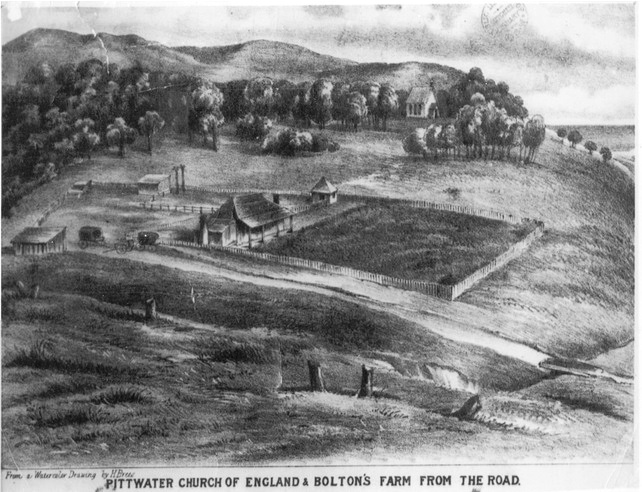 A History of the Original St John’s Cemetery
A History of the Original St John’s CemeteryPittwater,%20N.S.W.,%20ca.%201887-1890%20%20photographer%20unknown.jpg?timestamp=1521936153018)
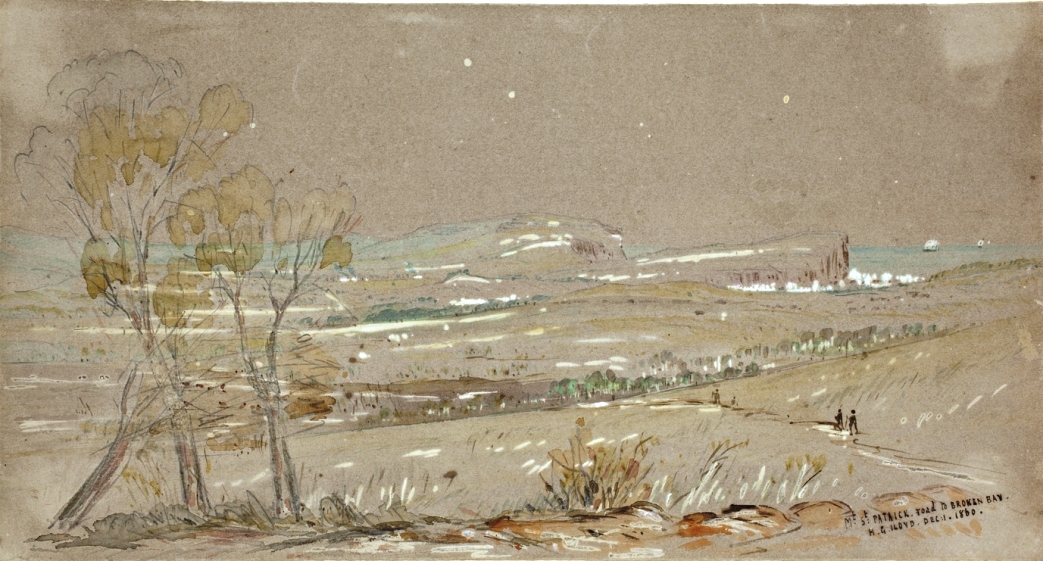
References And Extras
100 Year Old Heritage-Listed Pittwater Home Midholme Receives A New Breath Of Life
17 Oct 2014 - Pittwater Council - recorded in Pittwater Online News Community News October 2014
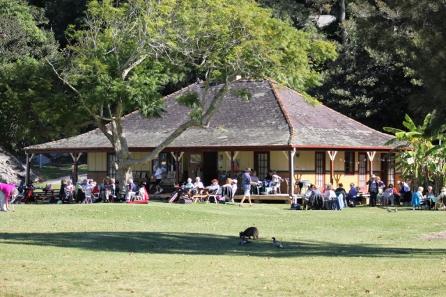 When Midholme was built in the early 1900s, few could envisage it still being ‘alive and kicking’ in 2014 – thanks to conservation work carried out by skilled Pittwater Council trades staff.
When Midholme was built in the early 1900s, few could envisage it still being ‘alive and kicking’ in 2014 – thanks to conservation work carried out by skilled Pittwater Council trades staff.
Midholme is the main homestead at Currawong, at the northern end of Pittwater, accessible only by water. The beautiful home comprises four bedrooms, two bathrooms, a spacious kitchen, dining and lounge rooms overlooking stunning views. Interestingly, there’s a difference of opinion about the actual date Midholme was built – but it’s generally believed to have been constructed around 1911.
But the home needed significant conservation work. The $500,000 project came about through the generosity of the Friends of Currawong and Pittwater Environmental Foundation who funded the project. Work began at Midholme on 28 July and completed just nine weeks later.
Midholme was constructed on more than 120 sandstone piers, which required the expertise of a structural engineer. Some of the works undertaken included:
-Refurbished verandah
-Replaced north, south and eastern deck
-New verandah posts
-New hardwood timber stairs
-Refurbished interior wall, floor, ceiling and door finishes
-Refurbished bathrooms, kitchen and laundry.
- Roof re-slated using slate imported from Wales, to match originals.
- New ant caps installed to more than 120 sandstones piers.
Council staff worked alongside other skilled local tradesmen to ensure the project was completed on time and within budget. .
Wherever possible, the original materials were retained and restored. Where materials were badly dilapidated, they were replaced with new ones to match the original as closely as possible.
At times, the conservation work provided numerous challenges.
“Firstly, we needed to get all material and staff to site by barge. Plus, there were challenges associated with the heritage characteristic of the property, and the evolving nature of the work,” said Donald Gibson, Principal Officer, Building Services.
Pittwater Mayor Jacqueline Townsend said the restoration works at Currawong were a real testament to the high quality of workmanship applied and the teamwork between Friends of Currawong, Pittwater Environmental Foundation, council staff and contractors.
“Everyone involved took enormous pride to ensure the conservation works were completed to a very high standard, ensuring this unique heritage property will still be around for many decades to come.”
Midholme is now available for hire and is a beautiful place for a family holiday or a romantic getaway!
For more information: www.currawong.com.au

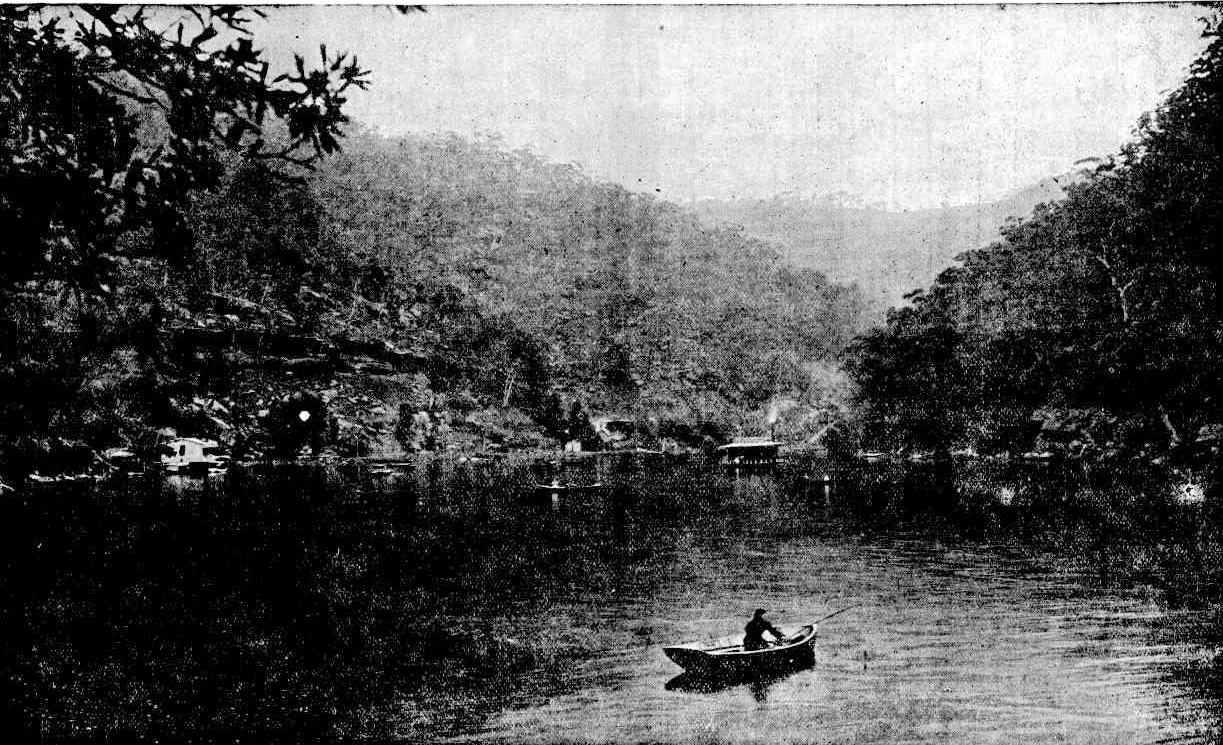
Pittwater: Lovely Arm of the Hawkesbury
By NOEL GRIFFITHS
I HAVE before me a map of Pittwater, showing every bay and point, every beach and wharf and creek. This much-used map is not crowded with detail, but is just sufficiently complete to satisfy all the requirements of an imaginative mind. There is, in fact, all the material for the background of a novel— aboriginal lore, tales of pioneers, of piracy and smuggling, hidden treasure, shipyards and sailing races.
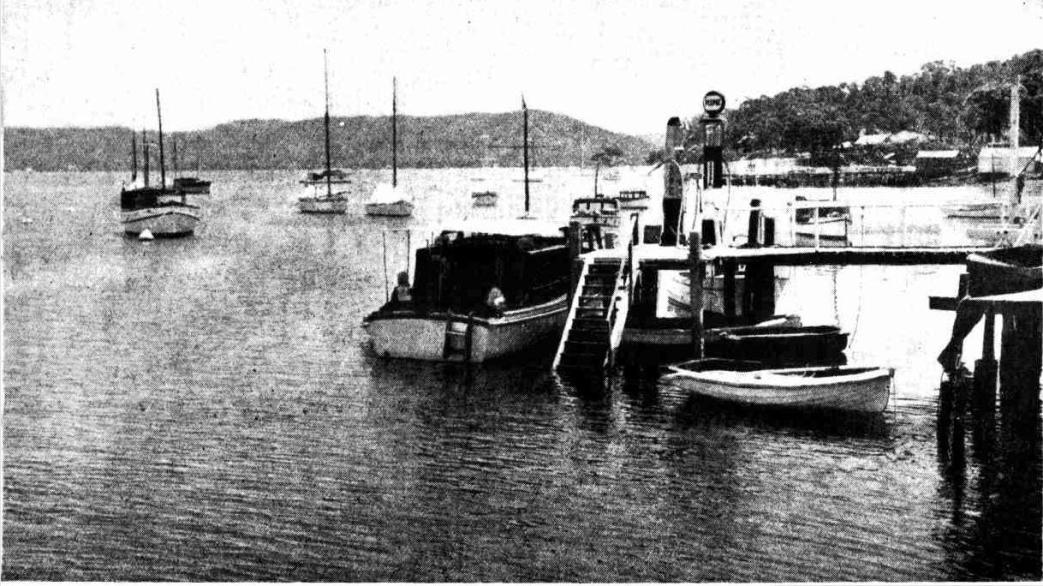
The pier at Pittwater, local 'headquarters' of the yachting and sailing fraternity.
SEE, here at the mouth of Broken Bay, is Lion Island, officially known as 'Mount Elliott,' but its more popular name will live after the other is forgotten because of the island's amazing resemblance to a lion couchant. And here is Barrenjoey. Where the well constructed lighthouse now stands with its fixed white light, visible for fifteen miles, there was once only afire basket and a tall white pillar.' At that time smugglers crept round into Pittwater, for it was easy to discharge contraband there and send it to Sydney without paying duty. So serious did this illegal traffic become that, after the detection of a vessel aptly named the Fair Barbarian engaged in, this illicit trade, a Customs officer was stationed on the .inner beach near the headland to report suspicious happenings. To bluff intending smugglers, this ingenious officer constructed a tall wooden soldier equipped with a drawn sword, to suggest, armed vigilance, but, alas, an irate skipper mistook the intention and hurriedly put ashore to 'rescue' the redcoat who was signalling in distress.
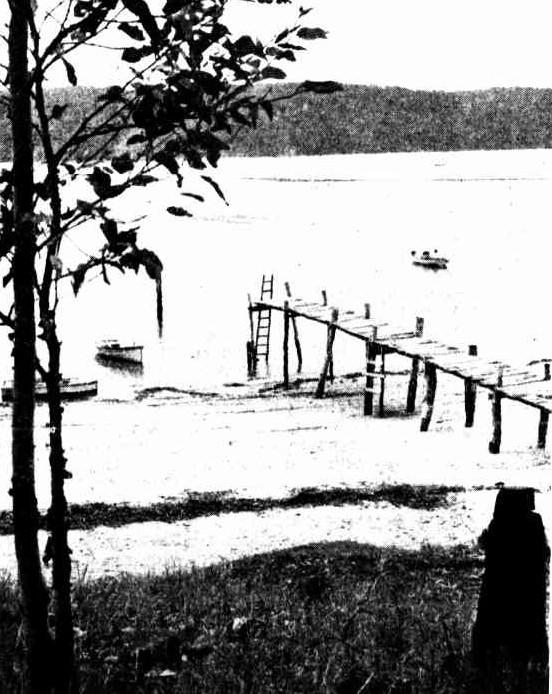 IT is hard to believe that in this serenely beautiful spot piracy preceded smuggling, yet we are told by Collins in his 'Account of the English Colony at –Port Jackson' that in September, 1797 —
IT is hard to believe that in this serenely beautiful spot piracy preceded smuggling, yet we are told by Collins in his 'Account of the English Colony at –Port Jackson' that in September, 1797 —
'A boat, the largest and best in the Colony, belonging to the government, was, on her passage to the Hawkesbury, whither she was carrying a few stores, taken possession of by a part of the boat's crew, being at the same time boarded by a small boat from the shore, the people in which seized her and put off to sea, first landing the coxswain and three others, who were unwilling to accompany them, in Pitt Water in Broken Bay.
These men proceeded overland to Port Jackson, where they gave the first information of this daring and 'piratical transaction.' But there are earlier historical references to Pittwater even than that.
In fact, in Governor Phillip’s first despatch from the settlement at Port Jackson to Lord Sydney he recounts how on 2nd March, 1788, he set off to explore Broken Bay, about twenty miles north, in an urgent search for land suitable for cultivation, and came across: '. . . . the finest piece of water I ever saw and ' which I honoured with the name of Pitt Water.
* Wm. Pitt the younger was at that time Prime Minister of England. It would contain the navy of Great ' Britain'.
RIGHT: A Paradise for the boating man and the fisherman, yet near enough to the city to be easily accessible, Pittwater is a much frequented resort in holiday-time.
Phillip described in this despatch his encounters with the natives, one of whom proved friendly and helpful, .. but when Phillip chided him with the theft of a spade 'this destroyed our friendship in a moment and seizing a spear he came close up to me, poised it and appeared determined to strike.'
But Phillip fixed him firmly with his gaze, for he chose 'rather to risk the spear than fire on him,' so that at last the native capitulated and, dropping his spear, left.
When the natives discovered that Phillip was minus a top tooth there was a great clamour, and the loss gave him some merit in their eyes, because the forcible removal of one of their own front teeth was an indication that they had attained manhood and the status of warrior.
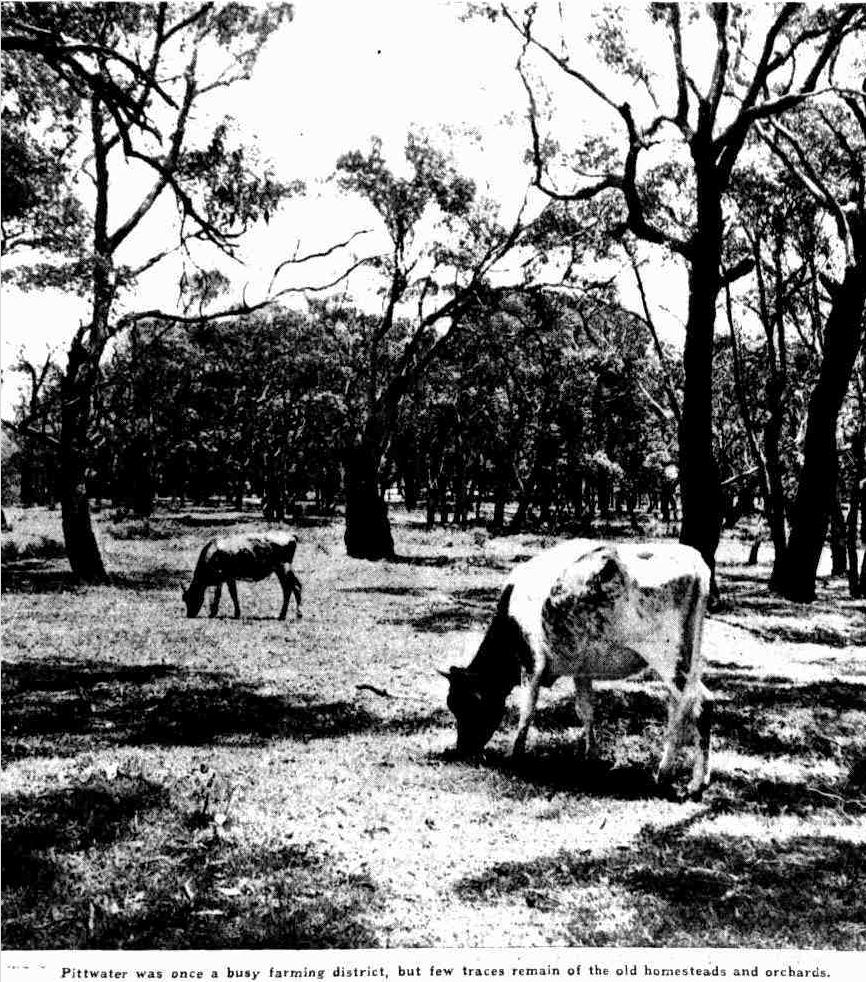
Pittwater was once a busy farming district, but few traces remain of the old homesteads and orchards.
LONG after the district was settled the aborigines proved troublesome, and present-day residents whose grandparents pioneered it describe how the 'Barrenjuee' tribe roamed the bush by day, calling at lonely bark and split-log shanties when the husband was away, demanding flour and tobacco of some lonely girl-mother who kept a musket near the door for her protection. At night these black marauders 'bandicooted' the crops of potatoes and stole the settlers 'maize. Slowly vanishing memorials to this large and troublesome tribe are their rock carvings on the headlands of Kuring-gai Chase and their middens, great heaps of oyster, whelk and cockle shells.
As the settlements on the Hawkesbury flourished, so Pittwater grew in importance. It was a port of call for vessels bound for Sydney. Mails came from the north, via Gosford and Brisbane Water, to the wharf at Newport. Farms on the foreshores produced grain, vegetables, and butter. Shipbuilding began to rival farming in importance. There were shipyards at Stoke 's Point, Scotland Island and McCarr's Creek. On Scotland Island, so it is recorded, is buried a three-legged pot full of 'holey' dollars, hidden by two men who came down the river in a stolen boat, laden with booty. These men, it is said, were arrested at Pittwater and sent back to confinement, never to return to retrieve their loot.*
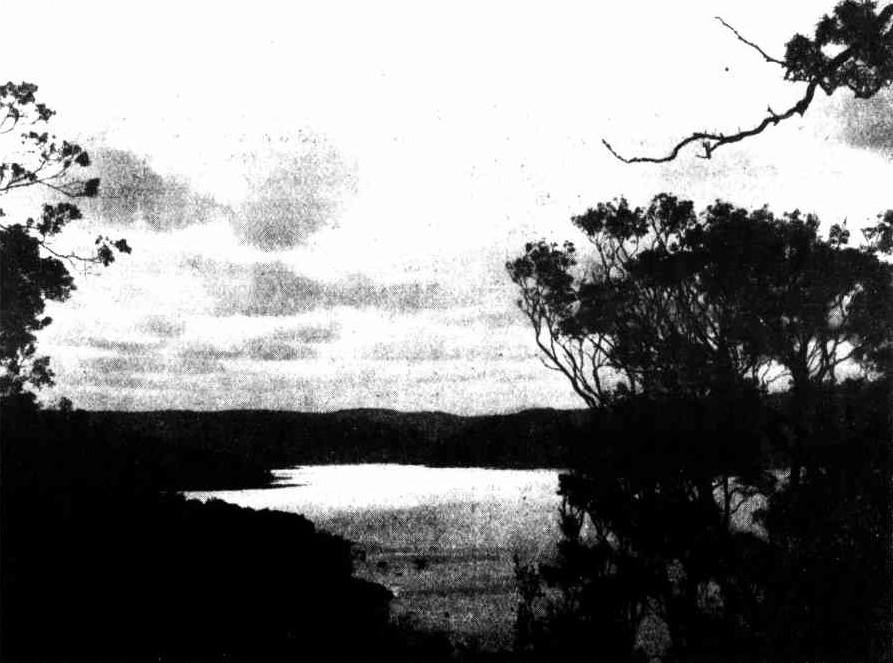
When the sun is setting behind Pittwater Nature is seen in one of her most peaceful moods.
PITTWATER has lost most of its economic importance since those stern days when sloops were tediously built on the different points and great logs of timber were hauled from the nearby woods, when there was a salt works on 'Salt Pan' Creek and Ah Chuey ran a flourishing fish-drying business near Careel Bay. But it has gained a new importance. Boats are still built on its foreshores — luxurious pleasure craft in sheds crammed with a wonderful assortment of masts, chains, canvas, spars, paint, and cordage. And in those peaceful, secluded retreats boats are being scraped, cradles made, masts repaired, and sweet-running engines overhauled. Here are sunburnt men who carry on the traditions of a century and more who, if not lineal descendants, are worthy successors of the stout-hearted pioneers; men like Gus, the Swede, who lives on his launch and occasionally signs on for a cruise to the Barrier Reef — a man of Viking strain, holder of a mate's certificate, too old now for an active life, but who can't escape the lure of lapping water beside a boat or the tang of fresh salt breezes in his nostrils.
Then there's Billie ? , who has fished the length of Pittwater for forty years or more, who knows every bend and nook of it and can read its every mood. When a southerly blows and ruffles its surface he is dull and listless, but when a sharp 'nor'-easter' sweeps across the hills he is all activity — fish will be plentiful and in no time he'll be chugging past Great Mackerel Beach with its two uncharted graves, past the Basin, past Soldiers' Point. Soon the bucket in his launch will be filled with bream and leather-jacket, flounder, mackerel and whiting. He'll 'threadle' his hooks as he goes along, with juicy earthworms from near the mangrove swamps, for the fishing itch is in his makeup and will be till he dies.
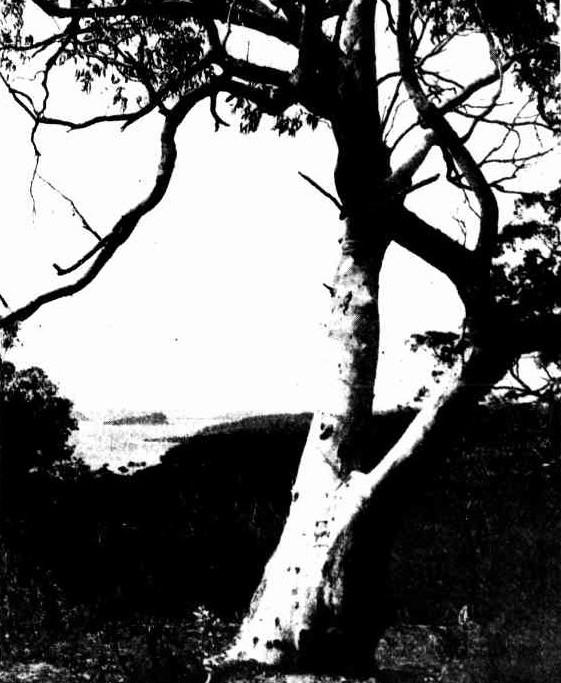 RIGHT : A view with a glimpse of Lion Island (officially known as Mount Elliott). This is one of the most beautiful vistas on the coast.
RIGHT : A view with a glimpse of Lion Island (officially known as Mount Elliott). This is one of the most beautiful vistas on the coast.
THE great occasion of the year at Pittwater is the annual regatta, when the week-end cottages nestling cosily at the water's brink all spring to life. The hundreds of neat white craft, riding at their moorings, assume a new activity. Boats are pushed out and sails unfurled, hydroplane engines 'rev.' and roar, and soon the blue stretch is graced with gleaming sails which sweep majestically past while luxurious cruisers plough importantly towards the club house. On them will be seen happy, charming girls and sun-bronzed men and older men with grizzled hair and keen blue eyes, and robust, clean-limbed youngsters growing up in the best traditions of yachting and cruising and a glorious outdoor life. Aye, it is a kind retreat, this beautifully clothed arm of the Hawkesbury. It is good to tramp its shores, to penetrate the almost virgin bush where wattle, waratahs, Christmas bells and flannel flowers luxuriate ;to lie on some green, shady slope and watch the sun scintillating on its broad expanse the while large white clouds float majestically high above tall and stately trees. It is the peaceful playground of a busy city; meet place to retire to adjust one's perspective when work grows wearisome and details assume quite wrong proportions.
A sunset behind Church Point, the vicious tug and flurry of a fish on the end of a well-baited line, the strong caress of wind against a sail, the tense moment after the skipper's curt 'prepare to go about,' bump and scrape of fender against wharf — and life resumes its zest again.*
AS I have said, it is an ideal background for a book... if you can resist the lure of it and settle down to work.
The serene appearance of Pittwater to-day conveys no suggestion of its turbulent past, though visitors blessed with imagination do not find it difficult to conjure up visions of long - dead smugglers, pirates, and revenue, officers. Some bad men plied these waters in the 'good old days,' and the local bushland was peopled by warlike blacks, who harried the settlers and stole everything they could lay hands on.
*See Vol. VI. (1920) Inl. and Proceedings of the Royal Australian Historical Society.
Pittwater:. (1938, December 28). Sydney Mail (NSW : 1912 - 1938), p. 12. Retrieved from http://nla.gov.au/nla.news-article166525296

J. WILSON AND G. HASTIE, Who won the Men's Double Sculls Handicap. They had a start of 8 seconds. C. Holding and T. Blackwood (3(1 seconds) were second. The All Yachts Handicap at the Pittwater Regatta was won by Magic (16 min.), with Scotia (15 min.) second and Bona (scr.) third. The handicap for boats 18ft and under was won by Planet (scr.), Murcia (scr.) being second and Query (9 min.) third. THE DAVIS CUP CONTEST: WON BY AMERICA. (1921, January 5). Sydney Mail (NSW : 1912 - 1938), p. 24. Retrieved from http://nla.gov.au/nla.news-article159037882
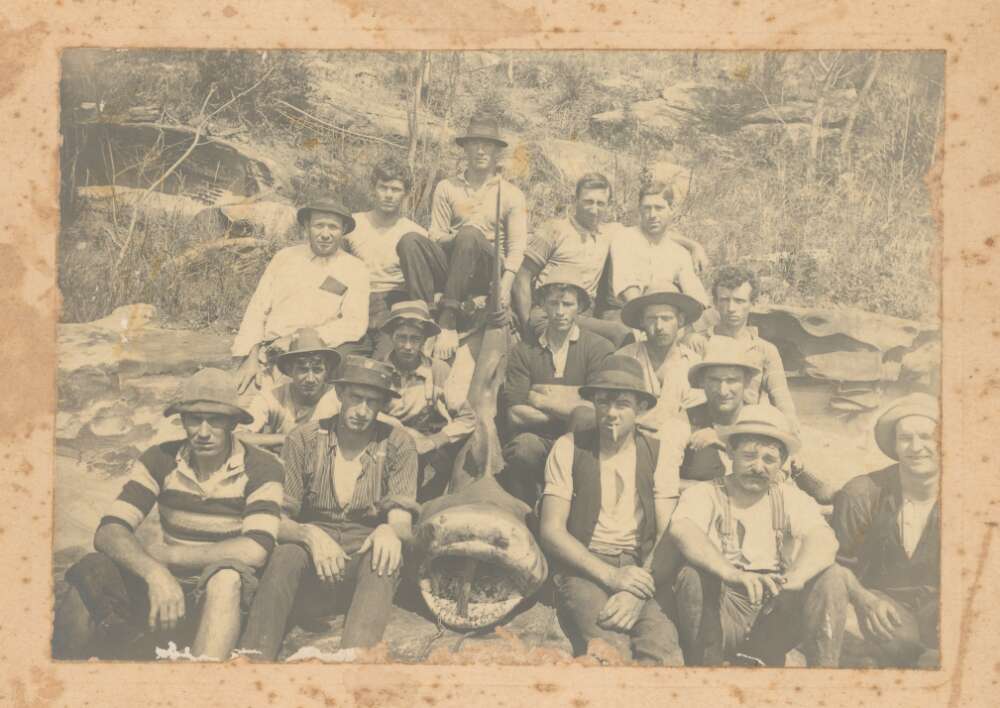
Previous History Pages:
Marie Byles Lucy Gullett Kookoomgiligai Frank Hurley Archpriest JJ Therry Sir Patrick Gordon Taylor Bowen Bungaree W. Bradley 1788 Journal Midholme Loggan Rock Cabin La Corniche La Corniche II Lion Island Bungan Beach Botham Beach Scarred Trees Castles in the Sand Dame Nellie Melba lunches at Bilgola Spring, 1914 First to Fly in Australia at North Narrabeen Mona Vale Golf Club's Annual Balls Governor Phillip camps on Resolute Beach Ruth Bedford Jean Curlewis Mollie Horseman Charlotte Boutin May Moore Neville W Cayley Leon Houreux Frederick Wymark Sir Adrian Curlewis Bilgola Heron Cove Mullet Creek Shark Point Woodley's Cottage A Tent at The Basin Collin's Retreat-Bay View House-Scott's Hotel Bilgola Cottage and House The First Pittwater Regatta Women Cricketers Picnic Filmed In Pittwater Governor Phillip's Barrenjoey Cairn Waradiel Season The Church at Church Point Governor Phillip's Exploration of Broken Bay, 2 - 9 March 1788 Petroglyths: Aboriginal Rock Art on the Northern Beaches Avalon Headland Landmarks Steamers Part I Pittwater Aquatic Club Part I Woody Point Yacht Club Royal Motor Yacht Club Part I Dorothea Mackellar Elaine Haxton Neva Carr Glynn Margaret Mulvey Jean Mary Daly Walter Oswald Watt Wilfrid Kingsford Smith John William Cherry George Scotty Allan McCarrs Creek Narrabeen Creek Careel Creek Currawong Beach Creek Bushrangers at Pittwater Smuggling at Broken Bay An Illicit Still at McCarr's Creek The Murder of David Foley Mona Vale Outrages Avalon Camping Ground Bayview Koala Sanctuary Ingleside Powder Works Palm Beach Golf Course Avalon Sailing Club Mona Vale Surf Life Saving Club Palm Beach SLSC Part I - The Sheds Warriewood SLSC Whale Beach SLSC Flagstaff Hill Mount Loftus Pill Hill Sheep Station Hill S.S. Florrie S.S. Phoenix and General Gordon Paddlewheeler MV Reliance The Elvina Florida House Careel House Ocean House and Billabong Melrose-The Green Frog The Small Yacht Cruising Club of Pittwater Canoe and I Go With The Mosquito Fleet - 1896 Pittwater Regattas Part I - Dates and Flagships to 1950 Shark Incidents In Pittwater The Kalori Church Point Wharf Bayview Wharf Newport Wharf Palm Beach Jetty - Gow's Wharf Max Watt Sir Francis Anderson Mark Foy John Roche Albert Verrills Broken Bay Customs Station At Barrenjoey Broken Bay Water Police Broken Bay Marine Rescue - Volunteer Coastal Patrol Pittwater Fire-Boats Prospector Powder Hulk at Towler's Bay Naval Visits to Pittwater 1788-1952 Pittwater's Torpedo Wharf and Range Naval Sea Cadets in Pittwater S.S. Charlotte Fenwick S.S. Erringhi P.S. Namoi S.Y. Ena I, II and III Barrenjoey Headland - The Lessees Barrenjoey Lighthouse - The Construction Barrenjoey Broken Bay Shipwrecks Up To 1900 Barrenjoey Light Keepers Douglas Adrian Ross Newport SLSC 1909 - 1938 Part I Overview North Narrabeen SLSC - The Formative Years First Naval Exercises by New South Wales Colonial Ships –The Wolverene at Broken Bay Bilgola SLSC - the First 10 years North Palm Beach SLSC A History of Pittwater Parts 1 and 4 Pittwater Regattas - 1907 and 1908 Pittwater Regattas - 1921 - The Year that Opened and Closed with a Regatta on Pittwater Pittwater Regatta Banishes Depression - 1933 The 1937 Pittwater Regatta - A Fashionable Affair Careel Bay Jetty-Wharf-Boatshed Gow-Gonsalves Boatshed -Snapperman Beach Camping at Narrabeen - A Trickle then a Flood Pittwater's Parallel Estuary - The Cowan 'Creek' RMYC Broken Bay Boathouse and Boatshed Barrenjoey Boat House The Bona - Classic Wooden Racing Yacht Mona Vale Hospital Golden Jubilee - A Few Insights on 50 Years as a Community Hospital Far West Children's Health Scheme - the Formation Years The First Scotland Island Cup, Trophy and Race and the Gentleman who loved Elvina Bay Royal Motor Yacht Club Broken Bay NSW - Cruiser Division History - A History of the oldest division in the Royal Motor Yacht Club Royal Motor Yacht Club Broken Bay Early Motor Boats and Yachts, their Builders and Ocean Races to Broken Bay, the Hawkesbury and Pittwater The Royal Easter Show Began As the Royal Agricultural Society of New South Wales The Mail Route to Pittwater and Beyond The Wild Coachmen of Pittwater - A Long and Sometimes Bumpy Ride on Tracks Instead of Roads The Fearless Men of Palm Beach SLSC's Surf Boats First Crews - A Tale of Viking Ships, Butcher Boats and Robert Gow's Tom Thumb 'Canoe' Furlough House Narrabeen - Restful Sea Breezes For Children and Their Mothers From Telegraphs to Telephones - For All Ships at Sea and Those On Land Mona Vale Training Grounds - From Lancers on Horses to Lasses on Transport Courses Fred Verrills; Builder of Bridges and Roads within Australia during WWII, Builder of Palm Beach Afterwards Communications with Pittwater Ferries To Pittwater A History of Pittwater - Part 4: West Head Fortress Pittwater's Lone Rangers - 120 Years of Ku-Ring-Gai Chase and the Men of Flowers Inspired by Eccleston Du Faur Early Pittwater Launches and Ferries Runs Avalon Beach SLSC - The First Clubhouse Avalon Beach SLSC The Second and Third Clubhouses From Beneath the Floorboards at Hyde Park Barracks Bungaree Was Flamboyant Andrew Thompson - 'Long Harry' Albert Thomas Black John Collins of Avalon Narrabeen Prawning Times - A Seasonal Tide of Returnings Oystering in the Pittwater Estuary - Oyster Kings and Pearl Kings and When Not to Harvest Oysters Yabbying In Warriewood Creeks Eeling in Warriewood Creeks (Includes A Short History of community involvement in environmental issues/ campaigns in and around Narrabeen Lagoon - 1974 to present by David James OAM) Eunice Minnie Stelzer - Pittwater Matriarchs Maria Louisa Therry - Pittwater Matriarchs Manly's Stone Kangaroo, Camera Obscura, First Maze and 'Chute' - Fun Days in Sea Hazes from 1857 On A Salty Tale of the Kathleen Gillett – A Small Reminder and Celebration of Our 70th Sydney to Hobart Katherine Mary Roche - Pittwater Matriarch Sarah A. Biddy Lewis and Martha Catherine Benns Pittwater Matriarchs A Glimpse of the Hawkesbury.(1883) By Francis Myers. Illustrated by J C Hoyte Pittwater's New Cycle Track of 1901 Manly to Newport The Rock Lily Hotel Barrenjoey House The Pasadena Jonah's St Michael's Arch The First Royal Visitor to Australia: the Incident at Clontarf March 12th, 1868 Pittwater: Lovely Arm of the Hawkesbury By NOEL GRIFFITHS - includes RMYC Wharf and Clareville Wharf of 1938 + An Insight into Public Relations in Australia George Mulhall First Champion of Australia in Rowing - First Light-Keeper at Barranjuey Headland Captain Francis Hixson - Superintendent of Pilots, Lights, and Harbours and Father of the Naval Brigade The First Boat Builders of Pittwater I: the Short Life and Long Voyages of Scotland Island Schooner the Geordy The Marquise of Scotland Island Boat Builders of Pittwater II: from cargo schooners and coasters to sailing skiffs and motorised launches 130th Anniversary of Australia’s Sudan Contingent - Local Connections of the first Australians to Serve The Riddles of The Spit and Bayview/Church Point: sailors, boat makers, road pavers and winning rowers The Currawong: Classic Yacht VP Day Commemorative Service 2015 – at Avalon Beach RSL Cenotaph: 70th Anniversary Captain T. Watson and his Captain Cook Statues: A Tribute to Kindness Pittwater Reserves: The Green Ways; Hordern or Wiltshire Parks to McKay Reserve – From Beach to Estuary Pittwater Reserves, The Green Ways: Clareville Wharf and Taylor's Point Jetty Pittwater Reserves: The Green Ways Bilgola Beach - The Cabbage Tree Gardens and Camping Grounds - Includes Bilgola - The Story Of A Politician, A Pilot and An Epicure by Tony Dawson and Anne Spencer Pittwater Reserves - The Green Ways: Mona Vale's Village Greens a Map of the Historic Crown Lands Ethos Realised in The Village, Kitchener and Beeby Parks Pittwater Regatta Air Race Trophies: from 1934 and 1935 and The Pilot Who Saved William Hughes Pittwater Reserves: The Green Ways; Bungan Beach and Bungan Head Reserves: A Headland Garden Early Pittwater Paddlers, Oarsmen, Rowers and Scullers: The Green Family Elanora - Some Early Notes and Pictures The Stewart Towers On Barrenjoey Headland Early Pittwater Paddlers, Oarsmen, Rowers and Scullers: The Williams Family Early Cricket in Pittwater: A small Insight Into the Noble Game from 1880's On The Pacific Club's 2016 Carnival in Rio Fundraiser for Palm Beach SLSC Marks the 79th Year of Support Bert Payne Park, Newport: Named for A Man with Community Spirit Early Pittwater Paddlers, Oarsmen, Rowers and Scullers: The Fox Family Surf Carnivals in February 1909, 1919, 1925, a Fancy Dress Rise of Venus and Saving Lives with Surfboards Early Pittwater Paddlers, Oarsmen, Rowers and Scullers: The Paddon Family of Clareville Mermaid Basin, Mona Vale Beach: Inspired 1906 Poem by Viva Brock Early Pittwater Schools: The Barrenjoey School 1872 to 1894 The Royal Easter Show and 125th Celebration of the Hawkesbury Agricultural College: Farmers Feed Us! The Newport School 1888 to 2016 Pittwater's Ocean Beach Rock Pools: Southern Corners of Bliss - A History The Royal Botanical Garden Sydney Celebrates 200 Years in 2016 The Porter Family of Newport: Five Brother Soldiers Serve in WWI Church Point and Bayview: A Pittwater Public School Set on the Estuary The Basin, Pittwater: A Reprise: Historical Records and Pictures Lighthouse Cottages You Can Rent in NSW - Designed or Inspired by Colonial Architect James Barnet: Includes Historic 'Lit' Days records Bayview Days Ships Biscuits - the At Sea Necessity that Floated William Arnott’s Success Mona Vale Public School 1906 to 2012 St Johns Camden: 176th And 167th Anniversaries In June 2016 - Places To Visit Narrabeen Lagoon And Collaroy Beachfront: Storms And Flood Tides Of The Past Avalon Beach Public School - A History Muriel Knox Doherty Sir Herbert Henry Schlink Shopping And Shops In Manly: Sales Times From 1856 To 1950 For A Fishing Village Sir Edward John Lees Hallstrom Royal Prince Alfred Yacht Club's 150th Sailing Season Opening: A Few Notes Of Old A Few Glimpses Into Narrabeen's Past Beauties Dr. Isobel Ida Bennett AO Taronga Zoo 100th Birthday Parade: 1000 Reasons To Celebrate War Memorials: Manly, October 14, 1916 Avalon Beach Golf Links: Pittwater Fields of Dreams II War Memorials - Mona Vale, November 14, 1926 Annie Wyatt Reserve Palm Beach: Pittwater Fields of Dreams II Tumbledown Dick Hill Waratah Farm and Narrabeen Plums: Pittwater Fields of Dreams II Mark Twain, J.F. Archibald And Henry Lawson - Did They Go Fishing At Narrabeen In The Spring Of 1895?: Probably! Bayview Baths Centenary Celebration in November 2016 hosted by Bayview-Church Point Residents Association Dr. Jenny Rosen's Historical Timeline Palm Beach RSL - Club Palm Beach Celebrating 60 Years Early Years At Narrabeen: The Plane Sailing Day Of 1944 The Five Ways- Six ways Junction; Kamikaze Corner - Avalon Bilgola RPAYC Season on Pittwater and coming of Jubilees in Summer of 1938 Local Explorers’ Modern Day Discovery - Governor Phillip’s First Landing site, Campsite and contact with Local Aborigines in Pittwater: The Case for West Head Beach Rendezvous Tea Rooms Palm Beach: links with 1817 and 1917: Palm Beach Stores and Fishermen St Cloud's Jersey Stud: Elanora Heights: Pittwater Fields of Dreams Roderic Quinn's Poems And Prose For Manly, Beacon Hill, Dee Why And Narrabeen A Historic Catalogue And Record Of Pittwater Art I – Of Places, Peoples And The Development Of Australian Art And Artists: The Estuary Celebrating World Radio Day: The Bilgola Connection With The Beginnings Of Radio In Australia Emile Theodore Argles - champion of all Australians without a Voice - a very funny Satirist, Manly Poet and Pittwater Prose Writer and Litterateur Sydney Harbour Bridge Celebrates 85th Birthday: A Few Pittwater Connections Victor James Daley: A Manly Bard And Poet who also came to Pittwater and the Hawkesbury Let's Go Fly A Kite !: Palm Beach Whistling Kites Inspire sharing How to Make Standard, Box and Whistling Boy Kites - school holidays fun with a bit of Australian and Narrabeen history Clifton Gardens Mosman: An Eternal Green and Saltwater Space, and Of Many Captains Historic Catalogue And Record Of Pittwater Art I: Coastal Landscapes and Seascapes The Bayview Tea Gardens 1920 to 1923 When Run By Thomas Edward And Annie Newey (Nee Costello) An Australian and RPAYC Commodore Aboard an America's Cup Challenger of 1908 and 1914 Henry Lawson - A Manly Bard and Poet: on his 150th Birthday Historic Catalogue and Record of Pittwater Art I: Artists and Artists Colonies Opportunity To Visit Submarine War Grave Renews Memories Of 75 Years Ago Early Bayview - insights courtesy Don Taylor and Margaret Tink Retracing Governor Phillip's Footsteps Around Pittwater: The Mystery Of The Cove On The East Side Early Pittwater Surfers – Palm Beach I: John (Jack) Ralston and Nora McAuliffe Patrick Edward Quinn: A Manly Prose writer who gave us A Run To Pittwater (1889) and Songs for the Federation of Australia Avalon Beach North Headland Indian Face 'Falls': An Everchanging Coastline Nautical Treasure In Suburbia Pittwater: Where the Wild Flowers Are 1917 to 2017 Narani, Captain Cook Celebrations At MVPS And Elvina Bay Memories - 1970s Early Pittwater Surfers – Palm Beach I: Alrema Becke Queen of Palm Beach The Beachcombers Surfboard Riding Club: Palm Beach, NSW - 1959 to 1961 Year Dated Beer Bottles Found at Taylors Point Early Pittwater Surfers: Avalon Beach I - 1956: The Carnival That Introduced The Malibu Surfboard and Being Able To SurfAcross A Wave Face - Reg Wood Anecdotes Mona Vale SLSC To Be Completely Renewed + A Few Insights from the Pages of the Past The Firecracker That Closed Narrabeen Hotel By Ken Lloyd (Savalloyd) + Narrabeen Hotel Licence Transfer Trail Traces Of WWII Coast Watchers Found On Bangalley Headland - 1942 Early Warriewood SLSC insights per Norman Godden + Extras The Macphersons of Wharriewood and Narrabeen: the photo albums of William Joseph Macpherson Angophora Reserve Avalon 1938 Dedication Avalon Preservation Association History by Geoff Searl Pittwater Summer Houses: a 1916 Palm Beach Cottage and Palm Beach House Pittwater YHA: Some History WWI Historian Presents New Film On The Beersheba Charge At Avalon Beach Historical Society Meeting Newport's Bushlink 'From The Crown To The Sea' Paths: Celebrating Over 20 Years Of Community Volunteer Bushcare Results Pittwater Fishermen: The Sly Family Narrabeen Exploits and Manly Community Contributors: The First Surfboat at Manly Beach Women In The Surf Life Saving Movement As Life Savers: From At Least 1910 Locally - Awarded Medals For Saving Lives From 1880 In NSW Windsor Bridge: Planned Destruction Of Historic Link With A Pittwater Connection The Rise Of The Cruising Season: A Look At Some Early Australian sailers and Local Visitor Beauties Pittwater Fishermen: Barranjoey Days Polo By The Sea 2018: Over A Hundred Years Of Loving This Game In Pittwater Australia Day Regatta Began As Anniversary Day Regatta Black Bakelite Telephone: Early Pittwater Phone Numbers Hy-Brasil, Avalon Beach - Pittwater Summer Houses Ferry Names for Emerald Class: The Gibbs-Turner Original Magic Button Pittwater Summer Houses: A Tent At Palm Beach's Governor Phillip Park 'Neath Barrenjoey Pittwater Summer Houses: The Cabin, Palm Beach - The Pink House Of The Craig Family Manly's Early Sand Sculptors: How Pennies Can Become Pounds and Found A New Art Retracing Governor Phillip's Footsteps Around Pittwater: The Mystery Of The Cove On The East Side by Geoff Searl and Roger Sayers 230th Anniversary Edit March 2018 Black-Necked Stork, Mycteria Australis, Once Visited Pittwater: Pair Shot in 1855